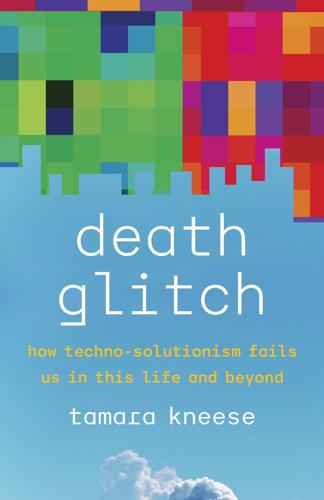
Death Glitch: How Techno-Solutionism Fails Us in This Life and Beyond
by
Tamara Kneese
Published 14 Aug 2023
Santa Fe: School for Advanced Research/University of New Mexico Press, 2022. Kneese, Tamara, and Benjamin J. Peters. “Mormon Mommies Will Never Die.” Logic Magazine (August 2019). logicmag.io/bodies/mormon-mommies-will-never-die. Krznaric, Roman. “Six Ways to Think Long-Term: A Cognitive Toolkit for Good Ancestors.” Long Now Foundation Medium post, July 20, 2020. medium.com/the-long-now-foundation/six-ways-to-think-long-term-da373b3377a4. Kunkle, Fredrick. “Virginia Family, Seeking Clues to Son’s Suicide, Wants Easier Access to Facebook.” Washington Post, February 17, 2013. www.washingtonpost.com/local/va-politics/virginia-family-seeking-clues-to-sons-suicide-wants-easier-access-to-facebook/2013/02/17/e1fc728a-7935-11e2-82e8-61a46c2cde3d_story.html.
…
This book does engage with transhumanists and other futurists who are invested in extending life spans through technology, although I spend more time addressing how people live on through everyday digital objects. Those with power and wealth can establish not just digital legacies but physical monuments like the Long Now Foundation’s 10,000 Year Clock, funded by the Amazon founder Jeff Bezos, while most people depend on corporate platforms to preserve their own legacies or those of their loved ones. Everyone dies and everyone mourns, but death is far from being the great equalizer. Instead, death sheds light on existing inequalities.
…
In addition, I talked to people in cafés in Los Angeles, Portland, Oakland, San Francisco, and Seattle. I also traveled to key locations to engage in participant observation. Unsurprisingly, given San Francisco’s status as a tech hub, my research has taken me all over the city to sites like the Internet Archive and the Long Now Foundation’s Interval Space and events like Wired magazine’s twenty-fifth anniversary festival, the 2012 Singularity Summit—an annual transhumanist conference—and the 2013 Death Salon. I traveled to the Computer History Museum in Mountain View and visited Stanford’s Silicon Valley Archives. I also traveled to Los Angeles to meet with members of the Order of the Good Death and conveners of the Death Salon.
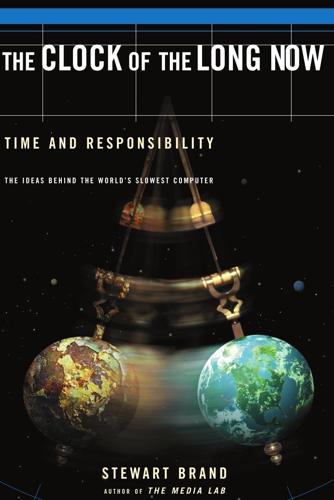
Clock of the Long Now
by
Stewart Brand
Published 1 Jan 1999
In that time no end of ideas should be tried for their fit with each other and with the Long Now mission of expanding humanity’s sense of time and responsibility. The quality of the project—the depth of its originality and the reach of its impact—will depend entirely on how it is nourished in terms of ideas, alliances and money. If you would like to participate, you can reach The Long Now Foundation via its web site at: www.longnow.org or through its headquarters in the San Francisco Presidio: The Long Now Foundation P.O. Box 29462 The Presidio San Francisco, CA 94129 Phone: (415) 561-6582 Fax: (415) 561-6297 Long Now is a 501 (c) 3 nonprofit education foundation; donations are tax-deductible (tax ID number: 68-0384748). On the web site cash gifts can be made by credit card, and there is a list of additional current needs such as particular equipment and specialized services.
…
The point, after all, is to explore whatever may be helpful for thinking, understanding, and acting responsibly over long periods of time. Manifestations of the overall project could range from fortune cookies to theme parks. For now, we will build an astonishing Clock and a unique Library and see what develops from there. Who is “we”? The Long Now Foundation was established in 1996 to foster long-term responsibility. The founding board is Daniel Hillis (co-chair), Stewart Brand (co-chair), Kevin Kelly, Douglas Carlston, Peter Schwartz, Brian Eno, Paul Saffo, Mitchell Kapor, and Esther Dyson. Hillis created Thinking Machines Inc. and its supercomputer, the Connection Machine, and is now a Fellow at Disney.
…
Peter Schwartz suggested 10,000 years as the appropriate time envelope for the project: 10,000 years ago was the end of the Ice Age and beginning of agriculture and civilization; we should develop an equal perspective into the future. Douglas Carlston noted that the institution to maintain this project will be as much of a design challenge to last one hundred centuries as the Clock or the Library. As of autumn 1998 The Long Now Foundation has an executive director (Alexander Rose), two staffers, an office at the San Francisco Presidio, and nonprofit status. The foundation is developing its funding, the web site, the working prototype of the Clock, small conferences on subjects such as “Managing Digital Continuity” (that one was at the Getty Center in Los Angeles, February 1998), conception of the Library and its initial services, and locations to build.

Whole Earth: The Many Lives of Stewart Brand
by
John Markoff
Published 22 Mar 2022
By the following summer there was enough momentum that the group decided that in addition to a clock hidden somewhere in the desert, there should be an urban wing in San Francisco that would offer higher visibility for the project. Eventually, they moved their headquarters from the Presidio to nearby Fort Mason, another converted military outpost. They settled on the Long Now Foundation, given concerns that if they called it simply Long Now Foundation, it might be assumed that it was the family foundation of a Chinese gentleman. Early on, the Long Now board met several times at Doug Carlston’s Aspen home. Alexander Rose, who had grown up on the Sausalito waterfront and known Brand since childhood, had graduated from Carnegie Mellon with a degree in industrial design and returned to the Bay Area.
…
* * * At the peak of the dot-com bubble, Silicon Valley—which had expanded to San Francisco in a burst of multimedia and then e-commerce activity—was awash in enthusiasm for technology-centric ideas for changing the world. That zeal was reflected in the Long Now Foundation’s expanding focus. The challenge was to figure out ways to get beyond dependence upon philanthropy, to come up with unique ideas that would produce revenue. Initially, Brand thought that he had come up with a brilliant moneymaking scheme to support the Long Now Foundation. “Long Bets” grew out of an impromptu workshop debate between Peter Schwartz and Amory Lovins’s wife, Hunter, over how quickly electric cars would be adopted.
…
The world was divided into fast and slow thinkers, he wrote, and the way to make the transition would be through diligence and focus: “By the end of this year, you may expect to hear an extraordinary freshman who has his studying down to a science, who cools his tests with an easygoing competence, who inspires all those who hear him with his brilliant conversation, who is accustomed to making decisions with the speed and accuracy of a well-oiled calculating machine. This will be Stew Brand, fast thinker.” Decades later he would still be thinking of the slow/fast dichotomy and its impact on society. It would be a perspective that would become instrumental in the formation of the Long Now Foundation, an organization dedicated to promoting long-term thinking. Mike Brand had counseled his brother not to focus on selecting individual courses but rather to find the best professors. One of those he recommended was a charismatic professor of religion, Frederic Spiegelberg. Brand had been more or less agnostic through his late teens, but at Stanford he had become seduced into a loose Christian mysticism by listening to Huxley and several of his professors as well as falling under the spell of Nikos Kazantzakis, the Greek novelist, socialist, and spiritual seeker.
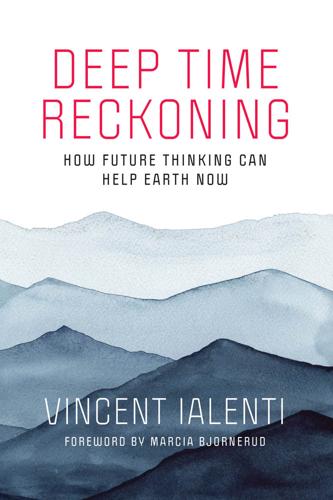
Deep Time Reckoning: How Future Thinking Can Help Earth Now
by
Vincent Ialenti
Published 22 Sep 2020
Lake Lappajärvi A crater lake in Southern Ostrobothnia, Finland, that formed over 73 million years ago after a meteor crashed into the Earth. Among Finland’s nuclear waste repository Safety Case experts, the crater became an analogue for how the country’s landscape may or may not change over the next several ice ages. Long Now Foundation Established in San Francisco in 1996, the Long Now Foundation aims to “provide a counterpoint to today’s accelerating culture,” to “help make long-term thinking more common,” and to “foster responsibility in the framework of the next 10,000 years.” This organization is known for its plans to build a clock, hundreds of feet tall, which will tick continuously for ten millennia.
…
We cannot deny the gloomy reality that from “the perspective of millions of years, the duration of our lived experience, of ‘our time,’ appears utterly inconsequential.”6 We cannot feel paralyzed by the “seeming insignificance of human purposes within the immense time-span of the universe.”7 If humans are agents of geological change, then thinking in geological timescales is now a pressing ethical imperative. We must learn to learn more and more about the Earth’s distant futures and pasts. Some have already embraced deep time learning. San Francisco’s Long Now Foundation is developing a mechanical clock to keep time for ten thousand years to help reframe the way people think and embody deep time. The Finnish Society of Bioart’s “Deep Time of Life and Art” project has organized public trips to ancient paintings found on 550-million-year-old rocks located atop Finnish Lapland’s two-billion-year-old bedrock.
…
This means tens of thousands approaching Anthropocene problems from different time spans, perspectives, and disciplines. PERSPECTIVE EXCHANGING PARLORS The Deep Time Reckoning Association could set up social clubs or conference rooms where deep time reckoners from many different fields can work, socialize, and network together. Members could, for example, attend presentations inspired by the Long Now Foundation’s monthly seminars, which strive to assemble a “compelling body of ideas about long-term thinking.” They could discuss ideas in settings akin to large universities’ alumni clubs, like the Cornell Club in New York City. Or the club could be modeled on the Cosmos Club, a private club in Washington, DC, which brings together major contributors to science, literature, public service, and art.
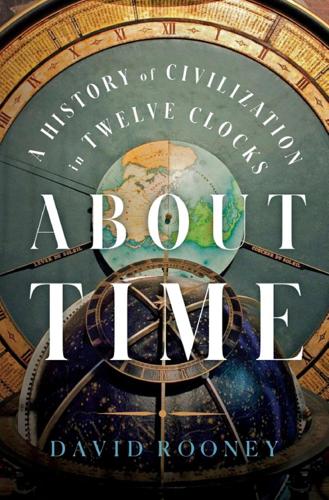
About Time: A History of Civilization in Twelve Clocks
by
David Rooney
Published 16 Aug 2021
5 Hillis’s proposal was to build “both a mechanism and a myth” in the form of a mechanical clock the size of a great monument, capable of telling time for at least 10,000 years if it was looked after and cared about by the civilizations that had custody of it. The result was a foundation, named the “Long Now Foundation,” and a project to build “The Clock of the Long Now.” The name came after the musician and composer Brian Eno suggested a concept that might extend our time horizons in a useful way. In this scheme, “now” meant the present moment plus or minus a day, while “nowadays” extended that time horizon to about ten years forward and backward.
…
As the designer of some of the world’s fastest supercomputers in the 1980s, Hillis said in the 1990s that he wanted to atone for his sins in speeding up the world by designing the world’s slowest computer for the Long Now clock. And this clock has changed my life. I first met Rose, Hillis and Brand in the year 2000, when they visited the Science Museum in London, where I worked at the time. The museum was in the final stages of building its landmark millennium display, Making the Modern World, and the Long Now Foundation had agreed to lend the prototype clock for long-term display as the final exhibit in the gallery when it opened in July. We could think of no better artifact to conclude our historical display and invite visitors to look forward long into the future. And there, after its journey from San Francisco to London, it stood.
…
In 2003, Eno made a CD which played the bell sequences for 5,000 years hence—January 7003. I have listened to it hundreds of times over the years and it always makes me stop and reflect. I wish I could hear the real thing, but that will have to wait. The conversation is building. On December 31, 1999, as the Long Now Foundation set running its prototype clock in San Francisco, the artist and musician Jem Finer began performing Longplayer, a musical composition that will play for 1,000 years before repeating. Its permanent home is a nineteenth-century lighthouse on the River Thames in east London, though it can be heard around the world, and this strange, beautiful and beguiling music enchants all those who hear it.
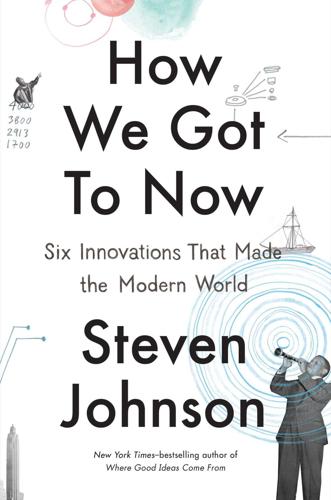
How We Got to Now: Six Innovations That Made the Modern World
by
Steven Johnson
Published 28 Sep 2014
It is an exercise in a different kind of time discipline: the discipline of avoiding short-term thinking, of forcing yourself to think about our actions and their consequences on the scale of centuries and millennia. Borrowing a wonderful phrase from the musician and artist Brian Eno, the device is called “the Clock of the Long Now.” The Clock of the Long Now The organization behind this device, the Long Now Foundation—cofounded by Hillis, Eno, Stewart Brand, and a few other visionaries—aims to build a number of ten-thousand-year clocks. (The first one is being constructed for a mountainside location in West Texas.) Why go to such extravagant lengths to build a clock that might tick only once in your lifetime?
…
Wynne, Commissioner of Health, to Study Noise in New York City and to Develop Means of Abating It (Academy Press, 1930) 33: Chicago History Museum, ICHi-09793, Photographer: Wallis Bros. 34: Chicago History Museum, ICHi-00698, Creator unknown 37, 38, 39: Wellcome Library, London 40: Courtesy The Clorox Company 41: Gates Foundation 42: Courtesy Texas Instruments 46: © Steven Vidler / Corbis 48: Courtesy Philip T. Priestly, from Aaron Lufkin Dennison: An Industrial Pioneer and His Legacy © 2009, NAWCC Inc. Thanks also to the NAWCC Library and Nancy Dyer. 49: Library of Congress, Prints & Photographs Division (LC-DIG-ppmsca-34721) 51: © Hans Reinhart / Corbis 52: Courtesy The Long Now Foundation. Photograph by Chris Baldwin 54: © Natural History Museum / Mary Evans Picture Library 58, 65: © Science Photo Library 59: © Corbis 61: © H. Armstrong Roberts / ClassicStock / Corbis Index The page numbers in this index refer to the printed version of this book. The link provided will take you to the beginning of that print page.
…
B., 103 Claude, Georges, 226–28, 230, 231 Clean rooms, 159, 159–61 Clocks, 166–68 atomic, 186–88 digital, 42 pendulum, 6, 170, 171, 176, 184, 185 Clorox bleach, 151, 153 Coevolution, 4, 22 Columbia Railroad, 180, 182 Columbia University, 66, 186 Columbus, Christopher, 168 Comets, 43 Computers, 29–30, 38–39, 42, 100, 158, 161, 236, 254 Bell Labs and, 102, 108 graphic interfaces of, 65 for inventory management, 234 nineteenth-century precursor of, 245–46, 248, 249, 250, 252 time measurement and, 185, 192 waveforms converted to sound by, 96 See also Microchips; Microprocessors Congress, U.S., 6 Constantinople, fall of, 10, 14, 17 Contested Waters (Wiltse), 149 Copernican universe, 186 Corning Glassworks, 30 Cotton Club (Harlem), 110, 118 Craigslist, 7 Cretaceous age, 3 Crystals, 190 ice, 19, 70 quartz, 19, 184–86 silicon dioxide, 13 (see also Glass) Cuba, 210–11 Curie, Jacques, 184 Curie, Marie, 190 Curie, Pierre, 184, 190 Cutler, David, 148 Daguerreotypes, 217 Dark Ages, 198 Darwin, Charles, 4, 253 Darwinism, 3 Davy, Humphry, 206 Decibels, 114–15 De Forest, Lee, 106–8, 109, 110, 113, 116, 117 De Landa, Manuel, 1–2 Democratic Party, 81–83 De Moleyns, Frederick, 20 Dennison, Aaron, 176, 177, 178, 180, 181 Descartes, René, 41 Dialectical materialism, 40 Dickens, Charles, 138, 175, 220 Disease, 62, 129, 134, 154, 211 bathing seen as cause of, 137 Civil War deaths from, 143 germ theory of, 136, 140, 142, 152, 156, 158 waterborne, 148 (see also Cholera) Draggoo, Vaughn, 237 Dreiser, Theodor, 60 Dubai, 83 Dürer, Albrecht, 31, 35 DVDs, 7 Dynamics, 166, 184 Dysentery, 129, 143 Eastern time zone, 183 Edgartown (Massachusetts), 202 Edison, Thomas Alva, 9, 100, 149, 207 development of lightbulb by, 206, 208–12, 213, 215, 218, 250 phonograph invented by, 92, 97, 252 Edison Electric Light Company, 212 Egypt, ancient, 14, 164, 199, 216–17 Einstein, Albert, 189 Ekirch, Roger, 200 Elizabeth I, Queen of England, 138 Elevators, 99, 100 Epidemics, 129, 140, 143, 154 Ellington, Duke, 110, 111, 112, 118 England, 48, 138, 170, 217 Greenwich Mean Time in, 182 industrial revolution in, 172–74 Longitude Prize in, 168 in World War I, 120 See also London Enlightenment, 90 Eno, Brian, 192 Erie Canal, 60 Essex (ship), 202 Etruscans, ancient, 165 Evolution, 2–5, 22, 40, 42 Eyeglasses, see Spectacles Factories, 61, 151, 158, 174 artificial light in, 200, 224 for neon lights, 230 time measurement and, 185 See also Mills Fahrenheit scale, 65 Favelas, 129, 154 Favorite (ship), 49, 54 Feaster, Patrick, 96 Federal-Aid Highway Act (1956), 6 Fessenden, Reginald, 119–20, 121, 122 Feynman, Richard, 9–10 Fiberglass, 29, 31 Fiber-optic cables, 30, 143 Fielding, Henry, 241 Fisheries Association, 72 Fitzgerald, Ella, 112 Five Points (Manhattan), 220, 223, 225 Flash Gordon (comic strip, movies and television series), 232, 234 Flatiron Building (New York), 100 Fletcher, Henry, 114 Florence Baptistry, 32 Florida, 80, 83 Ford, Henry, 74, 149 Ford Motor Company, Rouge Plant, 175 Fossil fuels, 42, 54, 203–4 France, 67, 87–88, 90, 118, 137, 217, 228 See also Paris Franchise businesses, 228, 230 Franklin, Benjamin, 201–2 Frigidaire, 76 Frozen food, 72, 73, 74–76, 75, 84 naturally occurring, in Labrador, 68, 70, 71, 253 Fuller, George Warren, 144 Gaedicke, Johannes, 218, 225 Galileo Galilei, 10, 25, 38 pendulum clock invented by, 164–66, 168, 169, 170, 171, 184, 190, 194 García Márquez, Gabriel, 50 Gardiner, Robert, 48 Gaslight, 106, 203, 217 Gates, Bill and Melinda, Foundation, 156, 157 General Conference on Weights and Measures (Paris, 1967), 163–64, 187 General Electric, 69 General Foods, 74 General Seafood, 74 Geochemistry, 43 Georgia, 67 Germany, 104, 120, 218 Germ theory, 136, 140, 142, 152, 156, 158 Gertner, Jon, 100, 232 Giovannoni, David, 96 Glasses, see Spectacles Glassmaking, 14, 17–19, 42, 184 See also Lenses; Mirrors; Silicon dioxide Global trade, 46, 60, 170, 172 Google, 7, 174, 250 Gorrie, John, 62, 63, 65–66 Gould, Gordon, 232 GPS (Global Positioning System), 189 Great Pyramid of Giza, 216–17 Greenwich Mean Time (GMT), 182, 183 Gutenberg, Johannes, 4, 6, 20, 22, 25, 32 Half-life, 190 Hamburg, 127 Hard Times (Dickens), 175 Harper’s Weekly, 220 Harvard University, 148, 198 Havana, 46, 48, 53 Hawaii, 37–40, 39 Heisenberg, Werner, 186 Hendrix, Jimi, 115 Hennessey, Meagan, 96 Hillis, Danny, 192 Hitler, Adolf, 114 Holiday, Billie, 112 Hollywood, 150 Homo sapiens, 191 evolution of, 40 Hooke, Robert, 22–23, illustration by, 24 microscope designed by, 26 Hoover Dam, 228 Houston, 80 How Congress Evolves (Polsby), 81 How the Other Half Lives (Riis), 223 Hughes Aircraft, 232 Hurricanes, 62 Hussey, Captain, 201 Hutchinson, Benjamin, 58 Hygiene, 137, 161 See also Bathing; Public health Ice Age, 60 “Ice House Diary” (Tudor), 48–49 Ice trade, 45–46, 48–57, 61–62, 84–85, 167, 253 climate and disruptions of, 57, 62, 65 failure of early attempts at, 49–52 Idea Factory, The (Gertner), 100 Immigrants, 58, 224 to warmer climates, air-conditioning and, 80, 83 India, 53, 55 Indiana, 180 Industrial revolution, 6, 42, 61, 170, 172–75 Infant mortality, 148, 152 Innovation, “genius” theory of, 205 Instagram, 31 Internet, 30, 112, 134 Inuits, 68, 70, 74, 253 iPod, 205, 210 Irvin Theatre, 81 Italy, 20, 37 iTunes, 250 Jack the Ripper, 134 Jacquard loom, 2 Jakarta, 83 Janssen, Hans, 22 Janssen, Zacharias, 22, 24 Japan, 36, 211 Jazz, 8, 110, 112–13 Jersey City, water supply of, 143–46, 150, 156, 158 Jobs, Steve, 209, 254 Jungle, The (Sinclair), 134–35 Jupiter, moons of, 25 Justice Department, U.S., 102 Karachi, 83 Kauffman, Stuart, 64 Keck Observatory, 38–40, 39, 89 Kelly, Kevin, 192–93 Kentucky Fried Chicken, 228 Kerosene lamps, 200, 203, 205 Khufu, 216 King, Martin Luther, Jr., 112–13 “I Have a Dream” speech, 114, 231 Koch, Robert, 141–42 Kramers, Jan, 43 Kruesi, John, 211 Labrador, 68, 70, 71, 72, 253 Lagos, 83 Lancet, The, 140 Lasers, 30, 38–39, 100, 158, 232–37 Las Vegas, 226, 227, 228–31 Latitude, 168 Lawrence Livermore Labs, 235 Leal, John, 142–46, 148, 150, 151, 154, 156, 158, 160 Learning from Las Vegas (Brown and Venturi), 230, 231 LEDs, 205, 250 Led Zeppelin, 115 Lenses, 2, 6, 8, 10, 30, 31, 41, 156, 251 camera, 25, 27, 42 lasers and, 235 microscope, 22–24, 34, 141–42 of spectacles, 2, 4, 20, 22, 27 telescope, 24–25, 34, 38 Leonardo da Vinci, 31, 34, 252 Libyan Desert, 13–14, 43 “Lightbulb moments,” 72, 198 Lightbulbs, 2, 8, 41, 103, 198, 200–201, 205–15, 218, 228 fluorescent, 200, 205 lasers and, 232–33 LED, 205, 250 neon, see Neon lights Lighthouses, 118 Limelight, 217, 225 Lippershey, Hans, 25, 38 Listerine, 151, 152 Live Aid, 114 Liverpool, 110 London, 83, 104, 127, 134, 138, 152, 154, 181, 241, 246 cholera in, 140, 141, 147 Clockmakers’ Museum in, 173 underground in, 133, 135 Longitude, 168, 172 Long Now Foundation, 192–93 Clock of, 192, 193 Los Angeles, South Central, 110 Louis XIII, King of France, 138 Louisiana, 67 Lovelace, Augusta Ada Byron, Countess of, 241–42, 243, 244–46, 248, 250–52, 255 Lovelace, William King, Earl of 241–42 MacFarlane, Alan, 34, 36 Macintosh computers, 254 Madagascar (ship), 45 Madras, 55 Magna Carta, 2 Malaria, 62 Manila, 83 Marconi, Guglielmo, 106 Mariana, Queen of Spain, 32 Marrison, W.
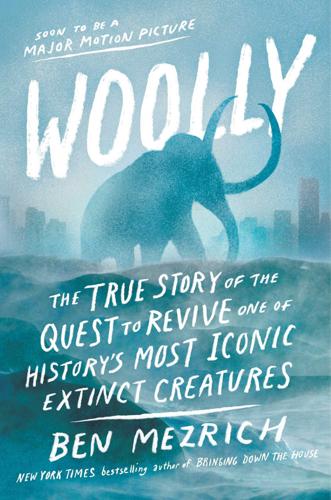
Woolly: The True Story of the Quest to Revive History's Most Iconic Extinct Creature
by
Ben Mezrich
Published 3 Jul 2017
“The intersection of nature and science. That’s where we learn to properly coexist. If we’re going to last, this is how it begins. A spider’s web.” The Whole Earth Catalogue had been the launch of a revolution, and no less a tech luminary than Steve Jobs had once likened it to “Google in print.” Brand’s current project, the Long Now Foundation, was no less ambitious. A philanthropic think tank, which Brand had created with computer scientist Danny Hillis, Long Now’s goal was to look forward over the next ten thousand years. Instead of focusing on problems in the present, the idea was to see the world on a much longer time frame. One of the Long Now’s initiatives was to create a permanent database of the world’s seven thousand known languages.
…
A aging, 62, 245 body sizes and, 259–60 Church and, 19, 209, 259–60 Dhadwar’s research on, 136–39, 141–42, 198–99, 243 Yang’s research on, 193–95, 198–99 Alta Ski Resort, 45–50, 52–55, 108 Church’s skiing at, 46–50, 54–55 DOE conference at, 52–55, 74 Arctic, Arctic Circle, 10, 33, 100, 105, 114, 242, 253–54 climate change and, 111–12 cloning Mammoths and, 191 discoveries of Mammoth carcasses in, 53, 76–78, 109, 218–19 environment in, 30–32 Kotelny Island and, 81–83 Mammoths living in, 3, 76–77 Minh’s excavation project in, 179, 182, 185 Arctic Ocean, 3, 10, 81, 85, 249–50 atomic bombs, 50, 52–53 B Back to the Future, 137 bacteria, 69, 74–75, 78–79, 128, 146–47, 152, 165, 168, 193, 232, 237–38, 244, 266 band-tailed pigeons, 94 bats, 258 Bezos, Jeff, 91 biology, 21, 33, 51, 92, 107–8, 118, 138, 145, 189, 192, 200, 210, 213, 243–45, 272 Church and, 18–19, 46–48, 59, 67, 73, 75, 221–22, 230, 257, 260–61 Quinn and, 13, 146, 168 synthetic, 75, 79, 150–51, 168, 257 Biology Olympics, 126–27 bison, 31, 83, 118 Pleistocene Park and, 114–15 resettled near Chersky, 12–13 black-footed ferrets, 271–72 Boston, Mass., 50, 94, 136–37, 157–58, 231, 238, 241 acquiring elephant stem cells and, 167–68 Church’s lab in, 17–21, 54, 71–72, 80, 96, 130, 134, 137 Quinn and, 9–10 Yang’s trip to British Columbia from, 187–88 Brand, Stewart, 87–95, 203–4 background of, 89–91, 93 Church’s relationship with, 94–95 climate change and, 113–14 conservation and, 91–93, 95, 108, 269, 271–72 elephant herd visited by, 206–11 and herpes in elephants, 211 Long Now Foundation of, 91 “Mammoth Plus” by, 269–72 passenger pigeons and, 92–93, 95, 270 physical appearance of, 88, 203 Pleistocene Park and, 116 resurrecting Mammoths and, 129, 269–70 scientific conference of, 108–16 summer home of, 88–89, 92 TEDx Talk and, 149 Whole Earth Catalogue of, 89–91 Brazil, 235 British Columbia, 187–92, 197–98 C Cambridge City Hall, 60–61, 68 Canada, 189, 220, 270 Dhadwar in crossing U.S. border with, 133–42 cats, 221–25 Cell, 200 cells, 150–54, 216, 222, 230 acquiring elephant tissue and, 159, 162 in aging, 138, 198–99 body sizes and, 259 Church and, 20–21, 47–48, 69, 74–75 curing elephant herpes and, 223 of discovered Mammoth carcasses, 78–79, 185, 219 genome sequencing and, 51, 53 Hayflick limit of, 174, 242 hemoglobin and, 20, 77, 241–43 immortalizing of, 199–202, 205, 212, 223, 240, 242 and implanting Mammoth genetic material into elephant cells, 110, 150–51, 153–54, 162–63, 172–75, 190–91, 223–24, 226, 240, 242–43, 246–48 Mammoth team and, 145, 148, 150–51 and rareness of cancer in elephants, 209–10 synthesizing human, 244–45 transplantation medicine and, 124 see also stem cells Center for Elephant Conservation, 205–11, 223, 242 Charles River, 57–58 Charlie (Church’s childhood friend), 24–25, 27, 36 Chersky, 97 animals resettled near, 11–13, 15–16 environment and, 12–15, 111 Quinn and, 9–16 road between Irkutsk and, 29–33 Zimov’s childhood and, 98 Zimov’s trip to Wrangel Island from, 250, 252 chestnut trees, 271–72 Church, Gaylord, 23–24, 36–37, 39 Church, George M., 1, 52–69, 71–80, 87–96, 107–16, 177, 203–12, 221–27, 230–34, 236–48 acquiring elephant tissue and, 156 and aftereffects of Hiroshima bombing, 52 birth name of, 23 birth of, 26 on body sizes, 258–60 Brand-Phelan conference and, 108–15 Brand’s relationship with, 94–95 childhood and adolescence of, 23–27, 35–44, 46, 95 climate change and, 111, 113–14 cloning Mammoths and, 191 cloning Pyrenean ibex and, 109 computers as interest of, 46–48 creating synthetic life forms and, 237–39, 244 CRISPR and, 151, 153, 231, 264–65 daughter of, 72–73, 80, 87, 95, 108 demeanor of, 58–61, 73, 77, 79, 139 Dhadwar’s first meeting and interview with, 137, 139–40 Dhadwar’s relationship with, 134, 141–42 and Dhadwar’s research on aging, 138–39 diets of, 60, 204 DNA and, 17–19, 47, 50, 55, 59, 94, 109–10, 139, 221, 230, 261–66 dyslexia of, 26, 37 education of, 25–27, 35–36, 40, 46–50, 52, 58–60, 73, 76, 79, 126 elephant herd visited by, 204–9, 211, 223 epilogue of, 257–67 ethics and, 95, 156, 223–24, 226–27, 236 finances and, 39, 50, 54, 195, 240 fireworks experiments of, 24–25, 27, 38 on flying pigs and Mammoths, 257–58 genetically enhanced mosquitoes and, 129, 132, 234 genome sequencing and, 50, 52–54, 61–62, 74–75, 77, 79, 94, 109 on GMOs, 260–61, 267 half-sister of, 26–27 hemoglobin and, 20, 241–43, 262–63 and herpes in elephants, 211–12, 223–24 and implanting Mammoth genetic material into elephant cells, 172, 190–91, 223–24, 226, 240, 242–43, 246–48 journalists’ interviews with, 71–74, 76–77, 79–80, 88, 92, 148, 156–57 lab of, 17–21, 50, 54, 62, 65, 67, 71–74, 76, 79–80, 94, 96, 109–10, 115, 121, 125–32, 134, 137–41, 151, 153, 156–57, 174, 188–89, 191, 194, 204, 222–23, 226, 230, 232, 237–39, 241–43, 246–47, 253 lab technician career of, 49–50 Lyme disease prevention and, 233–34, 236–37 Mammoth team and, 131–32, 148–49, 190–91, 212, 223–24, 226, 242–43, 246–48, 269 marriage of, 60–61, 68 married life of, 63–68 motion sickness of, 41–42 Nantucket trip of, 230–31, 233–34, 236–37, 239–40 narcolepsy of, 37–38, 222, 257 on Neanderthals, 156–57, 244 on ostriches, 261–62 parents and stepparents of, 23–24, 26–27, 35–44, 46 passenger pigeons and, 92–93, 95 PGP of, 75–76, 90, 92, 244 Ph.D. dissertation of, 50 physical appearance of, 17–19, 24, 40, 43, 46, 54, 58, 61, 71, 73, 94, 128, 139, 204, 222, 225 pig organ transplantation project and, 125, 128, 131 Pleistocene Park and, 114–15, 191 precocity of, 35–36, 47 and proposed resurrection of Mammoths, 77–80, 88, 92, 94–96, 108, 110, 129–30 and rareness of cancer in elephants, 209–10 skiing of, 46–50, 54–55 social life of, 57–61 stepbrothers of, 36–37 surprise party for, 221–26 synthesizing human cells and, 244–45 synthesizing stem cells and, 224 synthetic biology and, 75, 79, 257 synthetic uterus and, 226–27 TEDx Talk and, 149 Venus flytrap project of, 38 Warp Drive and, 146, 149, 174 wife courted by, 57–58, 60 wife’s relationship with, 57–61, 63–68, 72–73, 80 World’s Fair visit of, 40–44 Yang’s relationship with, 125–26, 128–30 yard fire of, 39–40 Church, Marie, 80, 87, 95 Brand–Phelan conference and, 108 childhood and adolescence of, 72–73 Church, Virginia: and son’s childhood and adolescence, 23–24, 26–27, 35–44, 46 World’s Fair visit of, 40–44 Clearwater Bay, Fla., 35–40 climate change: Kotelny Island and, 83 Pleistocene Park and, 115 Zimov and, 111–14, 118–20, 130 cloning, 108–9, 155, 157–58, 271 of dinosaurs, 78 of dogs, 183, 215–17, 219, 224 of Dolly the sheep, 109, 184 of humans alleged, 183–84, 216–17 of Mammoths, 150, 185–86, 191, 219–20, 253 Minh and, 183–86, 213–17, 219 of Neanderthals, 157 of passenger pigeons, 94 of Pyrenean ibex, 109 clustered regularly interspaced short palindromic repeats (CRISPR), 151–54, 200, 231, 264–65 cloning Mammoths and, 186 controversy over, 235–36 and implanting Mammoth genetic material into elephant cells, 151, 153–54, 172–73, 190, 242 synthesizing stem cells and, 201 Yang on, 151–52, 193 Colbert, Stephen, 19, 237–38 conservation, 107–8 Brand and, 91–93, 95, 108, 269, 271–72 Church and, 76, 95–96, 205 elephants and, 145, 205, 210 Mammoth ivory and, 84–85 Pleistocene Park and, 114 cows, 183, 216, 270 Crichton, Michael, 78, 80, 114 Crick, Francis, 50–51, 152 crystallography, 48, 59 D Davis Island, 23–27 dengue fever, 235 Dhadwar, Bobby, 191, 197–202 acquiring elephant stem cells and, 162–63 acquiring elephant tissue and, 155–56, 158–61 altered hemoglobin cells and, 241–42 background of, 135, 137, 141, 227 Church’s first meeting and interview with, 137, 139–40 Church’s relationship with, 134, 141–42 creating synthetic uterus and, 227 CRISPR and, 136–37, 152 in crossing U.S.
…
(DOE), 52–55, 74 environment, 20, 89 of Arctic, 30–32 body size traits and, 259 of Chersky, 12–15, 111 and Church’s childhood and adolescence, 24–27, 35–44 creating synthetic life forms and, 237–38 of Kolyma, 97–98 of Kotelny Island, 81–83, 85–86 of Mammoths, 3–7, 16, 76–77, 79, 84–86, 113, 130, 147–48, 160–61, 220, 262, 269 Minh’s excavation project and, 180 Pleistocene Park and, 251 Quinn and, 9–16 Wasatch Mountains and, 45–46, 53–54 Zimov’s childhood and, 32, 98 Zimov’s cross-country trip and, 98–105 Zimov’s father’s manifesto and, 117–20 and Zimov’s trip to Wrangel Island, 249–52, 254 Esvelt, Kevin, 232–35, 239–40 European aurochs, 110, 270 extinction vortex, 271 F facilitated adaptation, 272 Fernandez-Arias, Alberto, 108–9 Ford Motor Pavilion, 42 Founders Fund, 192 frogs, 146, 271–72 fruit flies, 62, 262 Futurama, 41–42 G Gates Foundation, 129 General Motors (GM) Pavilion, 41–42 genes, genetics, 50–52, 128, 134, 144, 146–51, 157, 192, 210 acquiring elephant tissue and, 160–61 in active creation, 21 body size traits and, 259 Cas 9 protein and, 153 Church and, 18–19, 47–48, 50, 61–62, 74, 76, 92, 96, 109–10, 126, 129, 132, 139, 151, 172, 190–91, 221–24, 226, 230, 234, 240, 242–43, 246–48, 259–62, 265–67, 269 cloning and, 109, 191, 217, 219 and database of elephants, 208–9 Dhadwar’s research and, 136–38, 141 of dinosaurs, 78 of fruit flies, 62 fungus-resistant, 271–72 gene drives and, 234–36 genetic rescue and, 272 immortalizing cells and, 199–200 and implanting Mammoth genetic material into elephant cells, 110, 150–51, 153–54, 162–63, 172–75, 190–91, 223–24, 226, 240, 242–43, 246–48 knockout, 123 Minh and, 179–80, 183, 185 mosquitoes and, 74, 123, 129, 132, 234–36 passenger pigeons and, 94 and proposed resurrection of Mammoths, 80, 108 sequencing of, 109, 148–49, 153–54, 161, 163, 173, 189–90, 240, 243, 245 stem cells and, 154, 200–201, 267 synthesizing human cells and, 245 and traits of Mammoths, 147–48, 150, 161, 190, 224, 242, 248 and Wu’s career at Harvard, 62–63 genetically modified organisms (GMOs), 260–61, 267 genetic engineering, 91, 173 acquiring elephant tissue and, 161 Church and, 74, 79, 94, 96, 109, 156–57, 253 creating synthetic life forms and, 237, 239, 244 CRISPR and, 152, 193 Dhadwar’s research and, 136–38, 158 fetal GMO elephants and, 267 genetically enhanced mosquitoes and, 234–36 and implanting Mammoth genetic material into elephant cells, 248 of mice, 233–37, 239–40 and proposed resurrection of Mammoths, 79–80 Quinn and, 13 synthesizing stem cells and, 200 transplantation medicine and, 124, 243 Warp Drive and, 146–47 genomes, 271–72 Church and, 19, 50, 52–54, 61–62, 69, 74–77, 79, 94, 109–10, 156–57, 222–23, 225, 231, 258, 260–61, 264–67, 269 and creation of synthetic life forms, 237–39 curing elephant herpes and, 212 of dinosaurs, 80 of elephants, 154, 262, 264–67 of fruit flies, 62 and implanting Mammoth genetic material into elephant cells, 153 of Mammoths, 76, 148, 150, 154, 161, 223, 262, 265, 267 passenger pigeons and, 94 and proposed resurrection of Mammoths, 77, 79–80 sequencing of, 50–54, 61–62, 74–75, 77, 79–80, 94, 148, 222, 265–66 Wu’s work on, 67 see also Human Genome Project grass, 5, 13, 15, 129, 159 climate change and, 111, 113 Pleistocene Park and, 114 Zimov’s manifesto and, 117–19 great auks, 270 Grigoryev, Semyon, 218 H Harvard Medical School, 143, 157, 209, 239, 243–45 Anatomy Department of, 63 Church’s employment at, 50, 52, 54, 61–67 Church’s lab at, 72, 115, 151, 222 Church’s Ph.D. dissertation and, 50 and Church’s relationship with wife, 63–67 Genetics Department at, 63–64 New Research Building at, 17–21, 72, 123–32, 139–40, 145, 149 Reich’s lab at, 149, 161, 190 synthesizing human cells and, 244–45 Wu’s career at, 62–67 Wu’s tenure evaluation at, 65 Harvard University, 48, 57, 92, 134, 141, 158 Church’s enrollment at, 50, 58–60 Church’s surprise party at, 221–26 physical appearance of campus of, 58–59 Wu’s enrollment at, 58–60 Yang’s enrollment at, 125–28 Hawaii, exotic diseases in, 271–72 Hayflick limit, 174, 242 heath hens, 270 hemoglobin, 20, 174 altered cells of, 241–43 of Mammoths, 77, 148, 150, 161, 190, 200, 242, 262–63 herpes virus, 211–12, 223–24, 260 Hiroshima, 52–53 horses, 11–13, 15, 31, 113–15 How to Clone a Mammoth (Shapiro), 265 Hubbard Hall, 107–8, 115 Human Genome Project (HGP), 19, 74–75, 244–45 finances of, 54, 67, 74 founding of, 61–62, 74, 90, 108 Mammoths’ genetic traits and, 150 PGP and, 75 Human Genome Synthesis Project (HGP2), 244 humans, 138, 222, 227, 260 alleged cloning of, 183–84, 216–17 cells of, 153, 162, 173–74, 244–45 CRISPR and, 153 DNA of, 148, 150 emergence of, 113 hunting of, 6–7, 14–15, 76–77, 82–85, 93, 95, 113, 118–19, 180, 182, 211, 253, 270 Neanderthals and, 156–57 and rareness of cancer in elephants, 209–10 surgery on, 214–15 transplantation medicine and, 124 Zimov’s manifesto and, 118–19 hunting: of humans, 6–7, 14–15, 76–77, 82–85, 93, 95, 113, 118–19, 180, 182, 211, 253, 270 for ivory, 211, 253 Kotelny Island and, 82–85 passenger pigeons and, 93, 95 Yakuts and, 82–83, 85, 180, 182 Zimov’s manifesto and, 118–19 Hwang Woo Suk, 183–86, 191, 215–17, 219–20 I IBM Pavilion, 42 ice ages, 14, 76–77, 111, 113, 118 “Induction of Pluripotent Stem Cells from Adult Human Fibroblasts by Defined Factors” (Yamanaka), 200–201 in vitro fertilization (IVF), 141, 227 Irkutsk, 29–33 ivory-billed woodpeckers, 270 J Jurassic Park (Crichton), 78, 80, 114 Jurassic Park (film), 78, 160 K Kesey, Ken, 89 Khan, Timur, 81–86 kidneys, 124–25, 130–31 Kim, Sung Hou, 48–50, 255 Kolyma Region, 97–105 Kolyma River, 33, 250–52 Kotelny Island, 81–86 L lichens, 10, 13, 15, 31, 111, 113 Pleistocene Park and, 114–15 Zimov’s manifesto and, 118 liver, 124–25, 128, 130–31, 170, 243–44 Long Now Foundation, 91 Luhan Yang, see Yang, Luhan Lyme disease, 232–37 M McDonald, Stewart, 26, 36, 46 malaria, 19 avian, 271–72 genetically enhanced mosquitoes and, 74, 123, 132 Mali, Prashant, 124, 153 “Mammoth Plus” (Brand), 269–72 Mandell, Dan, 239 mice, 173, 222, 262 Dhadwar’s research and, 136–38, 141 genetically engineered, 233–37, 239–40 gestation period of, 259–60 and implanting Mammoth genetic material into elephant cells, 246–48 Minh, Jy, 213–20 background of, 180, 183 cloning and, 183–86, 213–17, 219 excavation project of, 179–86 Mammoth carcass discovered by, 185, 218–19 and Mammoth carcass discovered by Russians, 218–20 MIT Technology Review, 157 moas, 270 Monroe, Margo, 243 acquiring elephant tissue and, 159–61 CRISPR and, 152 Mammoth team and, 145, 147, 152, 154, 159–61, 175, 198, 223, 226 mosquitoes, 78, 272 genetically enhanced, 74, 123, 129, 132, 234–36 mosses, 5, 10, 12–13, 15, 31, 111, 113–15, 118 Multiplex Automated Genome Engineering (MAGE), 110 musk oxen, 114, 251–52, 254–55 mutations, 52, 136–37, 154, 247, 260, 262 in aging, 198 body sizes and, 259 cloning and, 224 immortalizing cells and, 200 and rareness of cancer in elephants, 173, 210 Muus Khaya, 86, 179–82, 219 cave halfway up, 180–82, 184–85 N naked mole rats, 136–39, 141 Nantucket, Mass., 229–37 Church’s trip to, 230–31, 233–34, 236–37, 239–40 Lyme disease in, 232–37 Nantucket Sound, 229–31 Napolitano, Michael, 239 National Geographic, 149, 242 National Geographic Society, 108–16 Nature, 165, 215–16 Neanderthals, 156–57, 244 “Neanderthals Are People Too” (Pääbo), 265 New York Times, 19, 76–77, 80, 88, 148, 236, 243–45, 265 Northeast Science Center: environment around, 111 Quinn and, 9–10 Zimov and, 30–31, 33, 98, 252–53, 255 Novosibirsk, 30–32, 34 O Oligopaints, 266 ostriches, 261–62, 270 P Pääbo, Svante, 265 passenger pigeons, 92–95, 110, 270 pastures, 31, 117–20, 129–30, 159, 206 Penn State University, 76–77, 148 peregrine falcons, 257–58 permafrost, 3, 5, 10, 13–14, 84, 86 climate change and, 111–13, 120, 130 Pleistocene Park and, 114–15 transporting elk and, 105 Personal Genome Project (PGP), 75–76, 90, 92, 244 Peto’s paradox, 259 Phelan, Ryan, 88–89, 91–96, 129, 204, 269 background of, 88, 91–92 Church’s relationship with, 94–95 climate change and, 114 elephant herd visited by, 206–7, 209, 211 and herpes in elephants, 211–12 scientific conference of, 108–16 TEDx Talk and, 149 Phillips Andover, 46–47 pigs, 173, 183, 247 flying, 257–58 transplantation medicine and, 124–25, 128, 130–31, 243–44 Pleistocene Era, 83, 113–15, 130 Pleistocene Park, 114–16, 191, 250–51 polar bears, 14, 30, 82–83, 85–86, 254–55 proteins, 38, 48, 165, 199, 261–63 Cas 9, 152–53, 172 dreaminase, 127–28, 130 Pyrenean ibex, 109 Q Quetzalcoatlus northropi, 258 Quinn, Justin, 9–16, 143–52 acquiring elephant stem cells and, 162–63, 167–68, 173 acquiring elephant tissue and, 159–61 boots and clothing of, 9–10, 12–13 CRISPR and, 152, 154, 172–73 education of, 10, 13, 143–44, 146, 151, 168 and implanting Mammoth genetic material into elephant cells, 150–51, 154, 172–75, 190, 226 Mammoth team and, 144–45, 147–52, 154, 159–63, 167–68, 172, 174–75, 190, 198, 223, 226, 243 parents of, 143–44, 146 and resettling Yakutian horses near Chersky, 11–13, 15 sequencing Mammoths and, 148–49 Warp Drive employment of, 146, 149–51, 174 R Regenesis (Church), 156–57 reindeer, 12–13, 83, 113–15 Revive & Restore, 91, 195, 269–72 Ringling Brothers and Barnum & Bailey Circus, 205–6, 209, 223, 242 RNA, 51 Cas 9 protein and, 152–53 Church and, 48, 139–40 and implanting Mammoth genetic material into elephant cells, 153, 172 synthesizing stem cells and, 200 Roth, Fritz, 222–25 Rüppell’s griffon vultures, 257 Russians, Russia, 90, 110–11, 124, 251, 254, 270 cloning and, 191, 217, 253 Kotelny Island and, 81–82 Mammoths in, 16, 77, 218–20 Minh’s excavation project and, 180–81 Pleistocene Park and, 114–15 Quinn and, 9–16 and resettling Yakutian horses near Chersky, 11–13, 15 secrecy of, 220 Sputniks of, 25, 27 as vibrant and culture-filled, 101 Zimov’s heritage and, 103 S Sakha Republic, 83, 179–82, 184–85 Quinn and, 9–14 Zimov and, 29–34 Science, 151, 153, 165, 183 Shapiro, Beth, 265 Siberia, Siberians, 110, 112, 252–53, 255 discovery of Mammoth carcasses in, 185, 218, 262 Mammoths’ habitats and, 3, 77, 79, 160, 220 Minh’s excavation project in, 179–82, 184–85 Pleistocene Park and, 114 Quinn and, 9–16 winters in, 20, 32 Zimov and, 29–34, 99, 103 Siberian cave lions, 182–83, 185 Smith, David, 52, 55 Sooam Biotech Research Foundation: cloning and, 183–84, 186, 191, 213–17, 219–20, 224 and Mammoth discovered by Minh, 218 Minh’s excavation project and, 179, 183–84 South Korea, South Koreans, 213, 219 cloning and, 191, 217, 253 Mammoth research of, 86 Minh’s excavation project and, 179–81, 183 Soviet Union, 33, 101, 114, 254 Spiegel, Der, 156–57 stem cells, 141, 153–54, 161–63, 199–202, 231 acquiring elephant, 162–63, 167–68, 173, 189, 194 alleged human cloning and, 183 fetal GMO elephants and, 267 immortalizing cells and, 199 and implanting Mammoth genetic material into elephant cells, 162, 173–74, 190, 242, 246 Neanderthal cloning and, 156–57 synthesizing of, 200–202, 205, 212, 223–24, 240, 242 Summers, Larry, 66 synthetic life forms, 237–39, 244 synthetic uterus, 226–27, 240, 269 T Tampa, Fla., 23–27, 95 Tasmanian tigers, 270 TEDx Talk, 149 Thiel, Peter, 192–95 Ting Wu, see Wu, Chao-ting transplantation medicine, 124–25, 128, 130–31, 183, 243–44 U ultra-conserved elements (UCEs), 260 Unisphere, 42 V Venter, Craig, 244 Venus flytraps, 38 Vernadsky, V.

Whole Earth Discipline: An Ecopragmatist Manifesto
by
Stewart Brand
Published 15 Mar 2009
—Mark Lynas, author of Six Degrees, in The New Statesman PENGUIN BOOKS WHOLE EARTH DISCIPLINE Stewart Brand trained originally as an ecologist. His legendary Whole Earth Catalog (1968-1985) won the National Book Award in 1972. Brand, whose previous books include The Media Lab, How Buildings Learn, and The Clock of the Long Now, is the president and cofounder of The Long Now Foundation and cofounder of Global Business Network. He lives with his wife, Ryan Phelan, on a tugboat in San Francisco Bay. PENGUIN BOOKS Published by the Penguin Group Penguin Group (USA) Inc., 375 Hudson Street, New York, New York 10014, U.S.A. Penguin Group (Canada), 90 Eglinton Avenue East, Suite 700, Toronto, Ontario, Canada M4P 2Y3 (a division of Pearson Penguin Canada Inc.)
…
There’s now an insightful book about all that by Andrew Kirk—Counterculture Green: The Whole Earth Catalog and American Environmentalism (2007). These days I divide my time between Global Business Network and an idiosyncratic foundation. In the 1990s, when inventor Danny Hillis came up with an idea to help people think long-term by building a monumental ten-thousand-year clock, I responded by cofounding The Long Now Foundation with him in 1996. “Fostering long-term responsibility” is its mission. The “long now” is defined as the last ten thousand years and the next ten thousand years. That is the reach of humanity’s current decisions. • Lovelock said, “The planet really is on the move.” So is civilization, now completing a process it began ten millennia ago—moving to town.
…
I’ll report the occasion in some detail because it’s a look inside a “here-be-dragons” blank area on most people’s mental map of the nuclear world, and you’ll watch two people reverse their opinion about nuclear and an organization change its mind about itself. The Yucca Mountain Repository for “spent nuclear fuel and high-level radioactive waste” one hundred miles northwest of Las Vegas, Nevada, has been lodged in America’s political throat ever since the project was initiated in 1978. That had nothing to do with why the board of The Long Now Foundation made a site visit in 2002. We just wanted to see what a hole in a Nevada mountain looked like. Long Now’s maypole project (around which everything else dances) is a monumental ten-thousand-year clock, to be installed inside a mountain in eastern Nevada as an icon to, as we say, “help make long-term thinking automatic and common instead of difficult and rare.”

On the Future: Prospects for Humanity
by
Martin J. Rees
Published 14 Oct 2018
Wealthy foundations have more traction (the archetype being the Bill & Melinda Gates Foundation, which has had a massive impact, especially on children’s health)—but even they cannot match the impact that national governments could have if there were pressure from their citizens. I’ve already highlighted the role of the world’s religions—transnational communities that think long-term and care about the global community, especially the world’s poor. An initiative of a secular organisation, the California-based Long Now Foundation, will create a symbol that contrasts dramatically with our currently pervasive short-termism. In a cavern deep underground in Nevada, a massive clock will be built; it is designed to tick (very slowly) for ten thousand years, programmed to resound with a different chime every day over that expanse of time.
…
See also aliens, intelligent life-long learning, 98–99 lifespan: ethics of extreme measures at end of, 69; extended by downloading thoughts and memories, 105; improvements so far achieved, 6; research on extension of, 79–82 Linde, Andrei, 188 lithium-ion batteries, 49 Lomborg, Bjørn, 42 Long Now Foundation, 224–25 long-term thinking, 227. See also short-termism Lovelock, James, 216 MacAskill, William, 224 machine learning, 85, 89, 143 Mandelbrot, Benoit, 167, 174 Mandelbrot set, 193 Manhattan Project, 110 manned spaceflight, 143–52. See also Apollo programme Man’s Place in the Universe (Wallace), 126 manufacturing: globally dispersed, 109; inequalities between nations and, 99; machines taking over work of, 91, 99 Mars: Curiosity rover on, 127–28, 143; establishing a base on, 149–50, 151; life on Earth possibly arrived from, 129; manned mission to, 145; nuclear power for travel to, 148; proposed round trip to, 147 mass extinctions, 4, 33 material properties, computer calculations of, 191–92 mathematics, as language of science, 168–69 Mayor, Michel, 130 McAuliffe, Christa, 145 meat substitutes, 25, 60 Medawar, Peter, 203–4, 227 medical advances: ethical issues associated with, 69–74; unequal availability of, 5 medical research: discouragement of young talent in, 211; need for refocus on basic science in, 212 megacities of developing world, 22, 29, 77, 109 Mercury, 127 metformin, 80 methane: as greenhouse gas, 47; on Mars, 128; on Titan, 136 Michelson-Morley experiment, 204 migration: alleviating pressure for, 28; changed by internet and affordable travel, 99–100; engendered by climate change, 41; global inequality and, 220; as hope of the impoverished, 100; technology as stimulus to, 27 Milky Way galaxy: future of, 178–79; millions of Earthlike planets in, 125, 135; revealed by telescopes, 124 Milner, Yuri, 157 miracles, to qualify for sainthood, 199 Mischel, Walter, 44 Mission Innovation, 48 mitochondrial replacement, 67 mitochondrial transplants, 65 Modi, Narendra, 48 Monsanto, 66 Moon: Chinese mission to far side of, 145; permanently manned base on, 144; private trips round far side of, 147; telescope on far side of, 144 Moore’s law, 85 moral progress, 6.
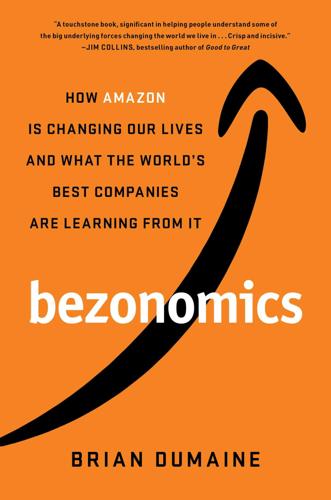
Bezonomics: How Amazon Is Changing Our Lives and What the World's Best Companies Are Learning From It
by
Brian Dumaine
Published 11 May 2020
The clock project, which the foundation says has no public completion date, is the brainchild of Bezos’s friend Danny Hillis, a pioneer in parallel supercomputers and the creative force at Disney’s Imagineering division—he once designed a full-sized dinosaur to saunter around Disney’s theme parks. In 1996, he and Stewart Brand, a biologist, cultural pioneer, and the editor of the 1960s bible Whole Earth Catalog, launched a nonprofit to build the clock. The rock musician Brian Eno helped name the organization the Long Now Foundation, to indicate, as the foundation’s website puts it, “the expanded sense of time the clock provokes—not the short now of next quarter, next week, or the next five minutes, but the ‘long now’ of centuries.” When the 10,000-year clock opens to the public, Bezos hopes it will encourage long-term thinking, that it will help put things in perspective and assist humans in solving big challenges.
…
Johnson, “Exclusive: Jeff Bezos Plans to Charge at Least $200,000 for Space Rides—Sources,” Reuters, July 12, 2018, In the spring of 2019: Kenneth Chang, “Jeff Bezos Unveils Blue Origin’s Vision for Space, and a Moon Lander,” New York Times, May 9, 2019. The clock rests: Kevin Kelly, “Clock in the Mountain,” blog, The Long Now Foundation, n.d., http://longnow.org/clock/. Near the top of the five-hundred-foot-tall tunnel: Ibid. Chapter 5: Cranking the AI Flywheel Then he came up with Amazon.com: Stone, The Everything Store, 35. to make life a little easier: Ibid., 50. In 2002, he instituted: Ibid., 169. From 2000 to 2005, the stocks: Olivia Oran, “5 Dot-Com Busts: Where They Are Today,” The Street, March 9, 2011.
…
See also wealth gap Sanders’s criticism of Amazon for, 240–41 Indeed.com, 131 India, 14, 66, 189, 221, 271 Infinity Cube, 37–38 influencers, 210 innovation, and flywheel, 80–81 Instagram, 194, 197 addictive nature of, 17, 18 feature for selling directly to customers, 211 Lulus’s influencers on, 210–11 Instant Pot electric multicooker, 151 Institute for Local Self-Reliance, 148 insurance industry Amazon’s entry into, 219, 228, 234, 236 Ant Financial in, 235 robo-advisory services in, 235 Intel, 51 Internet addiction to, 18 Bezos’s early interest in, 39 business models based on, 125 cloud computing services on, 25 DARPA and creation of, 34 home health care using, 223 HTTP standards for, 125 voice access to, 112 Internet of Things, 123–24, 270 iOS operating system, 14, 225 iPhone, 26, 64, 69, 108, 110, 117, 199 ITT, 216 Iverson, Ken, 5 iWatch, 222 Iyengar, Sheena, 21 Jabra, 111 JANA Partners, 168 Jassy, Andy, 44, 51–52, 63 JD.com AI Internet-connected devices from, 124 AI skills and customer knowledge of, 8, 124, 270 Amazon’s competition with, 266 delivery drones used by, 178 global spheres of influence with, 188–89 warehouse with robots of, 136–38 Jentoft, Leif, 139 JetBlack delivery service, Walmart, 190–91 Jet.com, 54, 183–84, 185 jobs AI-driven tech giants and, 271 AI’s impact on, 143, 248, 267 automation and, 9, 12, 126–27, 141–43, 241–42, 248, 267 Bezos as focal point for concerns about losses of, 126 drone deliveries and, 124 interconnected devices and, 124 new technologies and, 143–44 robots and, 11, 29, 127, 144, 270 technology’s disruption of, 127 universal basic income and, 248–49 wage changes in, 127 Jobs, Steve, 26, 53, 55, 110 Joly, Hubert, 204 Jorgensen, Ted, 31–32 Joy, Lisa, 102 JPMorgan Chase, 27, 227, 234, 236 Julie talking dolls, 107 Juniper Research, 220 Juno Therapeutics, 217 Kabbani, Nader, 226 Kalanick, Travis, 57–58 Kantar, 16, 168 KFC restaurants, China, 198, 199 Khalifah, Saoud, 159–60 Khan, Lina, 258–59 Khanna, Ro, 243 Khosrowshahi, Dara, 8 Kindle e-readers, 26, 31, 47, 65, 66, 74, 76, 80, 81, 82, 105, 217, 226 King, Martin Luther Jr., 249 Kiva robots, 128 Koch, David and Charles, 250 Kosmo.com, 64, 65 Kraft Heinz, 267 Kroger, 5, 24, 136, 141, 168, 175, 176 Lake, Katrina, 206, 207–8 Lennar, 218 Liu, Richard, 178 Livongo Health, 229 Long Now Foundation, 71 long-term management in Bezonomics, 76, 88 long-term view AI flywheel and, 71, 81–82, 269 Amazon innovation lab and, 224 Amazon’s use of, 3, 61–64, 65–66 AWS example of, 63–64 Bezos and, 59, 61–66 Blue Origin project and, 68 employees’ need for, 63 machine learning on cancers and, 223 new delivery technologies and, 174 philanthropy strategy and, 251 profitability and, 61–62 pushes into new sectors and, 236 shopping on Alexa and, 116 10,000-year clock and, 70–71 Walmart’s JetBlack project and, 191 Lord of the Rings, The (Tolkien), 101 Lore, Marc, 54–55, 183–88, 189, 190, 191, 192 Los Angeles Times, 207 Lot-Less Closeouts stores, 167 Loup Ventures, 110 Lululemon, 190 Lulus, 9, 194, 209–11, 213 luxury retailers, 9, 200–2 LVMH, 205 Lyft, 23 Ma, Tony, 90 machine learning Alexa voice recognition and, 113–14 Amazon’s application of, 270 Bezos on power of, 83 black box and, 91, 147 decision-making and, 87 fake review detection with, 160 flywheel model and, 5, 83–84, 85 health-care industry and, 223 voice recognition and, 109 Machine Learning service business, Amazon, 218 Mackey, John, 164 Man in the High Castle, The (TV series), 102–3 Marcus, James, 41, 45 Marketplace, 52 Amazon Lending loans to small businesses on, 234 Bezos’s creation of, 42 number of businesses on, 10 third-party merchants on, 42 Marketplace Pulse, 262 MarketWatch, 208 Marriott Hotels, 143 Max Borges Agency, 15–16, 19 McCabe, Chris, 153 McCarthy, John, 107 McGrath, Judith, 66 McKinsey & Company, 126, 174, 181, 215 McMillon, Doug, 185–86 McWhorter, John, 120 medical records project, 225 medicine.

From Counterculture to Cyberculture: Stewart Brand, the Whole Earth Network, and the Rise of Digital Utopianism
by
Fred Turner
Published 31 Aug 2006
In the coming years, Brand continued to stay involved with the Global Business Network and the Electronic Frontier Foundation, but he also turned to other projects. In 1994, for instance, he published a book on the ways buildings change over time (How Buildings Learn), and in 1995 he [ 206 ] Chapter 6 helped found the Long Now Foundation, a society devoted to building a clock that would keep time for ten thousand years, so as to encourage humans to focus on the long-term consequences of their actions.67 Kevin Kelly became executive editor of Wired magazine. In that capacity, he helped turn the social networks that he and Brand had helped create into symbols of the rise of a newly networked social order and evidence for the countercultural potential of the Internet and the World Wide Web.
…
As Walter Powell has pointed out, these forces included a flattening of corporate hierarchies, newly flexible employment structures for executives as well as laborers, globalization, and the integration of information technology into the firm. See Powell, “Capitalist Firm in the Twenty-First Century,” esp. 40 – 61. 66. Ibid., 68. 67. The Long Now Foundation is still active at this writing. Founding members included computer designer Danny Hillis, Kevin Kelly, Esther Dyson, musician Brian Eno, Peter Schwartz, and others. In 1999 Brand published a book, The Clock of the Long Now, about the clock project. Chapter 7 1. Rossetto, “Why Wired?” 2. John Plunkett, who, along with his wife, Barbara Kuhr, designed the magazine, explained, “If this magazine was supposed to be bringing news from the future, it had to look like it had just arrived from the future.”
…
Index abstract expressionism, 46, 47 “Access Mobile,” 71 Acid Tests, 65, 66 Advanced Research Projects Agency (ARPA), 108, 213 Albrecht, Bob, 70, 101, 113, 114, 133 Alinsky, Saul, Rules for Radicals, 98 Allison, Dennis, 252 Alloy, 96 –97, 273n54 Alpert, Richard (Baba Ram Dass), 61 Altair, 114, 274n1 alternative energy, 233 Alto, 111 American Indian Movement, 97 America Online, 161 analog computers, 20 Andreesen, Marc, 213 Ant Farm art and design collective, 86, 272n36 anti-aircraft predictor, 21, 25, 26, 95, 178 anti-automationists, 29 antiwar protests, 64, 74, 118, 209 AOL, 217 Apple Computer, 106, 116, 129, 139, 198, 247 Architecture Machine Group, 163, 177–78 Arcosanti, 81 ARPA community, 116 ARPANET, 28, 109, 117, 213 artificial intelligence, 177 Artificial Intelligence (AI) Laboratory, 116, 133, 134, 177 Artificial Life Conference, 198 –99 artificial-life movement, 203 Ashby, Ross, 26, 178 “Aspen Summit: Cyberspace and the American Dream II,” 230 Association for Computing Machinery / Institute of Electrical and Electronics Engineers (ACM/IEEE), 110 AT&T, 182, 193 Atari, 134, 163 Atkinson, Bill, 137 Atlas missile system, 19 atomic bomb, 18 atomic era, 17, 30 –31, 243 atomic forecasting, 187 Aufderheide, Patricia, 230 Augmentation Research Center (ARC), 61, 106, 107– 8, 109, 110 Autodesk, 163 automaton, 21 Baba, Meher, 75 back-to-the-land movement, 73, 76, 244, 245 Baer, Steve, 81, 95, 96, 97, 109; Dome Cookbook, 94 Baldwin, Jay, 94 Barayón, Ramón Sender, 65, 146 Barbrook, Richard, 208, 259, 279n43 Bardini, Thierry, 105, 274n1 Barlow, John Perry: and Aspen conference, 223; and computational metaphor, 16; conference on bionomics, 224; contributions to Wired, 217, 218; “Crime and Puzzlement,” 171, 172 –74, 195; “Declaration of [ 313 ] [ 314 ] Index Barlow, John Perry (continued) the Independence of Cyberspace,” 13 –14; and Electronic Frontier Foundation, 172, 218, 220; experiences with mysticism and LSD, 165; forum on hacking on the WELL, 168 –70; and Grateful Dead, 166; and Kapor, 172; linked hacking and free speech as central components of “cyberspace,” 171; linking of virtual reality to LSD, 163, 165; longing to return to an egalitarian world, 248; notion of cyberspace as an electronic frontier, 162, 172 –74; shift from agricultural work to information work, 166; and the WELL, 3, 142, 155, 167; and the Whole Earth network, 7 Barnett, Steve, 191 Basch, Reva, 154, 155 BASIC programming language, 113, 114 Bateson, Gregory, 121–25; attacked mechanistic visions of the social and natural worlds, 126; bridged high technology and communitarian idealism, 124; Communication: The Social Matrix of Psychiatry, 53; on ecological crisis, 276n42; intellectual influence on CQ, 124; and Macy Conferences, 26; rejection of transcendence, 123; and second-generation cybernetics, 123, 148; Steps to an Ecology of Mind, 123, 124, 165; theory of immanent mind, 123 –24; and “the pattern that connects,” 243; transformed cybernetic principles into communication-based theories of alcoholism, schizophrenia, and learning, 123; vision of material world as information system, 104 Bateson, Mary Catherine, 182, 189, 191 Battelle, John, 209, 216 Baxter, Richard, 171 Bay area computer programmers, 103 Beach, Scott, 102 Beat movement, 62 “Behavior, Purpose, and Teleology” (Rosenblueth, Wiener, and Bigelow), 22 “be-in,” 51–52, 269n20 Bell, Daniel, 32, 228, 245; The Coming of PostIndustrial Society, 241– 42 Berkeley Barb (magazine), 80, 114 Berners-Lee, Tim, 213 Berry, Wendell, 126 –27 Bertalanffy, Ludwig von, 265n43 Best, Eric, 221 Bevirt, Ron, 81 Big Brother & the Holding Company, 66 Bigelow, Alice, 226 Bigelow, Julian, 20, 21, 22, 122, 226 Big Rock Candy Mountain publishers, 70 Biondi, Frank, 208 bionomics, 224, 225 Biosphere, 176, 182, 190 Black Mountain College, 47 Black Panthers, 97 Black Power, 34 Blanchard, Chuck, 172 Boczkowski, Pablo, 271n7 Bolt, Baranek, and Newman, 134 Bonestell, Chesley, The Conquest of Space, 42 Bonner, Jay, 99 Borsook, Paulina, 226 “boundary object,” 72 Bourdieu, Pierre, 157 Bowker, Geoffrey, 25 –26, 84 Brand, Lois, 71, 74, 76, 113 Brand, Stewart, 3, 223; aimed to imitate the goals and tactics of American research culture, 78; at Alloy, 97; America Needs Indians, 66, 69, 270n49; analytical framework drawn from ecology and evolutionary biology, 44 – 45; argument that personal computer revolution and Internet grew out of counterculture, 103; and “Aspen Summit,” 231; association of cybernetics with alternative forms of communal organization, 43; authority across technological, economic, and cultural eras, 250 –51; brought together representatives of the technical world and former New Communalists, 109 –10, 116, 132, 216, 246, 247, 250, 255; buttons, 69; celebrated as a socio-technical visionary, 101; and coevolution, 121; coverage of Alloy, 96; crossing of disciplinary and professional boundaries, 249; cybernetic notion of organization-as-organism, 90; cybernetics as social and rhetorical resources for entrepreneurship, 5; definition of purpose of Catalog, 82 – 83; “Demise Party,” 101–2; depicted Media Lab as living demonstration of an alternative society, 179 – 81; description of Whole Earth as a “research organization,” 96; drew on systems theory to design the Catalog, 78; on Dyson, 227; editorial tactics, 79, 273n43; Index and Electronic Frontier Foundation, 172, 218; enthusiasm for computer-conferencing, 130; on faculty of School of Management and Strategic Studies, 129 –30; fear of living in a hyperrationalized world, 42 – 43; fear of Soviet attack in 1950s, 41– 42; first experience with LSD, 61; forum on hacking on the WELL, 168 –70; and Global Business Network, 176, 184, 188, 189, 191, 192, 193; and Hackers’ Conference, 139 – 40, 254; helped computers to be seen as “personal” technology, 105, 238; and Herman Kahn, 186; How Buildings Learn, 205; idealized vision of Native Americans, 59; idea that information-based products embodied an economic paradox, 136; imagined world as a series of overlapping information systems, 250; influence of Fuller on, 57; influence of Kesey on, 60; integration of ideas and people of Whole Earth into world of networked computing, 132; interview with Newsweek in 1980, 128 –29; introduction to Signal, 196; issues facing hackers to the themes of countercultural work and the Whole Earth group, 139; Kesey as role model, 65; and Learning Conferences, 181– 83; linking of information technologies to New Communalist politics, 216; Long Now Foundation, 206, 285n67; as a manager, 79, 89 –90; The Media Lab: Inventing the Future at MIT, 178 – 81; and the Merry Pranksters, 61– 62; military service, 46; mirror logic of cybernetics, 259; at MIT’s Media Lab, 177; modeled the synthesis of counterculture and research culture, 253; multimedia pieces, 270n49; networked cultural entrepreneurship, 251– 55; network forums, 239, 249 –50; “New Games Tournament,” 120; in New York art scene, 46; on outer space, 127; Point Foundation, 120; at Portola Institute, 70; portrayal of Nicholas Negroponte, 179 – 80; principle of juxtaposition, 84; private online conference for software reviewers, 131; reaction to the libertarianism of the mid-1990s, 287n49; reconfigured the cultural status of information and information technologies, 8, 238 –39, 249; repudiated the Catalog’s New Communalist origins, 121; response to criticism of Catalog’s poli- [ 315 ] tics, 99 –100; return to the Whole Earth Catalog, 120; search for individual freedom, 45; search for new, flexible modes of living, 59; and Software Catalog, 130 –31; “Spacewar: Fanatic Life and Symbolic Death among the Computer Bums,” 116 –18; “Sticking Your Head in Cyberspace,” 195; “Transcendental planning,” 90 –91; transcript of the Hacker Ethic forum, 138; travels after discharge from the army, 48; and Trips Festival, 65 – 68; turn back toward the computer industry, 104; visit to Drop City, 74; and the WELL, 141, 142 – 43, 145 – 46; work with USCO, 49, 51; writing for Wired, 217; and Xerox PARC, 246 – 47 Branwyn, Gareth, 81 Brautigan, Richard, “All Watched Over by Machines of Loving Grace,” 38 –39 Breines, Wini, 267n80 Briarpatch Society, 70 Brilliant, Larry, 141, 142 Britton, Lois, 273n44 Brockman, John, 129, 130, 290n24 Broderbund Software Inc., 135 Bronson, Po, 225 Brown, Jerry, 186 Browning, Page, 61 Budge, Bill, 135 bulletin board system (BBS), 144, 247 Burnham, Jack, 268n13 Burroughs, William, 62 Burstein, Daniel, 287n37 Burt, Ronald, 5, 135 Bush, Vannevar, 17, 20, 24, 229; “As We May Think,” 106 –7 Business 2.0 (magazine), 207 butterfly ecology, 43 Byte (magazine), 137 Cage, John, 43, 46 – 47, 67; Theatre Piece No. 1, 47– 48 “Californian Ideology,” 208, 285n4 Callahan, Michael, 48, 51, 66 Callon, Michelle, 277n71 Calvert, Greg, 35 Calvin, William, 191 Cameron, Andy, 208, 259 Carlston, Doug, 135 Carpenter, Edmund, 53 Carroll, Jon, 143, 155 [ 316 ] Index Castañeda, Carlos, 92 Castells, Manuel, 149, 242, 278n23 Center for Linear Studies, 198 Centre Européenne pour la Recherche Nucléaire (CERN), 213 Ceruzzi, Paul, 105 – 6, 129 “Cheerful Robot,” 29 Christian right, 215 CIA, MK-ULTRA program, 60 Citibank/Citicorp, 198 Citizens’ Band radio, 144 civil rights movement, 31, 34, 35 Clinton, Bill, 215 closed informational system, 17 Club of Rome, The Limits to Growth, 120 Coate, John, 146 – 47, 148, 155, 159 “coevolution,” 121 CoEvolution Quarterly, 97, 120 –22, 131, 132, 176, 186, 194 cold war era: artistic process, 47; engagement of universities with, 12; mechanistic world, 62.

The Future Is Faster Than You Think: How Converging Technologies Are Transforming Business, Industries, and Our Lives
by
Peter H. Diamandis
and
Steven Kotler
Published 28 Jan 2020
“Civilization is revving itself into a pathologically short attention span,” writes Stewart Brand in an essay for the Long Now Foundation. “This trend might be coming from the acceleration of technology, the short-horizon perspective of market-driven economics, the next-election perspective of democracies, or the distractions of personal multi-tasking. All are on the increase. Some sort of balancing corrective to the short-sightedness is needed.” The corrective Brand came up with was his aforementioned Long Now Foundation, an organization most famous for constructing a clock that’s hidden in a cave in the hinterlands of Nevada’s Great Basin National Park.
…
H., 79–80 Hariri, Bob, 90–91, 163–64 Harpers, 202 Harvard Business Review, 111, 229 Harvard University, 178 Hastings, Reed, 125–26 Hawking, Stephen, 231 healthcare, 151–67 AI and, 36, 158, 161–63 cellular medicine and, 163–65 convergence and, 68, 89, 154–55 democratization of, 162 drones and, 48 drug development and, 30, 165–67 early detection in, 158, 159 exponential technologies and, 155, 156–67 flying cars and, 154 genomics and, 158–60 liability issues in, 155 paradigm shifts in, 155–56 personal diagnostic technologies and, 156–58 personalized, 68 research costs in, 155 surgery and, 160–63 systemic failures of, 154–55 3–D printing and, 154, 163 Health Nucleus, 158, 266–67 HEAR360, 51 Heinla, Ahti, 106 helicopters, 9 Hema, 107 Hertzfeld, Andy, 70 Hickey, Kit, 108–9 High Fidelity, 134, 147–48 Hitler, Adolf, 238 hive-mind collaborations, 24, 141, 211 cloud-based, 257–59 Holden, Jeff, 4–5, 14 Hollywood Reporter, 138 holodecks, 133–35, 139, 140 holograms, 133–34, 149–50 Hololux, 114 home delivery: drones and, 47–48, 107 robots and, 106–7 Honda, 45, 46 HTC Vive VR headsets, 148 Hughes, Nick, 191, 193 Human Genome Project, 67 Human Longevity Inc., 158, 266–67 hydroponics, 204 Hydrostor, 220 Hyperloop, 16–19, 26, 72, 199 hyper-personalization, 120–21 IBM, 28, 35 Watson computer of, 103, 130 ICOs, see initial coin offerings IDs, blockchain and, 58 IKEA, 120, 204 Illinois, University of, 203 illnesses, see disease imaging, medical, 157 see also specific technologies immune system, 164 Imperial College, London, 160 Independent, 140, 155 India, 196 electric cars in, 221 renewable energy projects in, 216 Industrial Revolution, 111–12, 243 Inevitable, The (Kelly), 85 inflammation, 90 initial coin offerings (ICOs), 59, 75–76, 84 innovation: and availability of capital, 73–77 cities and, 82–83, 244 demonetization and, 77–79 internet and, 83 longevity and, 87–91 migration as accelerant of, 238–40 neurobiology and, 81 new business models for, 83–87 saved time and, 71 Insilico Medicine, 166, 167 insurance, peer-to-peer, 183, 185–87 insurance industry, 181–82 autonomous cars and, 184–85 convergence and, 183–89 crowdsurance and, 183, 185–87 data and, 185–86 dynamic risk and, 187–89 origins of, 182–83 sensors and, 188–89 statistics and, 186 intercellular communication, altered, 172 Intergovernmental Panel on Climate Change, 212, 227, 241 International Astronautical Congress (2017), 20 International Space Station, 53 internet, 39 browsers for, 32 innovation and, 83 job creation and, 23, 229 “Rising Billion” and, 99–100 self-teaching and, 145 Internet gaming disorder, 246 “Internet of Things” (IoT), 42–43, 104–6 investing, AI and, 195 IQ, 80 Iron Man (film), 37 Iron Ox, 205 Irrawaddy River Delta, 226–27 Itai Madamombe, 200 Iviva Medical, 55 iWatch, 157 Jaguar automobiles, self-driving, 14 JARVIS (fictional AI assistant), 37, 113, 123–24 Jepsen, Mary Lou, 157 Jet Propulsion Laboratory, 233 Jews, in flight from Nazi Germany, 238–39 Jobs, Steve, 20, 24, 70–71, 101 jobs, VR and, 248 Johnson, Bryan, 81, 255–56, 257 Johnson & Johnson, 162 Journal of Evolution and Technology, 230 Just Inc., 208 Kamen, Dean, 213–14 Karim, Jawed, 128 Kasparov, Garry, 28, 36 Kelly, Kevin, 85 Kennedy, John F., 73 Kenya, 192 Kenyon, Larry, 70 Kernel, 81, 256 Kibar, Osman, 177 Kickstarter, 74, 109 Kim, Peter, 161 Kimmelman, Michael, 232 Kindred, 108 Kitkit School, 146 Kitty Hawk, 5 Kiva Systems, 108 knowledge, integration of, AI and, 35–36 Kodak, 126 Kotler, Steven, 264 Kroger stores, 107 Kurzweil, Ray, 8, 12, 29, 76, 82, 91, 173 labor, human vs. robotic, 108 Lahtela, Petteri, 41 Lancet, 226 land ownership, blockchain and, 58 Lanier, Jaron, 50 LA Times, 67 “Law for Restoration of the Professional Civil Service” (Germany), 238 “Law of Accelerating Returns,” 8, 12, 29 Leap Motion, 52 Lemonade, 186–87 lending, peer-to-peer, 74, 194–95 Leroy Merlin, 110 leveraged assets, 84 Levine, Mark, 241 LG, 51, 139 LIDAR, 43, 185 Lieber, Charles, deep brain stimulation research of, 253–55, 256 Lifekind, 132 lifespan, extension of, see longevity Light Field Lab, 133–34 LightStage, 133, 134 Lightwave, 137 listening, AI and, 35 lithium-ion batteries, 62, 219–20, 222 Littlewood, John, 80 Liu, David, 67 Lloyd, Edward, 182–83 Lloyd’s of London, 183 loans, micro-, 191–92, 195 locked in syndrome, 141 logistics, robots and, 108 London College of Fashion, 114 longevity, 87–91, 169–79 anti-aging compounds and, 175 average human lifespan and, 173 convergence and, 169, 173, 179 “escape velocity” for, 173 genetics and, 172–73 innovation and, 169 regenerating medicines and, 176–77 senolytic therapies and, 175–76 stem cells and, 90 young blood transfusions and, 90, 178–79 see also aging Long Now Foundation, 232 Lonsdale, Joe, 17 looking, AI and, 34–35 Lovelace, Ada, 87–88 Lovelace, Gunnar, 190 Lowe’s Home Improvement, 107 lung disease, 151–52 Lyft, 195–96, 234 Lyrebird, 121 machine learning, 10, 34 Macintosh, 70–71 McKinsey Quarterly, 83 McNierney, Ed, 145–46 Made in Space, 53 Mad Men (TV show), 117 Magic Leap, 139, 149–50 mail-order business, birth of, 95–96 malaria, 160 Mall of America, 112 malls, 112, 115 Manning, Richard, 202 Mansfield, Mike, 73 manufacturing: impact of 3–D printing on, 54 zero-waste, 226 Marillion, 74 Mars, colonization of, 252 MashUp Machine, 34 Massachusetts Institute of Technology (MIT), 144, 220 Materials Genome Initiative, 62–63 materials science, 10, 11, 17, 61–63 meat, cultured, 206–8 media: passive vs. active, 130–31 print, 138 medial prefrontal cortex, 21–22 medicine, see healthcare memory, brain implants and, 82 Memphis Meats, 208 Menabrea, Luigi, 88 Messina, Jim, 17 metformin, 175 microbots, 162 micro-loans, 191–92, 195 Microsoft, 33, 114 Microsoft HoloLens, 52 Middleton, Daniel, 129 Mighty Building, 55 migrations: climate change and, 211, 241–42 in human history, 237–40 as innovation accelerant, 238–40 interplanetary, 249–53 from physical to virtual reality, 245–49 urban relocation and, 243–45 military drones, increasing demand for, 10 Ministry of Supply, 109 Minnesota, University of, 163 Mission: Impossible (film), 121 mitochondrial dysfunction, 171 Mitra, Sugata, 145 MIT Review, 145, 146 mobile finance, 190–91 mobile health, 157–58 mobile phones, as quasi-currency, 191–92 mobility, and economic paradigm shifts, 98 Moment, The (film), 141 money: uses of, 189–90 see also cryptocurrencies; finance industry Moon, as space colonization platform, 251 Moore, Gordon, 7 Moore’s Law, 7–8, 28–31, 74 Morgan (film), 130 Morse, Samuel, 38 Mosaic, 32 Moser, Petra, 238–39 Mote Tropical Research Laboratory, 225 motion transfer, 131 movies, participatory, 135 M-Pesa, 192 mPower network, 40 MRI (magnetic resonance imaging), portable, 157 multiple world models, 86 Musk, Elon, 40, 81, 146, 161, 219, 231 Boring Company and, 18–19 brain-computer interfaces and, 255–56, 257–58 Hyperloop and, 16 space colonization and, 20–21, 250, 251–54 Myanmar, 226–27 My Drunk Kitchen (YouTube program), 128 Myers, Norman, 241 Naam, Ramez, 216, 218, 220 Nakamoto, Satoshi (pseudonym), 57 Nalamasu, Omkaram, 63 Nano Dimension, 54 nanotechnology, self-replicating, 63–64, 231 Nanticoke Generating Station, 216–17 Narrative Science, 35 NASA, 6, 233 Mars mission of, 160–61 National Institute on Aging, 179 National Institutes of Health, All of Us project of, 159 National Resources Defense Council, 203 Nebula Genomics, 159 Nefertari, tomb of, 147–48 Negroponte, Nicholas, Ethiopian self-teaching experiment of, 144–46 NeoSensory, 134 Netflix, 125–26 Netherlands, 232 networks, 39–41, 82–83 5G, 39–40, 119, 149 history of, 37–39 “Internet of Things,” 42–43, 104–5 new business models and, 84–87 and nurturing of genius, 80–81 ubiquity of, 39 user-friendly interfaces for, 38 Neuralink, 81, 256, 258 neural networks, 33, 34 neurobiology, innovation and, 81 neuro-modulation, 253–55 neurophysiology, 136 Nevermind (video game), 137 New Balance, 109 New Glenn rocket, 251 New Story, 55 New York Times, 105, 232 nine-dot problem, 81 Nintendo, 52, 140 Nokia, 100–101 norepinephrine, 247 Norway, electric cars in, 221 Novartis, 175 Nuro, 107 nutrient sensing, 171 O3B satellite network, 40 Obama, Barack, 62, 122 Oceanix City, 200 oceans, biodiversity crisis in, 223–24, 225 Oculus Rift, 51 O’Hagan, Ellie Mae, 242 OLEDS (organic light emitting diodes), 139 Omni Processor, 214 Onebillion, 146 O’Neill, Gerard K., 250, 251 One Laptop per Child, 145–46 Oneweb, 40 Opener, 5 OpenGov, 235 Openwater, 157 optical sensors, 43 Organovo, 55 organ transplants, 153–54, 175 Otoy, 133, 134 Oura ring, 42, 44 Outside, 241 overfishing, 223, 225 Ovid, 178 oxytocin, 247 Page, Larry, 5 Panasonic, 222 parabiosis, 178 parking spaces, repurposing of, 16 Parkinson’s disease, deep brain stimulation and, 253–54 Partnership for a New American Economy, 239 Paul, Logan, 129 PayPal, 252 Peabody Coal, 216 Pebble Time, 74 Peele, Jordan, 122 peer-to-peer lending, 74 Peleg, Danit, 109 Pepper (humanoid robot), 107 Perfect Day Foods, 208 perovskite, 63 photosynthesis, 202 physical world, boundaries between digital world and, 118–20 Picard, Rosalind, 137 Pichai, Sundar, 101, 102 Pine, Joseph, 111 Pinker, Steven, 262 Pinterest, 119 Pishevar, Shervin, 17 placental cells, 163–65 Plastic Bank, 85 Plenty Unlimited Inc., 204–5 podcasts, 127 Pokémon Go, 52, 140 pollution, 212, 223, 226 population growth, 213 Porsche, 222 possessions, experiences vs., 112 Postal Service, US, 96–97, 98 poverty, declining rate of, 262 Pratt, Gill, 46 Prellis Biologics, 55 presence, in VR, 50 prevention, existential risks and, 232–33 Prime Air, 107 Prime Wardrobe, 114 print media, 138 productivity: cities and, 244 technology and, 229 product reallocation, 239 Progressive Insurance, 187–88 Project Kuiper, 40 Project Loon, 39–40 proteins: aging and, 170–71 folding in, 167 proteostasis, loss of, 170–71 PTSD, VR and, 148–49 public institutions, impact of exponential technologies on, 23 Pulier, Eric, 59 pulmonary hypertension, 151–52 Qualcomm, 40 Qualcomm Tricorder XPRIZE, 157 quantum computing, 8, 27–32 drug development and, 30, 167 QuantumScape, 222 Quartz, 228 Quayside, 235 qubits (quantum bits), 27–28, 30 R3, 193 radio, 138–39 railways, time standardization and, 96 Ramanujan, Srinivasa, 79–80 Ramchurn, Richard, 141 rapamycin, 174–75 Rea, Andrew, 128 reading, AI and, 35 real estate industry, 181 convergence and, 196–200 Reebok, 109 reforestation, drones and, 224, 227 regenerative medicines, 176–77 Renault, 219 renewable energy, 78, 214, 215–18 convergence and, 217–18 see also specific technologies ridesharing: autonomous cars and, 14–16, 19 car ownership vs., 14–15, 26 flying cars and, 19 Ridley, Matt, 82 Rifkin, Jeremy, 97, 100 Rigetti, Chad, 28, 30 Rigetti Computing, 28, 30, 32 RIPE Project, 203 Ripple, 193 “Rising Billion,” 99–100 Rizzo, Skip, 148–49 Robbins, Tony, 132, 148 robots, robotics, 45–48, 136 as avatars, 25–26 convergence and, 48 demonetization and, 78 disaster mitigation and, 45–46 food industry and, 205 home delivery and, 106–7 human collaboration with, 47, 162, 229 in-store, 107 micro-, 162 surgery and, 161–62 unemployment and, 22, 69, 229 warehouse logistics and, 108 in workplace, 47–48 rockets: intercontinental travel on, 20, 26 interplanetary travel on, 20, 251, 253 Roebuck, Alvah Curtis, 96 Romkey, John, 42 Rose, Geordie, 29–30 Rosedale, Philip, 134, 147–48 Rose’s Law, 30, 31 Rothblatt, Jenesis, 152–53 Rothblatt, Martine, 151–54, 173 Rural Free Delivery Act (1896), 97 Russell, Bertrand, 80 Rustagi, Kevin, 108–9 R.
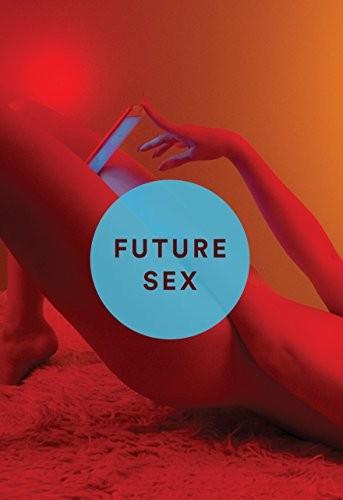
Future Sex
by
Emily Witt
Published 10 Oct 2016
We talked about megafauna, which are mentioned in The World Without Us, how the nice thing about megafauna was that they had coincided with human history—that even six thousand years ago there were still small woolly mammoths living on an island off Alaska. He wondered how dinosaurs had overtaken megafauna in the popular imagination. We talked about the Long Now Foundation in San Francisco, an organization started by Stewart Brand, founder of the Whole Earth Catalog, who is trying to genetically resurrect megafauna. I talked about how I had gone to see Charles C. Mann, the author of the books 1491 and 1493, speak at the Long Now Foundation. He had listened to the podcast. We talked about 1493, about how in North America, before the Columbian exchange, there were no earthworms, and how the Spanish had hired samurai to fight the Aztecs in Mexico, and how somebody should make a movie about that.

Dreaming in Code: Two Dozen Programmers, Three Years, 4,732 Bugs, and One Quest for Transcendent Software
by
Scott Rosenberg
Published 2 Jan 2006
Kapor’s Long Bet with Ray Kurzweil is chronicled at http://www.longbets.org/1. “radical transformation of the reality”: Kurzweil described his vision of the Singularity in a talk hosted by the Long Now Foundation, San Francisco, September 23, 2005. Video of the event is at http://video.google.com/video play?docid=610691660251309257. “in the short term we always underestimate”: Kurzweil, Long Now Foundation talk. “As humans: We are embodied.”: Kapor’s essay accompanying the Long Bet is at http://www.longbets.org/1. ACKNOWLEDGMENTS This book could not have been written without Mitch Kapor’s willingness to open the Chandler project’s doors to me.
…
In the spring of 2002, around the time Mitch Kapor and the early members of the Chandler team were beginning to zero in on their new software’s architecture, Kapor made the tech news headlines for something entirely different: He entered into a Long Bet about the prospects for artificial intelligence. Long Bets were a project of the Long Now Foundation, a nonprofit organization started by Whole Earth Catalog creator Stewart Brand and a group of digital-age notables as a way to spur discussion and creative ideas about long-term issues and problems. As the project’s first big-splash Long Bet, Kapor wagered $20,000 (all winnings earmarked for worthy nonprofit institutions) that by 2029 no computer or “machine intelligence” will have passed the Turing Test.
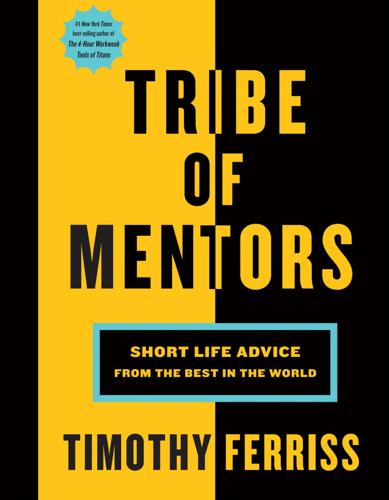
Tribe of Mentors: Short Life Advice From the Best in the World
by
Timothy Ferriss
Published 14 Jun 2017
This book gave me the courage to submerge myself in the details of a fundamentally trivial business (technical writing and publishing) and to let go of my earlier hopes of writing deep books that would change the world. Those hopes came back around later. The other wonderful idea in this book is “the long view.” Well before the Long Now Foundation popularized the idea, Busby hinged his plot on the science fiction trope that in a world of near-light-speed travel, time passes more slowly for those at near-relativistic speed than for those left behind. The characters must set events in motion and travel to meet up with them decades hence.
…
He also co-founded the All Species Foundation, a nonprofit aimed at cataloging and identifying every living species on Earth, and the Rosetta Project, which is building an archive of all documented human languages. In his spare time, he writes best-selling books and serves on the board of the Long Now Foundation. As part of the last, he’s investigating how to revive and restore endangered or extinct species, including the woolly mammoth. He might be the real-world “most interesting man in the world.” His latest book is The Inevitable: Understanding the 12 Technological Forces That Will Shape Our Future.
…
So I always tell writers to follow their curiosity, obsessions, and fascinations. “Back when I was 75 (I’m 78 now), I checked out the local CrossFit ‘box’ and was enchanted by the absence of mirrors and machines, and by the presence of free weights.” Stewart Brand TW: @stewartbrand reviverestore.org STEWART BRAND is the president of the Long Now Foundation, established to creatively foster long-term thinking and responsibility in the framework of the next 10,000 years. He leads a project there called Revive and Restore, which seeks to bring back extinct animal species such as the passenger pigeon and woolly mammoth. Stewart is well known for founding, editing, and publishing The Whole Earth Catalog (1968–85), which received a National Book Award for its 1972 issue.
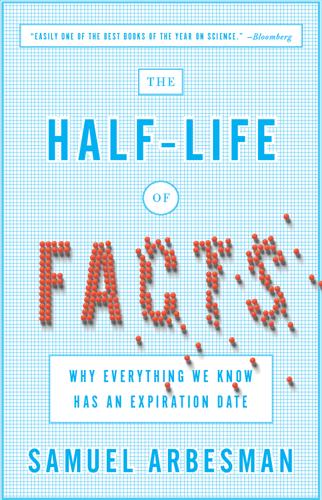
The Half-Life of Facts: Why Everything We Know Has an Expiration Date
by
Samuel Arbesman
Published 31 Aug 2012
They offer the Ambient Umbrella, whose handle glows when rain is in the forecast, so it won’t be forgotten. These gadgets provide a way for us to be kept abreast, in a vaguely useful way, of the changing facts around us. But these sorts of devices are only good for quickly changing facts. On the other end of the spectrum there is the Long Now Foundation, which is geared toward fostering long-term thinking and awareness. They get people to think in terms of millennia, and are even constructing a clock out in the Texas desert. Designed to operate for ten thousand years. They also have a sporadically used news-clipping service that highlights articles that might be relevant centuries from now, as a way to keep on top of really big and important changes.
…
J., 148–49, 155 deuterium, 151 Devezas, Tessaleno, 207–8 DEVONthink, 118–19 Diabetes Care, 67 dialect, situation-based, 190 Diamond, Arthur, 187 Dictionary of Theories (Bothamley, ed.), 85 dinosaurs, 3, 79–82, 168–69, 194 discovery: long tail of, 38 multiple independent, 104–5 pace of, 9–25 discriminating power, 159–60 diseases, 52, 176–77 categorization of, 205 spread of, 62, 64 Dittmar, Jeremiah, 71, 73 Dixon, William Macneile, 8 DNA, 88, 90, 122, 163 drugs, 24, 111–12 repurposing of, 112 streptokinase, 108–9 Dunbar, Robin, 205 Dunbar’s Number, 205–6 Earth, curvature of, 35–36 education, 182–83, 195 Einstein, Albert, 36, 106, 186 Electronics, 42 Ellsworth, Henry, 54 e-mail, 41 Empedocles, 201 Encyclopaedia of Scientific Units, Weights, and Measures: Their SI Equivalences and Origins (Cardarelli), 146 EndNote, 117–18 energy, 55, 204 Eos, 148 Erdo˝s, Paul, 104 errors, 78–95 contrary to popular belief phrase and, 84–85 Essay on the Application of Mathematical Analysis to the Theories of Electricity and Magnetism, An (Green), 106 eurekometrics, 21, 22 Eureqa, 113–14 Everest, George, 140 evolution, 79, 187 evolutionary programming, 113 evolutionary psychology, 175 expertise, long tail of, 96, 102 experts, 96–97 exponential growth, 10–14, 44–45, 46–47, 54–55, 57, 59, 130, 204 extinct species, 26, 27–28 facts, see knowledge and facts factual inertia, 175, 179–83, 188, 190, 199 Fallows, James, 86 Fermat, Pierre de, 132 Feynman, Richard, 104 fish, 201 fishing, 173 fish oil, 99, 110 Florey, Lord, 163 Flory, Paul, 104 Foldit, 20 Franzen, Jonathan, 208–9 French Canadians, 193–94 frogs: boiling of, 86, 171 vision of, 171 Galaxy Zoo, 20 Galileo, 21, 143–44 Galton, Francis, 165–68 games, 51 generational knowledge, 183–85, 199 genetics, 87–90 genome sequencing, 48, 51 Gibrat’s Law, 103 Goddard, Robert H., 174 Godwin’s law, 105 Goldbach’s Conjecture, 112–13 Goodman, Steven, 107–8 Gould, Stephen Jay, 82 grammar: descriptive, 188–89 prescriptive, 188–89, 194 Granovetter, Mark, 76–78 Graves’ disease, 111 Great Vowel Shift, 191–93 Green, George, 105–6 growth: exponential, 10–14, 44–45, 46–47, 54–55, 57, 59, 130, 204 hyperbolic, 59 linear, 10, 11 Gumbel, Bryant, 41 Gutenberg, Johannes, 71–73, 78, 95 Hamblin, Terry, 83 Harrison, John, 102 Hawthorne effect, 55–56 helium, 104 Helmann, John, 162 Henrich, Joseph, 58 hepatitis, 28–30 hidden knowledge, 96–120 h-index, 17 Hirsch, Jorge, 17 History of the Modern Fact, A (Poovey), 200 Holmes, Sherlock, 206 homeoteleuton, 89 Hooke, Robert, 21, 94 Hull, David, 187–88 human anatomy, 23 human computation, 20 hydrogen, 151 hyperbolic growth rate, 59 idiolect, 190 impact factors, 16–17 inattentional blindness (change blindness), 177–79 India, 140–41 informational index funds, 197 information transformation, 43–44, 46 InnoCentive, 96–98, 101, 102 innovation, 204 population size and, 135–37, 202 prizes for, 102–3 simultaneous, 104–5 integrated circuits, 42, 43, 55, 203 Intel Corporation, 42 interdisciplinary research, 68–69 International Bureau of Weights and Measures, 47 Internet, 2, 40–41, 53, 198, 208, 211 Ioannidis, John, 156–61, 162 iPhone, 123 iron: magnetic properties of, 49–50 in spinach, 83–84 Ising, Ernst, 124, 125–26, 138 isotopes, 151 Jackson, John Hughlings, 30 Johnson, Steven, 119 Journal of Physical and Chemical Reference Data, 33–35 journals, 9, 12, 16–17, 32 Kahneman, Daniel, 177 Kay, Alan, 173 Kelly, Kevin, 38, 46 Kelly, Stuart, 115 Kelvin, Lord, 142–43 Kennaway, Kristian, 86 Keynes, John Maynard, 172 kidney stones, 52 kilogram, 147–48 Kiribati, 203 Kissinger, Henry, 190 Kleinberg, Jon, 92–93 knowledge and facts, 5, 54 cumulative, 56–57 erroneous, 78–95, 211–14 half-lives of, 1–8, 202 hidden, 96–120 phase transitions in, 121–39, 185 spread of, 66–95 Koh, Heebyung, 43, 45–46, 56 Kremer, Michael, 58–61 Kuhn, Thomas, 163, 186 Lambton, William, 140 land bridges, 57, 59–60 language, 188–94 French Canadians and, 193–94 grammar and, 188–89, 194 Great Vowel Shift and, 191–93 idiolect and, 190 situation-based dialect and, 190 verbs in, 189 voice onset time and, 190 Large Hadron Collider, 159 Laughlin, Gregory, 129–31 “Laws Underlying the Physics of Everyday Life Really Are Completely Understood, The” (Carroll), 36–37 Lazarus taxa, 27–28 Le Fanu, James, 23 LEGO, 184–85, 194 Lehman, Harvey, 13–14, 15 Leibniz, Gottfried, 67 Lenat, Doug, 112 Levan, Albert, 1–2 Liben-Nowell, David, 92–93 libraries, 31–32 life span, 53–54 Lincoln, Abraham, 70 linear growth, 10, 11 Linnaeus, Carl, 22, 204 Lippincott, Sara, 86 Lipson, Hod, 113 Little Science, Big Science (Price), 13 logistic curves, 44–46, 50, 116, 130, 203–4 longitude, 102 Long Now Foundation, 195 long tails: of discovery, 38 of expertise, 96, 102 of life, 38 of popularity, 103 Lou Gehrig’s disease (ALS), 98, 100–101 machine intelligence, 207 Magee, Chris, 43, 45–46, 56, 207–8 magicians, 178–79 magnetic properties of iron, 49–50 Maldives, 203 Malthus, Thomas, 59 mammal species, 22, 23, 128 extinct, 28 manuscripts, 87–91, 114–16 Marchetti, Cesare, 64 Marsh, Othniel, 80–81, 169 mathematics, 19, 51, 112–14, 124–25, 132–35 Matthew effect, 103 Mauboussin, Michael, 84 Mayor, Michel, 122 McGovern, George, 66 McIntosh, J.
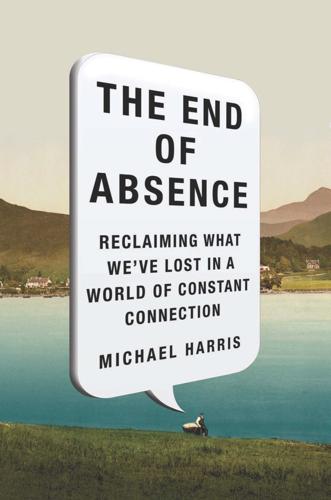
The End of Absence: Reclaiming What We've Lost in a World of Constant Connection
by
Michael Harris
Published 6 Aug 2014
He desires that our connections be more valued, more imbued with meaning, more purposeful. And that we not be terrified of a little time with our fascinating selves. Some are already working toward the preservation of absence. There’s the Sloth Club in Japan, which promotes the “slow life movement” and runs the often candlelit Café Slow in Tokyo. Or the Long Now Foundation in the United States, which designed (and is currently building inside a mountain in western Texas) a clock that will run for ten thousand years, defying our obsession with speedy gains. There are still monasteries, nunneries, and Buddhist retreats. Software engineers are delivering programs like Freedom, Anti-Social, and Pomodoro, all designed to shield you from a maelstrom of computer-derived distraction.
…
M., 106–7, 109 4chan, 53–54 Foursquare, 150–51 Frankenstein (Shelley), 56 Frankfurt, Harry G., 92 Franklin, Benjamin, 192 friends, 30–31 Frind, Markus, 182–83 Furbies, 29–30 Füssel, Stephan, 103 Gaddam, Sai, 173 Gallup, 123 genes, 41–43 Gentile, Douglas, 118–21 German Ideology, The (Marx), 12n Gleick, James, 137 Globe and Mail, 81–82, 89 glossary, 211–16 Google, 3, 8, 18–19, 24, 33, 43, 49, 82, 96, 142, 185 memory and, 143–47 search results on, 85–86, 91 Google AdSense, 85 Google Books, 102–3 Google Glass, 99–100 Google Maps, 91 Google Plus, 31 Gopnik, Alison, 33–34 Gould, Glenn, 200–201, 204 GPS, 35, 59, 68, 171 Greenfield, Susan, 20, 25 Grindr, 165, 167, 171, 173–74, 176 Guardian, 66n Gutenberg, Johannes, 11–13, 14, 16, 21, 34, 98 Gutenberg Bible, 83, 103 Gutenberg Galaxy, The (McLuhan), 179, 201 Gutenberg Revolution, The (Man), 12n, 103 GuySpy, 171, 172, 173 Hangul, 12n Harari, Haim, 141 Harry Potter series, 66n Hazlehurst, Ronnie, 74 Heilman, James, 75–79 Henry, William A., III, 84–85 “He Poos Clouds” (Pallett), 164 History of Reading, A (Manguel), 16, 117, 159 Hollinghurst, Alan, 115 Holmes, Sherlock, 147–48 House at Pooh Corner, The (Milne), 93 Hugo, Victor, 20–21 “Idea of North, The” (Gould), 200–201 In Defense of Elitism (Henry), 84–85 Information, The (Gleick), 137 information retrieval, 141–42 Innis, Harold, 202 In Search of Lost Time (Proust), 160 Instagram, 19, 104, 149 Internet, 19, 20, 21, 23, 26–27, 55, 69, 125, 126, 129, 141, 143, 145, 146, 187, 199, 205 brain and, 37–38, 40, 142, 185 going without, 185, 186, 189–97, 200, 208–9 remembering life before, 7–8, 15–16, 21–22, 48, 55, 203 Internship, The, 89 iPad, 21, 31 children and, 26–27, 45 iPhone, see phones iPotty, 26 iTunes, 89 Jobs, Steve, 134 Jones, Patrick, 152n Justification of Johann Gutenberg, The (Morrison), 12 Kaiser Foundation, 27, 28n Kandel, Eric, 154 Kaufman, Charlie, 155 Keen, Andrew, 88 Kelly, Kevin, 43 Kierkegaard, Søren, 49 Kinsey, Alfred, 173 knowledge, 11–12, 75, 80, 82, 83, 86, 92, 94, 98, 141, 145–46 Google Books and, 102–3 Wikipedia and, 63, 78 Koller, Daphne, 95 Kranzberg, Melvin, 7 Kundera, Milan, 184 Lanier, Jaron, 85, 106–7, 189 latent Dirichlet allocation (LDA), 64–65 Leonardo da Vinci, 56 Lewis, R. W. B., 117 LinkedIn, 175 literacy, 13 Loebner, Hugh, 60 Loebner Prize, 60 Long Now Foundation, 204 “Look at ME,” 69 love, 176, 177 Luddites, 18, 207–8, 209 Luther, Martin, 12, 20 “Machine Stops, The” (Forster), 106–7, 109 Maeterlinck, Maurice, 5 magazines, 26–28, 45–46, 102 Malaysia, 1–2, 19 Man, John, 12n, 103 Manguel, Alberto, 16–17, 117, 117n, 159 Manhunt, 165 maps, 35, 98 Marx, Groucho, 17 Marx, Karl, 12n massive open online courses (MOOCs), 95–98 Matrix, The, 44–45 McGraw, Phil, 63 McLuhan, Marshall, 14, 34–35, 99, 179, 194, 201, 205 memes, 41–43 technology-based, 42–44 memorization, 145, 151–52, 156–59 memory, 32–33, 35, 40, 137–63 of absence, 202–3 brain and, 139, 140, 142, 146, 151–53, 155, 158 computer, 148, 149, 151, 152, 154–56 fear-based, 155–56 Google and, 143–47 group (transactive), 142–43 method of loci and, 146–47, 148 Molaison and, 138 off-loaded, 140–43, 145, 151, 155 of pre-Internet life, 7–8, 15–16, 21–22, 48, 55, 203 reconsolidation and, 154, 155 search engines and, 142–43, 146 Timehop and, 148–51, 160 memory palace, 146–47 Mesopotamia, 81 Microsoft, 64n Bing, 62 Windows, 43 Miller, Geoffrey, 105 Milne, A.

Artificial Unintelligence: How Computers Misunderstand the World
by
Meredith Broussard
Published 19 Apr 2018
Minsky and his generation did not have the same attitudes toward safety that we know are important today. There was a kind of casual disregard for radiation safety, for example. Once, a computer scientist and former Minsky graduate student named Danny Hillis showed up to Minsky’s house with a radiation detector in his pocket. (Hillis, a supercomputer inventor, now runs the Long Now Foundation with Whole Earth Catalog founder Stewart Brand; the foundation is devoted to building a mechanical clock that will run for ten thousand years in a cave on a Texas ranch owned by Amazon founder Jeff Bezos.) The radiation detector started going crazy. Hillis, who had lived with the family for a time, poked around the house to find the source of the radiation.
…
J., 83 Lessig, Lawrence, 194 Levandowski, Anthony, 139–140 Levy, Steven, 70 Lexus, 123, 140 Libertarianism, 82–83, 138, 159–160 Libraries, 96–97 Lightoller, Charles, 116 Lincoln, Abraham, 78 LinkedIn, 158 Linux, 24–25 Lipton, Zachary, 114 Literacy, technological, 21 Long, Milton, 117–118 Long Now Foundation, 73 Lord, Walter, 117–119 Loughner, Jared Lee, 19 Lovelace, Ada, 76 LSD, 81 Lucas, George, 70 Machine intelligence, determining, 37–38 Machine language, 24 Machine learning algorithms in, 94 defined, 11, 89, 91–92 doing DataCamp Titanic tutorial, 96–119 datasets in, 94–96 intelligence in, 92–93 in journalism, 52 limitations, 119 linguistic confusion, 89 reinforcement, 93 social decision making and, 115–116, 119 supervised, 93 training data in, 93–94 unsupervised, 93 Machines, intelligence in, 33 Mahfouz, Christl, 186 Mapping, digital, 131 Masch, Michael, 57 Mathematical lookup tables, 77 Mathematics cult of genius, worship of, 75 developing machines for, 75–79 gender gap, 84–85 gender stereotypes associated with, 84 social culture of, 75 women in, 77–78 May, Patrick, 158 McCarthy, John, 70, 71 McCutcheon v.
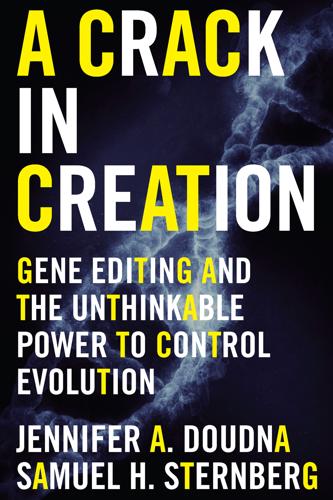
A Crack in Creation: Gene Editing and the Unthinkable Power to Control Evolution
by
Jennifer A. Doudna
and
Samuel H. Sternberg
Published 15 Mar 2017
Other motivations for editing the elephant genome to be more woolly mammoth–like include saving the endangered Asian elephant species and reducing carbon release from tundra. There is also an ethical argument for de-extinction. If we’ve driven a species to extinction and we now have the power to bring it back, do we have a duty to do so? One of the organizations leading the de-extinction movement, the Long Now Foundation, thinks so; its mission is to “enhance biodiversity through the genetic rescue of endangered and extinct species” using the tools of genetic engineering and conservation biology, and it engages in both de-extinction and extinction-prevention efforts. On its list of candidates for de-extinction are passenger pigeons, which were eradicated by hunting in the nineteenth century; great auks, whose populations plummeted in the sixteenth century because humans slaughtered them for their down; and gastric-brooding frogs, which were extinguished around 1980 by pathogenic fungi introduced into their native habitat by humans.
…
Leake, “Science Close to Creating a Mammoth,” Sunday Times, March 22, 2015. would it simply be an elephant with new traits inspired by woolly mammoth genetics: B. Shapiro, “Mammoth 2.0: Will Genome Engineering Resurrect Extinct Species?,”Genome Biology 16 (2015): 228–30. “enhance biodiversity through the genetic rescue of endangered and extinct species”: Long Now Foundation, “What We Do,” http://reviverestore.org/what-we-do/. evolutionary biologist Austin Burt proposed a way to harness selfish genes: A. Burt, “Site-Specific Selfish Genes as Tools for the Control and Genetic Engineering of Natural Populations,” Proceedings of the Royal Society of London B 270 (2003): 921–28.

The Singularity Is Near: When Humans Transcend Biology
by
Ray Kurzweil
Published 14 Jul 2005
DARPA's Information Processing Technology Office's project in this vein is called LifeLog, http://www.darpa.mil/ipto/Programs/lifelog; see also Noah Shachtman, "A Spy Machine of DARPA's Dreams," Wired News, May 20, 2003, http://www.wired.com/news/business/0,1367,58909,00.html; Gordon Bell's project (for Microsoft) is MyLifeBits, http://research.microsoft.com/research/barc/MediaPresence/MyLifeBits.aspx; for the Long Now Foundation, see http://longnow.org. 44. Bergeron is assistant professor of anesthesiology at Harvard Medical School and the author of such books as Bioinformatics Computing, Biotech Industry: A Global, Economic, and Financing Overview, and The Wireless Web and Healthcare. 45. The Long Now Foundation is developing one possible solution: the Rosetta Disk, which will contain extensive archives of text in languages that may be lost in the far future.
…
I have dreamed of taking these hundreds of thousands of records and scanning them into a massive personal database, which would allow me to utilize powerful contemporary search-and-retrieve methods on them. I even have a name for this venture—DAISI (Document and Image Storage Invention)—and have been accumulating ideas for it for many years. Computer pioneer Gordon Bell (former chief engineer of Digital Equipment Corporation), DARPA (Defense Advanced Research Projects Agency), and the Long Now Foundation are also working on systems to address this challenge.43 DAISI will involve the rather daunting task of scanning and patiently cataloging all these documents. But the real challenge to my dream of DAISI is surprisingly deep: how can I possibly select appropriate hardware and software layers that will give me the assurance that my archives will be viable and accessible decades from now?
…
The Long Now Foundation is developing one possible solution: the Rosetta Disk, which will contain extensive archives of text in languages that may be lost in the far future. They plan to use a unique storage technology based on a two-inch nickel disk that can store up to 350,000 pages per disk, with an estimated life expectancy of 2,000 to 10,000 years. See the Long Now Foundation, Library Ideas, http://longnow.org/10klibrary/10kLibConference.htm. 46. John A. Parmentola, "Paradigm Shifting Capabilities for Army Transformation," invited paper presented at the SPIE European Symposium on Optics/Photonics in Security and Defence, October 25–28, 2004; available electronically at Bridge 34.3 (Fall 2004), http://www.nae.edu/NAE/bridgecom.nsf/weblinks/MKEZ-65RLTA?OpenDocument. 47.

WTF?: What's the Future and Why It's Up to Us
by
Tim O'Reilly
Published 9 Oct 2017
The first one is a test that applies to those starting something new; the second is the harder test that you must pass in order to create something enduring. 3. TAKE THE LONG VIEW. The musician Brian Eno tells a story about the experience that led him to conceive of the ideas that evolved into the Long Now Foundation, a group that works to encourage long-term thinking. In 1978, Brian was invited to a rich acquaintance’s housewarming party, and as the neighborhood his cab drove through became dingier and dingier, he began to wonder if he was in the right place. “Finally [the cab driver] stopped at the doorway of a gloomy, unwelcoming industrial building,” he writes.
…
CHAPTER 16: WORK ON STUFF THAT MATTERS 353 “coming away stronger from the fight”: Rainer Maria Rilke, “The Man Watching,” Selected Poems of Rainer Maria Rilke, translation and commentary by Robert Bly (New York: Harper, 1981). 353 “incremental improvements to current technology”: Satya Nadella, Hit Refresh (New York: Harper Business, 2017), unpublished manuscript, 195. 355 “Father Madeleine made his fortune”: Victor Hugo, Les Misérables, translated by Charles E. Wilbour, revised and edited by Frederick Mynon Cooper (New York: A. L. Burt, 1929), 156. 356 “‘Well . . . that’s outside!’ she laughed”: Brian Eno, “The Big Here and Long Now,” Long Now Foundation, retrieved April 4, 2017, http://longnow.org/essays/big-here-long-now/. 356 We borrow from other countries to finance our consumption: James Fallows, “Be Nice to the Countries That Lend You Money,” Atlantic, December 2008, https://www.theatlantic.com/magazine/archive/2008/12/be-nice-to-the-countries-that-lend-you-money/307148/. 357 “I’m troubled by the problem of how to sell automobiles to them”: “‘How Will You Get Robots to Pay Union Dues?’”
…
See also data Information, The (tech report), 287 innovation waves, xxiii, 46–47, 339 Innovator’s Dilemma, The (Christensen), 351 Instagram, 96–97, 102 Intel, 12–13, 33 Internet and business organization changes, 123–24 commercializing process, 79–81 communications role, 90 cybercrime, 208–9 economic value of, 97 file sharing between users, 25–26 freedom leads to growth, 100–101 free software people and, 15 and GNN, 28–29, 38–39, 79–81, 89, 276 as neutral platform, 202–3 open source infrastructure, 19, 20 as operating system, 27–28, 35, 41 packet switching, 106–7 peer-to-peer file sharing, 26–27 programmers work from inside the application, 120–24 proprietary applications running on open source software, 25 SETI@home project, 26 survey of users, 81 TCP/IP development, 107–8 web spidering, 110 See also World Wide Web Internet Creators Guild, 289 Internet in a Box, 81 invention obvious in retrospect, 71–75 invisible hand theory, 262–70 iPhone, xiii, 32, 128, 136 iPhone App Store, 101, 128, 136 issue-tracking systems, 118–19 “It’s Still Day 1” (Bezos), 124 iTunes, 31 Jacobsen, Mark, 285 Janeway, Bill, 104–5, 115, 238, 247, 263, 274, 277–78, 284 Jefferson, Thomas, 130 Jensen, Michael, 240–41 jobs, xxvi, 301–3, 308, 320–21 and AI, xx–xxi, 91–92, 232–33 caring and sharing aspects, 308–11, 323–24, 332–33 creativity-based, 312–19 displacement and transformation of, 94 and education/training, 303, 304 independent contractor status at Uber and Lyft, 59 labor globalization, 67 and new technology, xvii optimism about the future, 298–302 reducing work hours, 304, 308–11 replacing with higher-value tasks, 94–95 universal basic income for, 305–6, 307–11 See also augmented workers; employees Jobs, Steve, 70, 313 Johnson, Bryan, 330 Johnson, Clay, 149 Johnson, Samuel, 313 Johri, Akhil, 256 Just for Fun (Torvalds), 14 Kahn, Bob, 107 Kalanick, Travis, 54, 69, 75 Kaplan, Esther, 193 Kasriel, Stephane, 333–34 Katsuyama, Brad, 237–38 Kernighan, Brian, 105–6 Kettl, Donald, 129 Keynes, John Maynard, 271–72, 298 Kickstarter, 291–92 Kilpi, Esko, 89–90 Kim, Gene, 122–23 Klein, Ezra, 143 knowledge, sharing vs. hoarding, 296–97, 323–25 Korea, 134 Korzybski, Alfred, 20, 195, 211, 314 Kressel, Henry, 284 Krol, Ed, 28 Kromhout, Peter, 116–17 Kwak, James, 258 labor globalization, 67 labor movement, 262–63 Lang, David, 183 language, 20–21, 323–24 language translation, 155–56, 165–66 Lanier, Jaron, 96 laser eye surgery, xvii Launchbury, John, 209 LaVecchia, Olivia, 103 Law of Conservation of Attractive Profits (Christensen), 24–25, 33–34, 331 Lazonick, William, 245, 247 Learning by Doing (Bessen), 345–47 LeCun, Yann, 164–65, 167, 234, 297 leisure time, 309–10, 314 Lessig, Larry, 130–31 Lessin, Jessica, 287 Lessin, Sam, 331 Levi, Margaret, 60 Levie, Aaron, 85–86 Lewis, Michael, 237 Lincoln, Abraham, 150, 323 Linux Kongress, Würzburg, Germany, 8–11 Linux operating system, xii, 7, 8, 23, 24 Long Now Foundation, 355–56 Loosemore, Tom, 186–87 “Looting” (Akerlof and Romer), 249 Lopez, Nadia, 371 Loukides, Mike, 38 Lucovsky, Mark, 119 Lyft, 47, 54–55, 58, 70, 77, 94, 183, 262, 318. See also Uber for topics that apply to both machine learning, 155, 163–69, 235–36, 334–36 MACRA (2015), 147–48 magical user experiences, 70, 83–86, 322 Magoulas, Roger, 155 Make (magazine), 337, 341 Makers and Takers (Foroohar), 251–52 Malamud, Carl, 125–26, 129, 130–31 Malaney, Pia, 263 management, xxi, 153–54, 247, 279–80 Managing UUCP and Usenet (O’Reilly), 38 Manber, Udi, 158 manufacturing technique advances, 327–28 manufacturing workers and offshoring, 349–50 Manyika, James, xxiii, 290 MapReduce, 325 maps, 3–5, 19–20, 35 of business models, 48–51, 57–61, 62–70 of energy sources and uses in the US economy, 363–64 the future of management, 153–54 Google Maps, xiii language as, 20–21 meme maps, 51–53 new maps, 75, 128–31, 203 scenario planning, 361 stock prices as a bad map, 243–45 and territory it claims to describe, 211–14, 268 user failure, 170–71 watching trends unfold, 345 Marder, Michael P., 217 marketplace at critical mass, 102–5 Markey, Edward J., 125 Markle Foundation Rework America task force, 320–21, 342–43 Marriage of Heaven and Hell (Blake), 265 mashups, 127, 128 Masiello, Betsy, 64 Mattison, John, 224 Maudslay, Henry, 324 Mazzucato, Mariana, 296 McAfee, Andy, xxii–xxiii McChrystal, Stanley, 116–17 McCloskey, Mike, 368 McCool, Rob, 81 McGovern, Pat, 344 McKusick, Kirk, 16 McLaughlin, David, 340–41 Meckling, William, 240–41 MediaLive International, 29 Medium, 89, 143, 183, 196, 226–27 Megill, Colin, 200, 221 meme maps, 51–53 memes (self-replicating ideas), 44, 205 Merchant of Venice, The (Shakespeare), 171 Messina, Chris, 42 Metaweb, 158 Microsoft, 5 Active/X, 10 barriers to entry against competitors, 13 and cloud computing, 113 and HITs, 166–67 HoloLens, 344, 345 and IBM, 12 investments in AI and “cognitive services,” 53 missing the Internet wave, 360 monopoly position, 33, 102–4 and open source software, 24 operating systems, 7 and World Wide Web, 99–100 Microsoft Network (MSN), 100 minimum wage, 264–68 Misérables, Les (Hugo), 355 Mitchell, Stacy, 103 MIT’s X Window System for Unix and Linux, 16 Molano Vega, Diego, 174 Money:Tech conference, 104 monopoly status, 33, 102–4 Monsanto, 326 Moonves, Leslie, 228 Moore’s Law, 36, 149 Morin, Brin, 341–42 Mosseri, Adam, 224, 226 Mother Night (Vonnegut), 357–58 Moto X phone (Google), 82–83 Mundie, Craig, 131 Muñoz, Cecilia, 148 Musk, Elon, xvi, 302, 329, 363 Nadella, Satya, 353 Napster, 25 narrow AI, 232–33 National Highway Traffic Safety Administration, 188–89 National Science Foundation (NSF), 80, 132 navigation, 83–84, 131, 176–77 Nest, 82 Netscape, 15 networks, xxiv, 90–91 centralization and decentralization, 105–8 hosting data centers, 121 insight vs. blinded by the familiar, 95–98 marketplace at critical mass, 102–5 networked marketplace platforms, 67 network effects, 34 platforms for physical world services, 92–95 thick marketplaces, 98–105, 128, 133 See also platforms Neuralink Brain-Machine interface, 329 neurotech interfaces, 328–32 NewMark, Craig, 101 news media, 18–19, 200–201, 201–8, 210–14, 225–28 Next:Economy Summit, 267, 303, 309, 369–70 Nielsen, Michael, 43 No Ordinary Disruption (Dobbs, Manykia, and Woetzel), xxiii Nordhaus, William, 296 Norvig, Peter, 33, 155–56 Norway, 305–6 O’Brien, Chris, 225 Occupy Wall Street movement, 229–31, 255 Oculus, 291 “Of the 1%, by the 1%, for the 1%” (Stiglitz), 255 Omidyar, Pierre, 357 on-demand blood-delivery drones, 370 on-demand education, 341–45 on-demand services, x, xxiii, xxiv, 67–68, 89, 92–95, 302, 309–10.

Beyond: Our Future in Space
by
Chris Impey
Published 12 Apr 2015
The evanescence of our civilization and cultural artifacts is sobering, given the technological prowess we exhibit. One book that conveyed this vividly was The World Without Us by A. Weisman 2007. New York: Picador. Weisman plays out a future where we cease to exist overnight and the infrastructure of human civilization decays and disappears with surprising rapidity. The Long Now Foundation swims against the dominant cultural trend by espousing “slower and better” over “faster and cheaper” and supporting projects with a millennial time frame. Most notably, its Clock of the Long Now is a mechanical timekeeping device designed to operate for 10,000 years without human intervention. 3.
…
Frank, 188 behavioral b’s, 15 Bell X-1, 71 Bell, Alexander Graham, 78 Bell Labs, 153 Benford, Gregory, 223–24 Benford, James, 223–24 Bennett, Charles, 230 Bering Strait, land bridge across, 8, 120, 218 Berlin Rocket Society, 32 Berlin Wall, 41 Berners-Lee, Tim, 78–79 Bernoulli, Daniel, 68 Berserker series (Saberhagen), 177, 259 Bezos, Jeff, 103 Bible, 148–49 big bang theory, 131, 255 “Big Ear” telescope, 237 Bigelow, Robert, 102–3 binary stars, 126 biohackers (grinders), 207 biomarkers, 216–18 Biosphere 2 experiment, 192–97, 193, 285–86 black projects, 69–70, 72, 144 Blade Runner, 204, 208, 259 Blue Origin, 103 Boeing X-37, 72, 85 Bohr, Niels, 213, 288 Bostrom, Nick, 207, 245–47, 260–61 Bounty, HMS, 202 Bradbury, Ray, 164 brains: computer interfaces with, 205–7 human, 12–17, 203, 283 of orcas, 190 radiation damage to, 115 simulation of, 259–61 “brain in a vat” concept, 260 Branson, Holly and Sam, 89 Branson, Richard Charles Nicholas, 80, 86–89, 95, 97–98, 101–2, 106 Breakthrough Propulsion Physics, 290 Brezhnev, Leonid, 42 Brightman, Sarah, 102 Brin, Sergey, 275 British Airways, 87 British Interplanetary Society, 221 Brokaw, Tom, 74 Brother Assassin (Saberhagen), 177 Bryan, Richard, 238 buckyballs, 151, 231 Buddhism, 20, 267 Bulletin of the Atomic Scientists, 197 Buran, 72 Burnett, Mark, 75 Burroughs, Edgar Rice, 164 Burrows, William, 35–36 Bush, George W., administration of, 93 Bussard, Robert, 222 butterfly effect, 195 By Rocket into Interplanetary Space (Oberth), 31 California, population dispersion into, 8 California, University of: at Irvine, 112, 223 at Los Angeles, 78 Calvin, William, 15 camera technology, 53, 176–77, 205 Cameron, James, 92, 120, 176 Canada, 142 canals, on Mars, 163 canards, 82–83 cancer, 180 cannonball, Newton’s experiment with, 25, 267 cannons: acceleration force of, 26 smooth-bore, 24 carbon, 172 in nanotechnology, 151–52, 182 as requirement for life, 123–24, 256 carbon dioxide, 132, 171, 172–73, 182, 193–94, 196, 218, 278 carbon nanotubes, 151–52 carbyne, 152 Cassini spacecraft, 52–53, 125, 182 Castro, Fidel, 41 casualties, early Chinese, 22 cataracts, 115 cats, 48–49, 251 causality principle, 230–31 cave paintings, 15 celestial property rights, 145–47 Center for Strategic and International Studies (CSIS), 158 centrifuges, 114 Cerf, Vinton, 67 Chaffee, Roger, 43 Challenger, explosion of, 55–56, 56, 74, 107, 271 Chang’e 3 lunar probe, 143, 162 chemical fuels, 219–21, 220 chickens, research using, 26 chimpanzees, 14 genetic diversity of humans vs., 202 China: as averse to innovation, 109 in early attempts at space travel, 21–22, 22, 68, 139, 141 population dispersion into, 7 revolution in, 141 rocket development in, 23–24, 113 space program of, 139–44, 140, 161, 162, 195, 276 US relations with, 144 Christian, Fletcher, 202 Christianity, 20 Chuansheng Chen, 11 civilization: Type I, 253, 254, 257 Type II, 253–54, 254, 257 Type III, 253, 254, 257 Type IV, 253, 254, 255 Clarke, Arthur C., 149–50, 164, 185, 201, 252 climate change, 197–98, 286 Clinton, Bill, 154 cloning, 251 Clynes, Manfred, 205 Cocconi, Giuseppe, 187 Colbert, Stephen, 74, 117 Cold War, 35–39, 41–43, 50, 55, 73, 76, 139, 145, 197 Columbia, disintegration of, 55, 56, 107 Columbia Accident Investigation Board Report, 107 Columbus, Christopher, 243 comets, 183 Commercial Orbital Transportation Services (COTS), 275 Committee on the Peaceful Uses of Outer Space, 145 communication: with alien species, 52, 189, 234–35, 238, 239, 246, 253, 255, 259 by digital data transmission, 66–67, 77–80 latency and, 178 space technology in, 153–54 Compaq, 95 computation, future technology of, 258–62 confinement, psychological impact of, 169–70 Congress, US: legislation in, 78, 144 on space programs, 38, 41, 75, 156, 158 consciousness, simulation of, 259–61 conservation biology, 201 conspiracy theories, 238, 240 Constellation program, 104 Contact (film), 236–37, 242 Contact (Sagan), 236 contraception, 200 Copernicus, 19, 20, 127 Coriolis force, Coriolis effect, 152 cosmic rays, 115, 160, 160, 164, 167, 168, 204 cosmism, 27 cosmonauts, 141 disasters of, 108 records set by, 115 selection criteria for, 74 Cosmos 1, 184 cosmos, cosmology, ancient concepts of, 17–20 Cosmos Studios, 184 Cosmotheoros (Huygens), 163 counterfactual thinking, 14 Cronkite, Walter, 74 cryogenic suspension, 250–51 cryptobiosis, 123 cryptography, 231, 291 Cuban missile crisis, 41–42 CubeSat, 184–85 Cultural Revolution, Chinese, 141–42 Curiosity rover, 165, 167, 176, 181 cybernetics, 206–7 Cyborg Foundation, 288 cyborgs (cybernetic organisms), 204–8, 288 Cygnus capsule, 100 cytosine, 6 dark energy, 256 d’Arlandes, Marquis, 68 DARPANET, 78 Darwin, Charles, 265 “Darwin” (machine), 227 Death Valley, 118–19 deceleration, 222, 223 DeepSea Challenger sub, 120 deep space, 126–29 Defense Advanced Research Projects Agency (DARPA), 78, 224 Defense Department, US, 38, 78, 90, 153 De Garis, Hugo, 258 Delta rockets, 72, 113 Delta-V, 111 Democritus, 19 Destination Mir (reality show), 75 Diamandis, Peter, 90–94, 97–98, 147, 156 diamonds, 131, 231 Dick, Philip K., 204–5 Digital Equipment Corporation, 213 DNA, 6–7, 9, 19, 189, 202, 228, 251, 263, 265, 266 Do Androids Dream of Electric Sheep (Dick), 205 dogs: brains of, 13 in scientific research, 251 in space travel, 40, 47 Dolly (sheep), 251 Doomsday Clock, 197–98, 246, 286 dopamine, 10, 98 Doppler method, exoplanet detection and characterization by, 127, 128, 129, 130, 133, 215 Doppler shift, 127 Dora-Mittelbau concentration camp, 33 Downey, Robert, Jr., 95 drag, in flight, 68, 83, 223 Drake, Frank, 187–88, 235, 237 Drake equation, 188, 189, 233–35, 237, 241, 243, 244, 253, 291–92 DRD4 alleles, 7R mutation in, 10–12, 11, 15, 98 Drexler, Eric, 226 drones, 180–81 Druyan, Ann, 184 Duke, Charles, 45 Dunn, Tony, 225 Dyson, Freeman, 226–27, 253 Dyson sphere, 253–54, 254 Earth: atmosphere of, 8, 70–71, 70 early impacts on, 50, 172 geological evolution of, 172 as one of many worlds, 17–20 planets similar to, 122, 124–26, 129–33, 224, 235 projected demise of, 197–98 as round, 19 as suited for human habitation, 118–22, 121, 234 as viewed from space, 45, 53, 121, 185, 270 Earth Return Vehicle, 169 “Earthrise” (Anders), 270 Earth similarity index, 215–16 eBay, 79, 95 Economist, The, 105 ecosystem, sealed and self-contained, 192–97, 193, 285 Eiffel Tower, 27, 149 Einstein, Albert, 220, 228, 256 Eisenhower, Dwight D., 36–39, 73, 79 electric cars, 96 electric solar sails, 186 electromagnetic waves, 186 e-mail, 78 embryo transport, 251 Enceladus, 177, 182, 227 potential habitability of, 125, 278 Encyclopædia Britannica, 95, 283 Endangered Species Act (1973), 201 energy: aliens’ use of, 190 civilizations characterized by use of, 252–57, 254, 258 dark, 256 declining growth in world consumption of, 257 Einstein’s equation for, 220 production and efficiency of, 219–24, 220 as requirement for life, 123–24 in rocket equation, 110 Engines of Creation (Drexler), 226 environmental disasters, 245 environmental protection: as applied to space, 147 movement for, 45, 235, 263, 270 Epicureans, 18 Epsilon Eridani, 187 Eratosthenes, 19 ethane, 52, 125 Ethernet, 213 eukaryotes, 172 Euripides, 18 Europa, 52, 97–98 potential habitability of, 125, 125, 161, 278 Europa Clipper mission, 98 Europe: economic depression in, 28 population dispersion into, 7–8, 11, 15 roots of technological development in, 23–24 European Southern Observatory, 133 European Space Agency, 159, 178–79 European Union, bureaucracy of, 106 Eustace, Alan, 120, 272 Evenki people, 119–20 Everest, Mount, 120 evolution: genetic variation in, 6, 203, 265 geological, 172 of human beings, 16–17 off-Earth, 203–4 evolutionary divergence, 201–4 exoplanets: Earth-like, 129–33, 215–18 extreme, 131–32 formation of, 215, 216 incidence and detection of, 126–33, 128, 233 exploration: as basic urge of human nature, 7–12, 109, 218, 261–63 imagination and, 262–63 explorer gene, 86 Explorer I, 38 explosives, early Chinese, 21–23 extinction, 201–2 extraterrestrials, see aliens, extraterrestrial extra-vehicular activities, 179 extremophiles, 122–23 eyeborg, 205–6 Falcon Heavy rocket, 114 Falcon rockets, 96, 97, 101, 184 Federal Aviation Administration (FAA), 82, 93, 105–7, 154 Fédération Aéronautique Internationale, 272 Felix and Félicette (cats), 48–49 Fermi, Enrico, 239–41 Fermilab, 254 “Fermi question,” 240–41, 243 Feynman, Richard, 179–80, 230, 270, 280 F4 Phantom jet fighter, 82 51 Peg (star), 126, 133 55 Cancri (star), 131 F-117 Nighthawk, 69 fine-tuning, 256, 294 fire arrows, 23, 68 fireworks, 21–24, 31 flagella, 180 flight: first human, 68 first powered, 69 principles of, 67–73 stability in, 82–83 “Fly Me to the Moon,” 45 food: energy produced by, 219, 220 in sealed ecosystem, 194–95 for space travel, 115–16, 159, 170 Forward, Robert, 223 Foundation series (Asimov), 94 founder effect, 202–3 Fountains of Paradise, The (Clarke), 149 France, 48, 68, 90 Frankenstein monster, 206, 259 Fresnel lens, 223 From Earth to the Moon (Verne), 183 fuel-to-payload ratio, see rocket equation Fukuyama, Francis, 207 Fuller, Buckminster, 151, 192 fullerenes, 151 Futron corporation, 155 Future of Humanity Institute, 245 “futurology,” 248–52, 249 Fyodorov, Nikolai, 26, 27 Gagarin, Yuri, 40–41, 41, 66, 269 Gaia hypothesis, 286 galaxies: incidence and detection of, 235 number of, 255 see also Milky Way galaxy Galileo, 49–50, 183, 270 Gandhi, Mahatma, 147 Garn, Jake, 114 Garn scale, 114 Garriott, Richard, 92 gas-giant planets, 125, 126–29 Gauss, Karl Friedrich, 238 Gazenko, Oleg, 47 Gemini program, 42 Genesis, Book of, 148–49 genetic anthropology, 6 genetic code, 5–7, 123 genetic diversity, 201–3 genetic drift, 203 genetic engineering, 245, 249 genetic markers, 6–7 genetics, human, 6–7, 9–12, 120, 201–4 Genographic Project, 7, 265 genome sequencing, 93, 202, 292 genotype, 6 “adventure,” 11–12, 98 geocentrism, 17, 19–20, 49 geodesic domes, 192 geological evolution, 172 George III, king of England, 147 German Aerospace Center, 178 Germany, Germans, 202, 238 rocket development by, 28, 30–34, 141 in World War II, 30–35 g-forces, 46–49, 48, 89, 111, 114 GJ 504b (exoplanet), 131 GJ 1214b (exoplanet), 132 glaciation, 172 Glenn Research Center, 219 global communications industry, 153–54 Global Positioning System (GPS), 144, 153–54 God, human beings in special relationship with, 20 Goddard, Robert, 28–32, 29, 36, 76, 78, 81–82, 94, 268 Goddard Space Flight Center, 178 gods, 20 divine intervention of, 18 Golden Fleece awards, 238 Goldilocks zone, 122, 126, 131 Gonzalez, Antonin, 215 Goodall, Jane, 14 Google, 80, 92, 185, 272, 275 Lunar X Prize, 161 Gopnik, Alison, 10, 13 Grasshopper, 101 gravity: centrifugal force in, 26, 114, 150 in flight, 68 of Mars, 181, 203 Newton’s theory of, 25, 267 and orbits, 25, 114–15, 127, 128, 149–50, 267 in rocket equation, 110 of Sun, 183 waves, 255 see also g-forces; zero gravity Gravity, 176 gravity, Earth’s: first object to leave, 40, 51 human beings who left, 45 as obstacle for space travel, 21, 105, 148 as perfect for human beings, 118 simulation of, 168–69 Great Art of Artillery, The (Siemienowicz), 267 Great Britain, 86, 106, 206, 227 “Great Filter,” 244–47 Great Leap Forward, 15–16 “Great Silence, The,” of SETI, 236–39, 240–41, 243–44 Greece, ancient, 17–19, 163 greenhouse effect, 171, 173 greenhouse gasses, 132, 278 Griffin, Michael, 57, 147, 285–86 grinders (biohackers), 207 Grissom, Gus, 43 guanine, 6 Guggenheim, Daniel, 81, 268 Guggenheim, Harry, 81 Guggenheim Foundation, 30, 81–82, 268 gunpowder, 21–24, 267 Guth, Alan, 257 habitable zone, 122, 124–26, 130–31, 132, 188, 241, 246, 277–78, 286, 291 defined, 124 Hadfield, Chris, 142 hair, Aboriginal, 8 “Halfway to Pluto” (Pettit), 273 Hanson, Robin, 247 haptic technology, 178 Harbisson, Neil, 205, 288 Harvard Medical School, 90 Hawking, Stephen, 88, 93, 198, 259 HD 10180 (star), 127 Heinlein, Robert, 177 Heisenberg compensator, 229 Heisenberg’s uncertainty principle, 229–30 heliocentrism, 19 helium, 68 helium 3, 161–62 Herschel, William, 163 Higgs particle, 256 High Frontier, 146–47 Hilton, Paris, 88, 101–2 Hilton hotels, 145 Hinduism, 20 Hiroshima, 222 Hitler, Adolf, 32, 34 Hope, Dennis M., 145, 147 Horowitz, Paul, 237–38 hot Jupiters, 127–28, 130 Hubble Space Telescope, 56–57, 65, 218, 225 Huffington, Arianna, 92 human beings: as adaptable to challenging environments, 118–22 as alien simulations, 260–61, 260 creative spirit of, 73, 248 early global migration of, 5–12, 9, 11, 15, 19, 118, 120, 186, 202, 218, 262, 265 Earth as perfectly suited for, 118–22, 121 exploration intrinsic to nature of, 7–12, 109, 218, 261–63 first appearance of, 5, 15, 172, 234 impact of evolutionary divergence on, 201–4 as isolated species, 241–42 as lone intelligent life, 241, 243 merger of machines and, see cyborgs minimal viable population in, 201–2, 251 off-Earth, 203–4, 215, 250–52 requirements of habitability for, 122, 124–26, 129, 130–31 sense of self of, 232, 261 space as inhospitable to, 53–54, 114–17, 121, 123 space exploration by robots vs., 53–57, 66, 98, 133, 161, 177–79, 179, 208, 224–28 space travel as profound and sublime experience for, 45, 53, 117, 122 speculation on future of, 93, 94, 204, 207–8, 215, 244–47, 248–63, 249 surpassed by technology, 258–59 threats to survival of, 94, 207–8, 244–47, 250, 259–62, 286, 293 timeline for past and future of, 248–50, 249 transforming moment for, 258–59 Huntsville, Ala., US Space and Rocket Center in, 48 Huygens, Christiaan, 163 Huygens probe, 53 hybrid cars, 96 hydrogen, 110, 156, 159, 161, 187, 219, 222 hydrogen bomb, 36 hydrosphere, 173 hyperloop aviation concept, 95 hypothermia, 251 hypothetical scenarios, 15–16 IBM, 213 Icarus Interstellar, 224 ice: on Europa, 125 on Mars, 163–65, 227 on Moon, 159–60 ice ages, 7–8 ice-penetrating robot, 98 IKAROS spacecraft, 184 imagination, 10, 14, 20 exploration and, 261–63 immortality, 259 implants, 206–7 inbreeding, 201–3 India, 159, 161 inflatable modules, 101–2 inflation theory, 255–57, 255 information, processing and storage of, 257–60 infrared telescopes, 190 Inspiration Mars, 170–71 Institute for Advanced Concepts, 280 insurance, for space travel, 106–7 International Academy of Astronautics, 152 International Geophysical Year (1957–1958), 37 International Institute of Air and Space Law, 199 International MicroSpace, 90 International Scientific Lunar Observatory, 157 International Space Station, 55, 64–65, 64, 71, 75, 91, 96, 100, 102, 142, 143, 144, 151, 153, 154, 159, 178–79, 179, 185, 272, 275 living conditions on, 116–17 as staging point, 148 supply runs to, 100–101, 104 International Space University, 90 International Traffic in Arms Regulation (ITAR), 105–6, 144 Internet: Congressional legislation on, 78, 144 development of, 76–77, 77, 94, 95, 271 erroneous predictions about, 213–14 limitations of, 66–67 robotics and, 206 space travel compared to, 76–80, 77, 80 Internet Service Providers (ISPs), 78 interstellar travel, 215–18 energy technology for, 219–24 four approaches to, 251–52 scale model for, 219 Intrepid rovers, 165 Inuit people, 120 Io, 53, 177 property rights on, 145 “iron curtain,” 35 Iron Man, 95 isolation, psychological impact of, 169–70 Jacob’s Ladder, 149 Jade Rabbit (“Yutu”), 139, 143, 161 Japan, 161, 273 Japan Aerospace Exploration Agency (JAXA), 184 Jefferson, Thomas, 224 Jemison, Mae, 224 jet engines, 69–70 Jet Propulsion Laboratory, 141 Johnson, Lyndon, 38, 42, 45, 158, 269 Johnson Space Center, 76, 104, 179, 206, 229, 269 see also Mission Control Jones, Stephanie Tubbs, 74 Joules per kilogram (MJ/kg), 219–20, 222 Journalist in Space program, 74 “junk” DNA, 10, 266 Juno probe, 228 Jupiter, 126, 127, 177, 217, 270 distance from Earth to, 50 moons of, 97, 125, 125 probes to, 51–52, 228 as uninhabitable, 125 Justin (robot), 178 Kaku, Michio, 253 Karash, Yuri, 65 Kardashev, Nikolai, 253 Kardashev scale, 253, 254, 258 Kármán line, 70, 70, 101 Kennedy, John F., 41–43, 45 Kepler, Johannes, 183 Kepler’s law, 127 Kepler spacecraft and telescope, 128, 128, 129–31, 218, 278 Khrushchev, Nikita, 42, 47 Kickstarter, 184 Killian, James, 38 Kline, Nathan, 205 Knight, Pete, 71 Komarov, Vladimir, 43, 108 Korean War, 141 Korolev, Sergei, 35, 37 Kraft, Norbert, 200 Krikalev, Sergei, 115 Kunza language, 119 Kurzweil, Ray, 94, 207, 259 Laika (dog), 47, 65, 269 Laliberté, Guy, 75 landings, challenges of, 51, 84–85, 170 Lang, Fritz, 28, 268 language: of cryptography, 291 emergence of, 15, 16 of Orcas, 190 in reasoning, 13 Lansdorp, Bas, 170–71, 198–99, 282 lasers, 223, 224, 225–26, 239 pulsed, 190, 243 last common ancestor, 6, 123, 265 Late Heavy Bombardment, 172 latency, 178 lava tubes, 160 legislation, on space, 39, 78, 90, 144, 145–47, 198–200 Le Guin, Ursula K., 236–37 Leonov, Alexey, 55 L’Garde Inc., 284 Licancabur volcano, 119 Licklider, Joseph Carl Robnett “Lick,” 76–78 life: appearance and evolution on Earth of, 172 artificial, 258 detection of, 216–18 extension of, 26, 207–8, 250–51, 259 extraterrestrial, see aliens, extraterrestrial intelligent, 190, 235, 241, 243, 258 requirements of habitability for, 122–26, 125, 129, 131–33, 241, 256–57 lifetime factor (L), 234–335 lift, in flight, 68–70, 83 lift-to-drag ratio, 83 light: from binary stars, 126 as biomarker, 217 Doppler shift of, 127 momentum and energy from, 183 speed of, 178, 228–29, 250, 251 waves, 66 Lindbergh, Charles, 30, 81–82, 90–91, 268 “living off the land,” 166, 200 logic, 14, 18 Long March, 141 Long March rockets, 113, 142, 143 Long Now Foundation, 293 Los Alamos, N. Mex., 239 Los Angeles Times, 71 Losing My Virginity (Branson), 86, 87 Louis IX, king of France, 23 Louis XVI, king of France, 68 Lovelock, James, 286 Lowell, Percival, 163–64 Lucian of Samosata, 20 Lucretius, 18–19 Luna program, 50–51 Lunar and Planetary Laboratory, 156 Lunokhod rover, 143 Lynx rocket plane, 101 M5 fiber, 161 McAuliffe, Christa, 55, 74 Mack 3 Blackbird, 69 McKay, Chris, 173 McLellan, William, 283 magnetic implants, 207 magnetic resonance imaging (MRI), 190 magnetic sails, 186, 223 magnitude of time, 248–50, 249 Manhattan Project, 36, 221 Manifest Destiny, applied to space, 146–47, 199 Manned Habitat Unit, 169 many worlds concept, 17–20, 17, 49, 267 Mao Zedong, 141 Marconi, Guglielmo, 237 Mariner 2, 51 Mariner 4, 164 Marino, Lori, 190 Marriott hotels, 145 Mars, 28, 237, 270 challenges of travel to, 166–70 distance from Earth to, 50, 148, 166 Earth compared to, 171–72, 216 establishing a colony on, 166–71, 169, 192, 195, 200–201, 203, 214, 248 evidence of water on, 124–25, 163–66, 165, 173 fly-bys of, 51, 170 imaginative perceptions of, 163–65 latency on, 178 map of, 163 obstacles to exploration of, 66–67, 148 one-way journey to, 166, 170–71, 200 as potentially habitable, 124–25, 163, 165–66, 171, 172–74, 234, 278 privately funded missions to, 170–71 probes to, 40, 51, 52, 164–65, 176, 246 projected exploration of, 94–98, 101, 104, 115, 119, 157, 161, 163–74, 178, 181, 182 property rights on, 145, 198–99 sex and reproduction on, 200 simulated journey to, 169–70 soil of, 170 staging points for, 161 terraforming of, 172–74, 182, 216, 227 tests for life on, 52 Mars Direct, 169 Mars500 mission, 169 Mars One, 170–71, 198–201 Mars Society, 166 Mars 3 lander, 51 Masai people, 120 Massachusetts General Hospital, 250 Masson-Zwaan, Tanja, 199 mathematics, 19 as universal language, 236–37 Matrix, The, 260 matter, manipulation of, 258 matter-antimatter annihilation, 220, 220, 221–22 Mavroidis, Constantinos, 182 Max-Q (maximum aerodynamic stress), 46 Maxwell, James Clerk, 183 Mayor, Michel, 126–28, 133 medicine: challenges and innovation in, 92–93, 263 cyborgs in, 205 medicine (continued) as lacking in space, 200 in life extension, 259 nanotechnology in, 225, 259 robots in, 180, 181, 182, 205 mediocrity, principle of, 261 Mendez, Abel, 278 mental models, 13–17, 18–19 Mercury: orbit of, 126, 215 property rights on, 145 as uninhabitable, 124 mercury poisoning, 118 Mercury program, 41, 42, 71, 74, 272 meta-intelligence, 94 meteorites, 152, 160, 160, 164, 195 methane, 52–53, 125, 132, 278 as biomarker, 217–18 methanogens, 217 “Method of Reaching Extreme Altitudes, A” (Goddard), 30, 31 Methuselah, 131 mice, in scientific research, 48–49, 250–51 microbes, microbial life, 97–98, 173, 174, 217, 241, 246, 286 habitable environments for, 122–25, 165–66, 186 microcephaly, 203 microgravity, 115 microsatellites, 90 Microsoft, 84, 188 microwaves: beaming of, 223–24 signals, 187 Microwave Sciences, 223 Middle East, population dispersion into, 8, 118 migration: early human population dispersion through, 5–9, 9, 15, 19 motivation for, 9–12, 11 military: covert projects of, 69–72 Eisenhower’s caveat about, 79 in Internet development, 77, 78–79 nanotechnology in, 180–81, 225 in rocket development, 30, 32–39, 55–56, 71 in space programs, 73, 76, 79, 144, 153 Milky Way galaxy, 227, 240, 253, 263, 270 ancient Greek concept of, 18 Drake equation for detectable life in, 188, 233–35 Earth-like exoplanets in, 129–33, 233, 291 formation and age of, 235 size of, 242 Millis, Marc, 290 mind control, 245 mind uploading, 259 miniaturization, see nanotechnology minimum viable population, 201, 251 mining: of asteroids, 155–56, 182, 214 of Enceladus, 227 on Moon, 214 by robots, 178, 182 Minsky, Marvin, 177, 179 MirCorp, 75 mirrors, 173 Mir Space Station, 75, 115, 167–68 Miss Baker (monkey), 47–48, 48 Mission Control, 43, 100, 158, 269 MIT, 38, 77, 90, 141, 226, 257 mitochondrial DNA, 6, 9 Mittelwerk factory, 33, 35 Mojave Desert, 71, 82, 83 population adaptation to heat in, 118–19 molecules, in nanotechnology, 151 Mongols, 23, 24 monkeys, in space research, 47–48, 48 Montgolfier brothers, 68 Moon: age of, 50 ancient Greek concept of, 18 in asteroid capture, 156 distance from Earth to, 49–50, 150, 166, 267 first animals on, 49 first man on, 71, 158 latency on, 178 lunar base proposed for, 157–63, 158, 160, 195, 214, 248 manned landings on, 44–45, 49–50, 54, 56, 63, 71, 84, 99, 104, 108, 143, 157, 158, 176, 219, 270, 272 obstacles to exploration of, 66 orbit of, 25 probes to, 40, 51, 129, 140, 143 projected missions to, 92, 143, 157–63, 166, 214, 275 property rights on, 145–47, 198–99 proposed commercial flights to, 102 in science fiction, 20, 26 soil of, 159, 160, 162 as staging point for Mars, 161 staging points for, 148 telescopic views of, 31, 49–50 as uninhabitable, 124, 166 US commitment to reach, 41–45 Moon Treaty (1979), 146 Moon Treaty, UN (1984), 279 Moore, John, 203 Moravec, 259–60 Morgan, Barbara, 74 Morrison, Philip, 187, 239 Mosaic web browser, 79 Moses, 148 motion, Newton’s laws of, 25, 67–68 multistage rockets, 29 multiverse, 252–57, 255 Musk, Elon, 94–98, 97, 100–101, 112–13, 148, 205 mutation, 6–7 cosmic rays and, 204 7R, 10–12, 11, 15 mutually assured destruction, 42 Mylar, 184, 225 N1/L3 rocket, 44, 54 nanobots, 179–82, 181, 224–28 NanoSail-D, 184, 185 nanosponges, 180 nanotechnology, 151–52, 179–82, 208, 214, 245, 280, 283 projected future of, 257–59 see also nanobots National Aeronautics and Space Administration (NASA), 83, 90, 96, 97–98, 114, 116–17, 128, 144, 153, 156, 176, 178, 182, 184–85, 185, 195, 200, 205, 206, 216, 224, 226, 271, 275, 280, 290 and Air Force, 71 artistic depiction of space colonies by, 196, 196 budget of, 39, 42, 43, 49, 54, 64, 75, 99, 104, 140, 144, 158, 166, 188, 238, 270, 272, 284 cut back of, 45, 49, 54, 188 formation of, 38–39, 145, 269 private and commercial collaboration with, 99–102, 104 revival of, 103–5 space program of, 51, 55–56, 71–76, 92, 157–58, 285–86 stagnation of, 63–67, 141, 147, 166 National Geographic Society, 7, 265 National Radio Astronomy Observatory, 187–88 National Science Foundation (NSF), 78–79 Native Americans, 118 naturalness, 256 natural selection, 6, 16, 123, 164, 251, 291 Nature, 187 Naval Research lab, 37 Navy, US: Bureau of Aeronautics, 30 in rocket development, 36–37 Nayr, Ernst, 238 Nazis, 48 Propaganda Ministry of, 32 von Braun and, 32–34, 141, 269 NBC, 75 Nedelin, Mitrofan, 43 “needle in a haystack” problem, 188–89, 242–43 “Nell” (rocket), 29 Neptune, 127, 131, 225 as uninhabitable, 125 Nergal, 163 Netscape, 80 New Mexico, 88, 88, 105 Newton, Isaac, 24–25, 25, 30, 67–68, 110, 262, 267 New York Times, 30, 94 Nicholas, Henry, 214 Niven, Larry, 198, 253 Nixon, Richard, 108, 167 Nobel Prize, 126, 180, 214 nomad planets, 128 Noonan, James, 266 nuclear fission, 220, 220, 221 nuclear fusion, 110, 161–62, 220, 221, 221, 222 nuclear reactors, 224 nuclear weapons, 36, 42, 78, 129, 146, 197–98, 222, 234–35, 244, 245, 246, 286 Nuremberg Chronicles, 17 Nyberg, Karen, 200 Obama, Barack, 104 Oberth, Hermann, 28, 31–32, 36, 268 oceans: acidification of, 195 sealed ecosystem proposed for, 197 Oculus Rift, 176 Ohio, astronauts from, 74 Okuda, Michael, 228 Olsen, Ken, 213 100 Year Starship project, 224 100 Year Starship Symposium, 229 101955 Bennu (asteroid), 156 O’Neill, Gerard, 196, 251–52 Opportunity rover, 165 optical SETI, 190, 243 Orbital Sciences Corporation, 100–101, 275 orbits: concept of, 25 geostationary, 149–50, 150 legislation on, 146 low Earth, 49, 54, 63, 70–71, 70, 74–75, 97, 100, 110, 113–14, 151, 155, 184 manned, 40–41, 141–42 staging points from, 148 orcas, 190 Orion spacecraft, 104 Orteig, Raymond, 90 Orteig Prize, 90–91 Orwell, George, 35 OSIRIS-REx, 156 Outer Space Treaty (1967), 145–47, 198–99 “Out of the Cradle, Endlessly Rocking” (Clarke), 201 oxygen, 156, 159, 161, 170, 172, 173–74, 182, 193–95, 214 Oymyakon, Siberia, population adaptation to cold in, 119–20 ozone, as biomarker, 217 Pacific Ocean, 9, 224 Pac-Man, 175 Page, Larry, 92 Paine, Thomas, 167 Pale Blue Dot (Sagan), 121 “Pale Blue Dot,” Earth as, 53, 118–22, 121, 130 Paperclip, Operation, 141 parabolic flight, 93 paradox, as term, 241 Paratrechina longicornis (crazy ant), 193 Parkinson’s disease, 202–3 particle physics, standard model of, 256 Pascal, Blaise, 120 Pauley, Phil, 196–97 PayPal, 95, 97 Pensées (Pascal), 120 People’s Daily, 162 People’s Liberation Army, 144 Pericles, 18 Pettit, Don, 100, 273 phenotype, 6 philanthropy, 95 PhoneSat, 185 photons, 183, 186 in teleportation, 229, 230, 231 photosynthesis, as biomarker, 217 pigs, 250 Pinker, Steven, 16 Pioneer probes, 50, 51–52 piracy, 24 Pitcairn Island, 202 planetary engineering, 172 Planetary Resources, 156 planetary science, 51–52, 176 Planetary Society, 184 planets: exploration of, 49–53 formation of, 156 plate techtonics, 132, 241 play, imagination in, 10, 14 pluralism, 17–20, 17, 49 plutonium, 66 poetry, space, 272–73 politics, space exploration and, 63–64, 104, 141, 214, 238 Polyakov, Valeri, 115, 167–68 population bottleneck, 201–2, 287 Poynter, Jane, 193 Princess of Mars, A (Burroughs), 164 Principia (Newton), 25 Project Orion, 221, 221 Project Ozma, 187–88, 237, 253 prokaryotes, 172 property rights, in space, 145–47, 198 Proton rockets, 65, 113 proton scoop, 222–23 Proxmire, William, 238 Puerto Rico, 239, 243 pulsar, 131 Pythagorean Theorem, 238 Qian Xuesen, 141 Qi Jiguang, 24 Qualcomm Tricorder X Prize, 92 quantum entanglement, 230–32, 230 quantum genesis, 255 quantum mechanics, 258 quantum teleportation, 230–32, 230 quantum theory, 189 qubits, 230 Queloz, Didier, 126–28, 133 R-7 rocket, 37 R-16 rocket, 43 radiation, infrared, 109, 253–54, 254 radioactivity, as energy source, 124, 181 radio waves, 66, 187, 189, 242 ramjets, 222–23 RAND Corporation, 222 Rare Earth hypothesis, 241 RCS Energia, 106 RD-180 engine, 72 Reagan, Ronald, administration of, 167, 271 reality TV, 75, 171, 214, 282 “Realm of Fear,” 229 reasoning, human capacity for, 13–17, 18–19 red dwarfs, 131 Red Mars (Stanley), 174 Red Scare, 141 Redstone rocket, 36–37, 71 reindeer, 119–20 remote sensing, 175–91, 224 RepRap Project, 227 reproduction, sexual, 6, 172 Ride, Sally, 74 “Right Stuff,” as term, 71, 114 Right Stuff, The (Wolfe), 272 Ringworld series (Niven), 253 risk: as basic to human nature, 9, 262 genetic factor in, 10–12 of living on Mars, 167–70 in pushing human limits, 120 of space tourism, 102, 105–9, 155 of space travel, 42–43, 55–56, 56, 106–9, 152–53 Robinson, Kim Stanley, 174 robonaut project, 179 robots, robotics: as aids to humans, 249, 250 in asteroid redirection, 104 commercial, 178 ethical issues of, 179 nanotechnology in, 179–82, 181 remote control of, 177–78 remote sensing through, 176 self-assembly and self-replication by, 226–28, 258, 259 in spacecraft, 50, 100, 100 space exploration by, 53–57, 66, 98, 133, 161, 177–79, 179, 208, 224–28 see also cyborgs; nanobots Rocketdyne, 112 rocket equation, 27, 53, 72–73, 110–11, 111, 148, 220, 268 rocket fuel, 110–13, 148, 156, 159, 161 comparison of efficiency of, 219–24 Rocket Performance Calculator, 222 rockets: alternatives to, 148–53 “bible” of, 267 challenges in launching of, 43–44, 46–49, 106, 107, 111–12, 148 comparison of US and Soviet, 44 cost of, 112–13, 113 developing technology of, 21–39, 43, 101, 103, 112–13, 183, 262 fuel for, 110–13, 148, 156, 159, 161, 220–21 launched from planes, 84 liquid-fueled, 28–29, 29 physics and function of, 110–14 proposed energy technologies for, 220–24 reusable, 101, 103, 111, 112, 113 solar sails compared to, 183 as term, 23 visionaries in development of, 26–30, 94 in warfare, 22–24, 30, 32–34 see also specific rockets “Rockets to the Planets in Space, The” (Oberth), 28 Rogers Commission, 271 Rohrabacher, Dana, 284 Rome, ancient, 18, 67, 163 Rovekamp, Roger, 207 rovers, 66–67, 92, 125, 140, 143, 158, 165, 167 nanotechnology in, 181–82 remote sensing through, 176 Rozier, Jean-François de, 68 RP-1 kerosine, 110 RS-25 rocket, 112 Russia, 23, 26–27, 149, 178 space program of, 37, 65–66, 72, 75, 84, 91, 104, 106, 107–8, 113, 114, 140, 143, 168, 184, 195, 200, 271 space tourism by, 75, 102 tensions between US and, 72 see also Soviet Union Russian Revolution, 27, 47 Russian Space Agency, 102 Rutan, Burt, 72, 82–86, 85, 88, 88, 89, 91, 97–98, 105–6, 214 Rutan, Dick, 83–84 Rutan Aircraft Factory, 83 Saberhagen, Fred, 177, 259 Sagan, Carl, 53, 121–22, 121, 176–77, 184, 198, 234–35, 238, 240 Sahakian, Barbara, 98 Sahara Desert, 238 sails: solar, 183–86, 185 wind-driven, 67–68, 183, 262 Salyut space station, 54, 108 satellites: artificial Earth, 36–39, 37, 40, 65, 71, 106 commercial, 96, 105 communications, 101, 142, 153 in energy capture, 253 geostationary, 149 GPS, 144 launching of, 154, 154 miniature, 90, 184–85 Saturn: moon of, 125, 227 probes to, 52–53 as uninhabitable, 125 Saturn V rocket, 43, 44, 46, 54, 83, 104, 111, 113, 113, 166 Scaled Composites, 83, 89 science fiction, 192, 196, 222, 223, 239, 250, 253 aliens in, 186–87 in film, 28, 204 Mars in, 164, 174 roots of, 20 technologies of, 228–32, 259 see also specific authors and works scientific method, 213 Search for Extraterrestrial Intelligence (SETI), 187–90, 234, 239, 254 evolution and technology of, 237–39, 242–43, 242 lack of signals detected by, 236–37, 240–44 new paradigms for, 258 “Searching for Interstellar Communications” (Cocconi and Morrison), 187 sea travel: early human migration through, 8, 9 exploration by, 109, 262 propulsion in, 67–68 self-replication, 226–28, 258, 259 Senate, US, Armed Services Preparedness Committee of, 39 SETI Institute, 188 78–6 (pig), 250 sex: promiscuous, 12 in reproduction, 6, 172 in space, 200, 214 Shackleton Energy Company, 161 Shane, Scott, 98 Shatner, William, 88–89 Shelley, Mary, 206 Shenlong (“Divine Dragon”), 145 Shenzhou 10, 142–43 Shepard, Alan, 41, 84 Shostak, Seth, 243 Siberia, 65, 119–20, 238 population dispersion into, 8, 118, 218 Sidereal Messenger, The (Galileo), 270 Siemienowicz, Kazimierz, 267 Simonyi, Charles, 75 Sims, 175 simulation: infinite regression in, 261 living in, 257–62 simulation hypothesis, 261 Sinatra, Frank, 45 singularity, 207 in origin of cosmos, 255 and simulation, 257–62 technological, 258–59 Singularity University, 94, 259 Skylab space station, 54, 116 Skype video, 176 smart motes, 181, 225 smartphones, 92, 185 Smithsonian Institution, 30, 81 Smithsonian National Air and Space Museum, 85, 91, 271 Snow Crash (Stephenson), 103 Snowden, Edward, 178 social media, 195 Sojourner rover, 165 SolarCity, 96–97 solar flares, 167 solar power, 96, 181, 183–86 solar sails, solar sailing, 183–86, 185, 223, 225, 227 Solar System: discovery of first planet beyond, 126–27 edge of, 50, 53, 121 formation of, 156 habitability potential in, 122, 124–26 latency variations in, 178 probes into, 51–52, 66, 177, 185–86, 208, 270 projected travel within, 248–49, 263 property rights in, 145–47, 198 worlds beyond, 126–29, 156, 208, 215, 250, 263 solar wind, 162, 223 sound barrier, breaking of, 69, 71 South America, 11, 202, 218 Soviet Union, 30, 34, 37, 141 fall of, 47, 65, 75, 197, 271–72 rocket development in, 35–39 space program failures and losses of, 43, 47, 50–51, 54, 269 space program of, 37–39, 40–43, 141, 149, 237, 271 Soyuz spacecraft, 43, 55, 75, 84, 91, 102, 106, 113, 143 crash of, 107–8 space: civilians in, 55, 74 civilian vs. military control of, 37–39, 69–71, 79, 153 commercialization of, 55, 63, 73–76, 79–80, 88–89, 92, 97, 99–109, 100, 110, 147, 153–56, 154, 199, 214, 249, 275 debris in, 144, 152 first American in, 41 first man in, 40–41, 41 first women in, 40, 74 as infinite, 18, 19, 22 as inhospitable to human beings, 53–54, 114–17, 121 legislation on, 39, 78, 90, 144, 145–47, 198–200 living in, 192–208 “living off the land” in, 166, 200 peaceful exploration of, 39 potential for human habitabilty in, 123 prototype for sealed ecosystem in, 192–97 Space Act (1958), 39, 90 Space Adventures, 102, 275 space colonization: challenges of, 197–201 cyborgs in, 204–8 evolutionary diversion in, 201–4 legal issues in, 198–200 of Mars, 166–71, 169, 192, 195, 203 off-Earth human beings in, 215, 250–51 prototype experiments for, 192–97 space elevators, 27, 148–53, 150, 160–61, 185, 280 “Space Exploration via Telepresence,” 178 Spaceflight Society, 28 space hotels, 102–3 Space Launch System (SLS), 104 space mining, 155–56, 161–62 “Space Oddity,” 142 spaceplanes, 71–72, 85, 144 Spaceport America, 1–6, 105 Space Race, 35–39, 37, 40–43, 50, 55, 139 SpaceShipOne, 72, 85, 85, 88–89, 88, 91 SpaceShipTwo, 88, 101, 105 Space Shuttle, 45, 46, 49, 64, 72, 84, 85, 111–13, 112, 159, 167, 194, 219–20, 222, 275 disasters of, 55–56, 56, 74–75, 107, 111–13 final flight of, 271 limitations of, 55–56, 64–65 as reusable vehicle, 54–55 space sickness, 114 spacesuits, 89, 182, 195–96 space-time, 255, 255 manipulation of, 258 space tourism, 63, 73, 75–76, 79–80, 88–89, 91, 101–3, 154, 170, 214 celebrities in, 88, 101–2 revenue from, 154–55, 155 risks of, 102, 105–9, 155 rules for, 105 space travel: beyond Solar System, see interstellar travel bureaucracy of, 105–10, 271 cost of, 39, 42, 45, 49, 54, 55, 66, 75, 81–82, 91, 112–14, 113, 139–49, 153, 155–56, 158–59, 161, 166, 179, 183, 198, 214, 217, 222, 224–26, 252, 270, 275, 284 early attempts at, 21–22, 22 effect of rocket equation in, see rocket equation entrepreneurs of, 81–98 erroneous predictions about, 214 failures and disasters in, 21–22, 22, 38, 43, 47, 50–51, 54–56, 56, 63–64, 68, 72, 74–75, 101, 102, 107, 142, 184, 269, 271, 275 fatality rate of, 107–9 fictional vignettes of, 1–4, 59–62, 135–38, 209–12 Internet compared to, 76–80, 77, 80 life extension for, 250–51 lifetimes lived in, 251 living conditions in, 114–17 new business model for, 99–105 Newton’s theories as basis of, 25 obstacles to, 21, 63, 66–67, 105–109 space travel (continued) as part of simulation, 261–62 public engagement in, 45, 73, 85, 93, 162, 177, 217 remote sensing vs., 175–91 risks of, 43–44, 83, 89, 93, 105–9 speculation on future of, 76–80, 133, 213–32, 248–52 suborbital, 84 telescopic observation vs., 49–50 visionaries of, 26–39, 80, 94, 109 SpaceX, 96, 97, 100–103, 113–14, 275 SpaceX Dragon spacecraft, 96, 100, 100, 102, 170 special theory of relativity, 228, 231 specific impulse, 220 spectroscopy, 127, 165, 176 spectrum analyzer, 237 Speer, Albert, 34 Spielberg, Steven, 238 Spirit of St.

A New History of the Future in 100 Objects: A Fiction
by
Adrian Hon
Published 5 Oct 2020
By 2023, necklaces had become an essential component of wearable computers, largely thanks to the rise of silent messaging. The first models had basic microphones to pick up their users’ voices and sub-vocalizations, but later models soon included more advanced array microphones that could record and locate conversations with multiple participants in 3-D space. Social historian Andrea Galloway from the Long Now Foundation explains their unexpected effects: If you give people technology that lets them listen into conversations from dozens of meters away, and this technology is capable of recording all the time. … Well, is it any surprise that all sorts of embarrassing and confidential conversations began appearing?
…
This new edition, substantially updated with new and revised chapters, came about thanks to the recommendation of Gideon Lichfield, editor in chief of the MIT Technology Review, and in no small part due to Stewart Brand, who brought the book to a much wider audience by inviting me to speak to the Long Now Foundation in San Francisco. Books about the future should come with an expiration date. I’ve yet to meet a writer who doesn’t fear their predictions will be proven wrong the instant they’re committed to print. But this book isn’t about predictions or what will be, it’s about what could be, and, more importantly, what should and shouldn’t be.
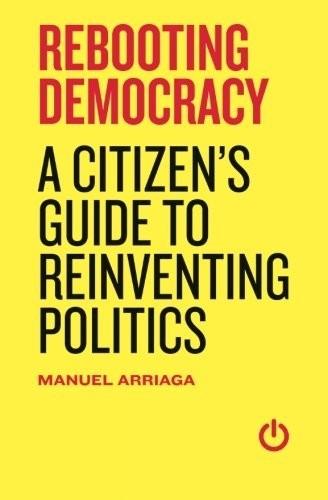
Rebooting Democracy: A Citizen's Guide to Reinventing Politics
by
Manuel Arriaga
Published 1 Jan 2014
[xxix] The latter matters because, as briefly touched upon in our earlier discussion of delegation, the corporate world itself needs to come to grips with “short-termism.” Shortsighted corporate managers will advocate any measure that might increase their short-term profits, even if doing so substantially increases the odds of bringing about the demise of their entire industry. [xxx] The inspiration for this name is drawn from the Long Now Foundation, whose goal is to foster long-term thinking. [xxxi] A somewhat related idea can be found in the writings of Thomas Jefferson, who argued for periodic constitutional conventions so that citizens would be able to collectively question—and, if deemed necessary, revise—the fundamental principles governing their society.

Lonely Planet Pocket San Francisco
by
Lonely Planet
and
Alison Bing
Published 31 Aug 2012
The military mess halls have been replaced by vegan-friendly Greens ( Click here ) and Off the Grid food trucks ( Click here ), and dockside Herbst Pavilion includes art fairs and wine-tasting in its arsenal (check the website for events). Warehouses now host cutting-edge theater at Magic Theatre and BATS ( Click here ) and the Long Now Foundation (http://longnow.org; bldg A, Fort Mason; 10:30am-5pm Mon-Fri, 11am-6pm Sat-Sun; Marina Blvd ), a non-profit sponsoring four-dimensional (time-based) art and technology projects. Eating 5 A16 Pizzeria $$ Offline map Google map SF’s James Beard Award–winning Neapolitan pizzeria requires reservations, then haughtily makes you wait in the foyer like a high-maintenance date.
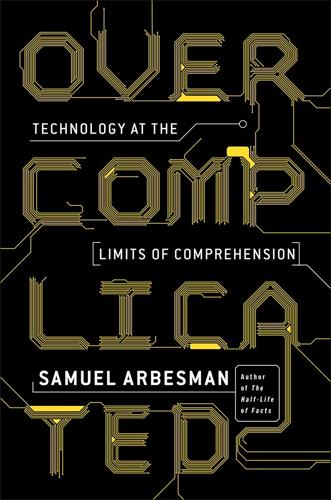
Overcomplicated: Technology at the Limits of Comprehension
by
Samuel Arbesman
Published 18 Jul 2016
With both respect and loathing, computer professionals call these monsters ‘legacy systems.’ Teasing a new function out of a legacy system is not done by command, but by conducting cautious alchemic experiments that, with luck, converge toward the desired outcome.” “Written on the Wind,” The Long Now Foundation, February 11, 1998, http://longnow.org/essays/written-wind/. pages of instructions for the 1040: Christopher Ingraham, “Charted: The Skyrocketing Complexity of the Federal Tax Code,” Washington Post, April 15, 2015, http://www.washingtonpost.com/blogs/wonkblog/wp/2015/04/15/charted-the-skyrocketing-complexity-of-the-federal-tax-code/.
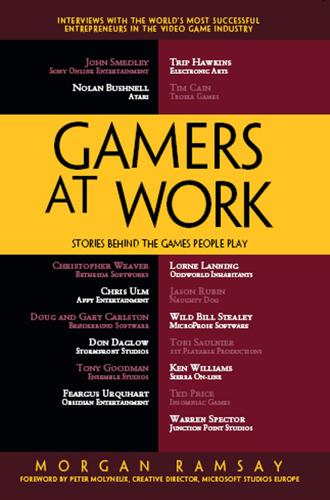
Gamers at Work: Stories Behind the Games People Play
by
Morgan Ramsay
and
Peter Molyneux
Published 28 Jul 2011
Then I moved back to New Zealand and started a vineyard. I now live in California and play guitar. On into the sunset … Doug: I started a few Internet companies. I now run one called SportsDashboards. I also sit on 11 nonprofit boards: Ploughshares Fund, MoveOn.org, Dominican University, Internews, Albanian American Enterprise Fund, The Long Now Foundation, Sweetwater Spectrum, Salzburg Seminar, NOVA, Carlston Family Foundation, and the Albanian American Development Foundation. Don Daglow Founder, Stormfront Studios Although Don Daglow founded Stormfront Studios, as Beyond Software, in 1988, he had already established himself as a pioneer.
…
Cheese Pizza Time Theatre, 36 Citizen Siege, 245–247 Civilization, 37, 51 cloud distribution, 190 Cobb, Ron, 226 cofounders lack of at Electronic Arts, 3 of Verant Interactive, 173 collaboration, 1st Playable, 277 Colossal Cave Adventure game, 194 Command Center, Tony Goodman, 62–63 commercial location Bethesda Softworks, 286 Naughty Dog, 307 community, 1st Playable, 277 competition Doug and Gary Carlston, 126, 131 of Electronic Arts, 6–7 faced by High Moon Studios, 254 Computer Quiz, 22 Computer Space, 17, 22 confidentiality, Tobi Saulnier, 273 conservative attitude, of Ken Williams, 200 console games, 186–188 3DO platform development for, 10–12 by Electronic Arts, 8–10 consultants, Wild Bill Stealey, 43 Consumer Electronics Show, 6, 43, 50, 56 consumer retail experience, Apple, 259 contracts Electronic Arts, 5 winning, 84 Cook, Zeb, 96 core businesses, 183 core hours, 310 corporate mindset, at SOE, 178–179 craftsmanship, 1st Playable, 277 Crash 3, 304–305 Crash Bandicoot, 297, 301 Crash Team Racing, 305 Creative Artists Agency (CAA), 109–110 creative directors, Insomniac Games, 327 creativity, stifled by reuse, 88 Cresap McCormick ' Paget, 38 Cresap McCormick, Wild Bill Stealey, 38 criticism dealing with, 180 of games, 89 Croner, Mel, 129 cross-platform online games, 186–188 Crow, Brad, 66–67 CUC International, 202–203 culture at Digital Chocolate, 14 at Electronic Arts, 7–8 at SOE, 180 studio, 31, 117–118 at Verant Interactive, 176 customer relations 1st Playable, 274 focus on at Sierra On-Line, 200 cutouts, Stealey, Wild Bill Stealey, 49 Cyan, 135–136 D D'D (Dungeons ' Dragons) Don Daglow, 144, 149, 151, 158 Tim Cain, 100–101 Dabney, Ted, 17–18, 20, 25, 32 Daglow, Don, 133–168 Daglow Entertainment, Don Daglow, 166 Daly, Ray, 123 Darkwatch game, 252–255 Davidson, Bob, 203 Davidson Software, acquisition of Sierra On-Line, 201–204 DazzleDraw, Doug and Gary Carlston, 129 DC Comics franchise, 185 Dean, Tim, 67 Decker, Tom, 101 Demilt, Eric, 96 Descent to Undermountain, Tim Cain, 94 designers, Sierra On-Line, 203–204 Deus Ex, 108 developers, at Electronic Arts, 4–5 development teams, successful, 255 dial-up time-sharing, invented by Wild Bill Stealey, 38 Digital Chocolate, 1, 12–15 digital distribution, at SOE, 188 Digital Domain, 216–217 digital-state machines, 20 direct distribution, 3 Disney Epic Mickey, 107, 112–115, 119 Disney, Junction Point Studios work with, 112–114 Disruptor, 319 Dombrower, Eddie, 142–143 Dominican University, 132 Doom, Don Daglow, 149 Dott, Eric 1830 board game, 50 Civilization, 51 down-the-barrel perspective, 288 downloadable content, 271 Dream Zone, 299 Dueling Digits, Doug and Gary Carlston, 123 Dungeons ' Dragons (D'D) Don Daglow, 144, 149, 151, 158 Tim Cain, 100–101 E EA (Electronic Arts), 47 Don Daglow, 136, 150, 160–161 Doug and Gary Carlston, 126 founder Trip Hawkins, 1–15 Earl Weaver Baseball, Don Daglow, 142, 145 Edlund, Richard, 216 education, of Ken Williams, 194 Eggs of Steel, 214 Eheler, Brian, 125 Eidos, 108 The Elder Scrolls, 281, 290 Electronic Arts (EA), 47 Don Daglow, 136, 150, 160–161 Doug and Gary Carlston, 126 founder Trip Hawkins, 1–15 Electronic Arts Partners, 324 employees benefits, 1st Playable, 264, 280 early, at Electronic Arts, 3 honesty with, 91 Ensemble Studios, cofounder Tony Goodman, 59–78 Entertainment Software Association (ESA), 183 Entertainment Software Ratings Board (ESRB), 182–183 entrepreneurship, Tony Goodman, 59–65 ESA (Entertainment Software Association), 183 ESRB (Entertainment Software Ratings Board), 182–183 Etak, 17 European operations, Wild Bill Stealey, 48 evergreen games, Doug and Gary Carlston, 127 EverQuest game, 169–178, 185, 187 experience, using at studios, 83 external advisors, 28, 111 F F-15 Strike Eagle, 37 Meier, Sid, 43 Wild Bill Stealey, 44 FaceFighter game, 257 Falcon 3.0, 55 Fallout New Vegas, 89 Tim Cain, 93–96 family life of John Smedley, 172 of Ken Williams, 195–196 of Nolan Bushnell, 23 Family Tree Maker, 127, 129, 131 Fargo, Brian, 94–96 fear-based decisions, danger of making, 244 Feargus Urquhart, 79–91 financial responsibility, Wild Bill Stealey, 45 Fiorito, John, 315 Firaxis Games, 37 Fletcher, Ed, 282, 285 Flight Simulator, Microsoft, 44 Flock, Kelly, 170, 174, 308 Floyd of the Jungle, Sid Meier, 42 Forbes, Walter, 202–203 founding team, lack of at Electronic Arts, 3 franchises Free Realms, 184, 189 overview, 253 SOE, 184–185 free to play Digital Chocolate, 12–13 overview, 188–189 FreeFall Associates, 5 Fries, Ed, 75 funding for Electronic Arts, 3 Juntion Point Studios, 109–110 for Obsidian Entertainment, 81 Oddmob, 249 Oddworld Inhabitants, 225–226, 228–230 for Sierra On-Line, 197–200 G Galactic Saga, Doug and Gary Carlston, 123 garage shop, 23 Garriott, Richard, 111 Garske, Chris, 234 Gates, Bill, 69 Gavin, Andy, 297–298 General Instrument, Wild Bill Stealey, 38 Genesis, Sega, 10 Gibson, Charlie, 211 Girl with a Stick, 322 going public, Doug and Gary Carlston, 131 Gold Box games, Don Daglow, 144, 154, 158 Goldman, Daniel, 248 Goldstein, Jack, 218 Goodman, Rick, 67 Goodman, Tony, 59–78 Granath, Herb, 282 Grant, Ken, 130 graphical massively multiplayer online games, 144–145 Gridiron, 281, 287 GT Interactive, 233–234 H Half-Life 2, Tim Cain, 100, 102–103 Halo, Tony Goodman, 76 Hammond, Eric, 5 hands-on leadership, 83–84 hardware focus on, 20 price of 3DO, 11 Harvard Doug and Gary Carlston, 124 Trip Hawkins, 2 Hasbro Interactive, 51 Hastings, Al, 315, 317–318, 320 Hastings, Brian, 315, 322 Hatch, Fred, 94 Hawkins, Trip, 1–15, 47, 300 Hellcat Ace game, 37 developing, 40 reviewed in Antic Magazine, 41 selling, 40 HessWare, 44 High Moon Studios, 251–256 hiring process at Electronic Arts, 7–8 at High Moon Studios, 252, 254 honesty with employees, 91 Hughes, John, 211 HVAC company, 41 I IBM, funding for Sierra On-Line from, 199 Icewind Dale, 86 iEntertainment Network, 37 independent studio, transforming internal development group into, 252–253 Infinity Engine, BioWare, 86 Insomniac Games, 303, 315–328 intellectual property licensing, 288 intellectual property rights, Tony Goodman, 72–73 interactive games, Digital Chocolate, 13–14 Interactive Magic, 37, 56 internal development group, transforming into independent studio, 252–253 Internews, 132 Interplay overview, 79 Tim Cain, 96 investments, skin in the game, 284 investors Don Daglow, 139–140 Doug and Gary Carlston, 129–130 Tobi Saulnier, 263 Ion Storm, 107 iTunes, 211 J Jack, Katie, 141–142 Jak and Daxter, 306, 308–309 Jensen, Benni, 285 Jochumson, Chris, 125 Jones, Chase, 116 Jones, Chris, 80, 105 Jostens, Inc, Doug and Gary Carlston, 131 Junction Point Studios, 107–119 Disney Epic Mickey, 112–115 funding, 109–110 during independent years, 112–113 mission statement, 117 overview, 107 partners, 111 role of Spector at, 118 startup, 108–109 studio culture, 117–118 K Kahn, Marty, 128 Kassar, Ray, 32 Keef the Thief, 299 Keith, Clinton, 254 Ken Williams, 193–207 Kid Pix, Doug and Gary Carlston, 127 King's Quest game, 199 Kleiner Perkins, 56 Knight Technologies, 170 Kroegel, Chuck, 144 Kung Zhu, 272 Kutaragi, Ken, 215 L La Russa, Tony, 145, 147–149 Landau, Yair, 178 Laudon, Angelo, 66–67 lawsuits, Atari, 28 leaders, cultivating, 116 The Learning Company (SoftKey), Doug and Gary Carlston, 131–132 Lefay, Julian, 285 legitimate software, 81 licenses for massively multiplayer online games, 185–186 middleware, 87 respecting, 84 Tobi Saulnier, 272 Living Books, Doug and Gary Carlston, 127–128 location, of Atari, 23 Lode Runner, Doug and Gary Carlston, 129 The Long Now Foundation, 132, 135 Lord of the Rings, Don Daglow, 158 Lorne Lanning, 209–250 Louie, Gillman, 55 LucasArts, 181–182, 185 Lucasfilm, 84 Lynch, Scott, 98 M M1 Tank Platoon, 48 Madden Football, Don Daglow, 158 Malibu Comics, 251, 256–257 management structure, Insomniac Games, 325–326 managers, at Electronic Arts, 7–8 market crash, Atari's role in, 33 marketing, at Verant Interactive, 176–177 markup method, 184 massively multiplayer online games, 169, 185–186.
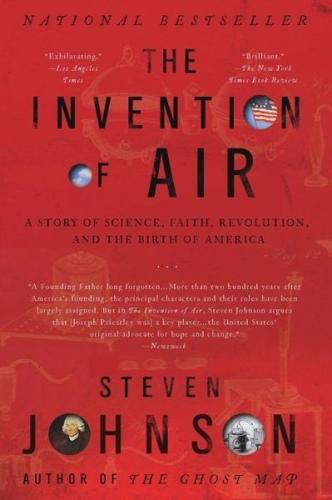
The Invention of Air: A Story of Science, Faith, Revolution, and the Birth of America
by
Steven Johnson
Published 26 Dec 2008
ACKNOWLEDGMENTS I’m grateful to several institutions for their willingness to let me work through the major themes of this book in public. First, NYU’s School of Journalism, for letting me teach a graduate seminar on Cultural Ecosystems, and my students there who contributed so many helpful ideas (and who, I’m thankful to report, shot down more than a few of my less helpful ones). My friends at the Long Now Foundation—Stewart Brand, Kevin Kelly, Brian Eno, Danny Hillis, and Alexander Rose—were kind enough to invite me to discuss the “long zoom” approach to cultural history at one of their seminars in long-term thinking in 2007. I was also lucky enough to be invited to discuss these issues onstage with Brian at the Institute of Contemporary Arts in London.
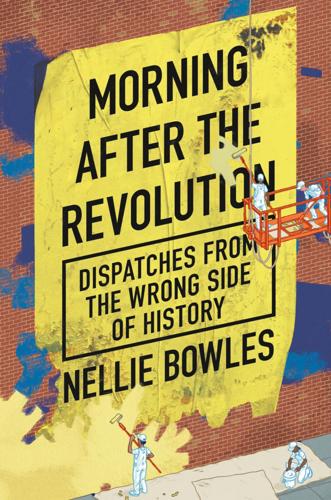
Morning After the Revolution: Dispatches From the Wrong Side of History
by
Nellie Bowles
Published 13 May 2024
A lot of gay men had to put on ill-fitting khakis and stand for photos by white picket fences before gay marriage could go from absurd to the law of the land. But that is not what the new members want. For the new members, being in the community means, more than anything else, that they hate those white picket fences. There is a sense that to be queer is mystical and maybe holy. The Long Now Foundation, a group that puts together events to encourage future-thinking and whose efforts are in part funded by Jeff Bezos, held an event in 2021 called, “Queering the Future: How LGBTQ Foresight Can Benefit All.” And so all America’s smart elites are queer. The term now indicates a worldview. An essay by a woman in a relationship with a man went viral in May 2021: “My straight boyfriend gave me a queer pandemic haircut—as he sawed through my thick mane, we invited queerness into the bathroom—and into our relationship.”
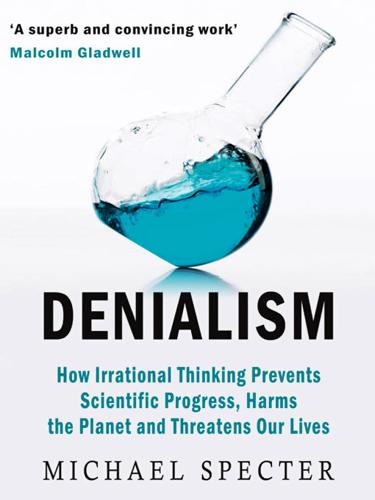
Denialism: How Irrational Thinking Hinders Scientific Progress, Harms the Planet, and Threatens Our Lives
by
Michael Specter
Published 14 Apr 2009
This report, issued in March 2009 under the auspices of the Woodrow Wilson International Center for Scholars, can be obtained from the Synthetic Biology Project (http://www.synbioproject.org/library/publications/archive/synbio2/). The ETC Group (Action Group on Erosion, Technology and Concentration) has taken the lead in calling for stricter oversight of this new discipline. The group poses thoughtful questions that demand thoughtful answers. On December 8, 2008, Steward Brand’s Long Now Foundation sponsored an unusually amicable debate between ETC’s Jim Thomas and Endy. The conversation provides a thorough airing of the issues and can be purchased on DVD at Amazon.com (the podcast is also available at no charge: http://fora.tv/media/rss/Long_Now_Podcasts/podcast-2008-11-17-synth-bio-debate.mp3).
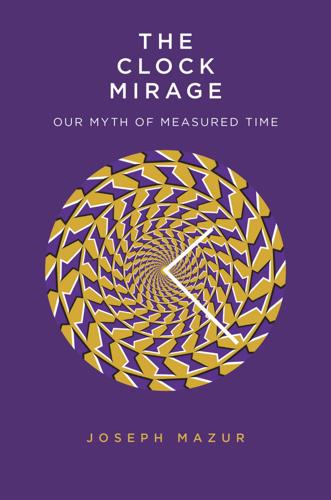
The Clock Mirage: Our Myth of Measured Time
by
Joseph Mazur
Published 20 Apr 2020
Willis Isbistor Milham, Time and Timekeepers, including the History, Construction and Accuracy of Clocks and Watches (New York: Macmillan, 1945). Olympic Racer Wins by One Hundredth of a Second 1. NASCAR timing score doesn’t measure beyond thousandths of a second, so the official margin of victory is listed as .000 seconds. 2. Ringing Bells, Beating Drums Epigraph: “The 10,000 Year Clock,” The Long Now Foundation, www.longnow.org/clock/. 1. Thomas Reid, “Reid’s Treatise on Watch and Clock Making,” Watchmaker and Jeweler 1, no. 1 (1869): 2. 2. “History of the Clock,” Stryker’s American Register and Magazine 4 (July 1850): 351. Note: the present clock has been restored. 3. Henry Sully, Règle artificielle du temps: Traité de la division naturelle et artificielle du temps . . . (1737) (facsimile ed., Whitefish, Mont.: Kessinger, 2010), 272–78. 4.
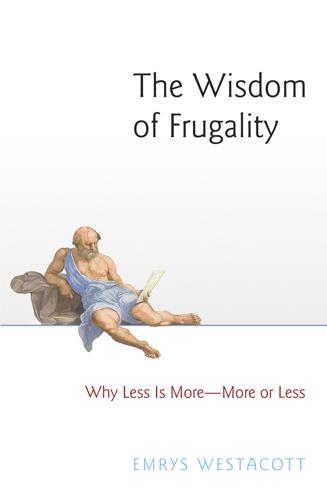
The Wisdom of Frugality: Why Less Is More - More or Less
by
Emrys Westacott
Published 14 Apr 2016
A similar motive has given rise to the Slow Movement, a general term for the various ways in which people seek to combat the frenetic pace of modern life. Examples of this trend, described in detail by Carl Honoré in In Praise of Slowness, include Slow Food, Slow Cities, Slow Sex (all originating in Italy), the Sloth Club (Japan), the Society for the Deceleration of Time (Austria), and the Long Now Foundation.9 The nostalgic component that generally seems to be present in any “back to basics” movement invites the criticism that the philosophical outlook associated with it (a) rests on a rose-tinted view of the past, and (b) is unsuited to the modern world. This distrust of the nostalgic sensibility is understandable.
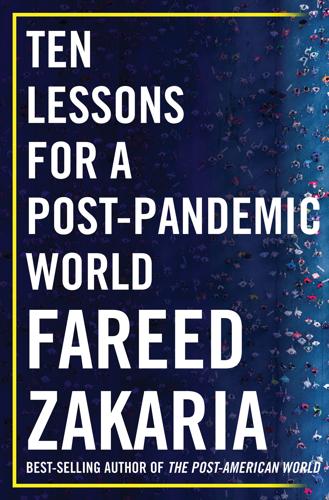
Ten Lessons for a Post-Pandemic World
by
Fareed Zakaria
Published 5 Oct 2020
Friedman, “How We Broke the World,” New York Times, May 30, 2020. 26 140 million acres: Paula vW Dáil, Hard Living in America’s Heartland: Rural Poverty in the 21st Century Midwest (Jefferson, NC: McFarland, 2015), 80. 26 “pandemics are optional”: Larry Brilliant, “Outbreaks Are Inevitable, but Pandemics Are Optional,” Long Now Foundation, YouTube, March 6, 2020 https://www.youtube.com/watch?v=nVWoHmURDTQ. 27 73% of all fresh vegetables and meat: “Will Wet Markets Be Hung Out to Dry After the Pandemic?,” Economist, May 26, 2020. 27 exotic trade: John Vidal, “ ‘Tip of the Iceberg’: Is Our Destruction of Nature Responsible for Covid-19?

Tools of Titans: The Tactics, Routines, and Habits of Billionaires, Icons, and World-Class Performers
by
Timothy Ferriss
Published 6 Dec 2016
He also co-founded the All Species Foundation, a nonprofit aimed at cataloging and identifying every living species on earth. In his spare time, he writes best-selling books, co-founded the Rosetta Project, which is building an archive of all documented human languages, and serves on the board of the Long Now Foundation. As part of the last, he’s investigating how to revive and restore endangered or extinct species, including the woolly mammoth. He might be the real-world “most interesting man in the world.” Behind the Scenes I attended the very first Quantified Self meet-up on September 10, 2008, at Kevin’s picturesque wood cabin-style home.
…
Now, of course, I’m likely to live longer than that. I’m in good health, etc. But nonetheless, I have 6,000-something days. It’s not very many days to do all the things I want to do. “I learned something from my friend Stewart Brand [founder of the Whole Earth Catalog, president of the Long Now Foundation], who organized his remaining days around 5-year increments. He says any great idea that’s significant, that’s worth doing, for him, will last about 5 years, from the time he thinks of it, to the time he stops thinking about it. And if you think of it in terms of 5-year projects, you can count those off on a couple hands, even if you’re young.”

The Rise of the Network Society
by
Manuel Castells
Published 31 Aug 1996
It moves back out of immediate human history and forwards into a wholly unspecifiable future.”82 In fact, the opposition between the management of glacial time and the search for timelessness anchors in contradictory positions in the social structure the environmentalist movement and the powers that be in our society, as I shall elaborate further in volume II. Concerned with the disappearance of the long-term view of time in our culture, in 1998 a group of scientists, artists, and business people in the San Francisco Bay area established The Long Now Foundation to promote an alternative conception of time based upon two main questions: “How do we make long-term thinking automatic and common instead of difficult and rare? How do we make the taking of long-term responsibility inevitable?”83 Besides establishing a web site, building a Long Now library, and organizing seminars and conferences to debate time and future making, the Foundation concentrated its effort on designing and manufacturing a new kind of clock, on the basis of an idea by computer designer Daniel Hillis.
…
Lille Grand Palais Convention Center Lillyman, William Lim, Hyun-Chin Lin, T. B. Lincoln, Thomas L. Ling, K. K. Linux living standards Lizzio, James R. Llerena, P. Lo, C. P. Lo, Fu-chen location: culture; electronics; employment; hightechnology; industry; see also place; space London Long Now Foundation Lorenz, E. Los Angeles Lovins, Amory B. Lovins, L. Hunter Lozano, Beverly Lukasiewicz, J. Lynch, Kevin Lynch, Ray Lyon, David Lyon, Jeff Macdonald, Stuart McGowan, James McGuire, William J. Machimura, T. machines/human beings Machlup, Fritz McKenzie, Alex Mackie, J. A. C. McKinsey Global Institute McLeod, Roger McLuhan, Marshall McMillan, C.
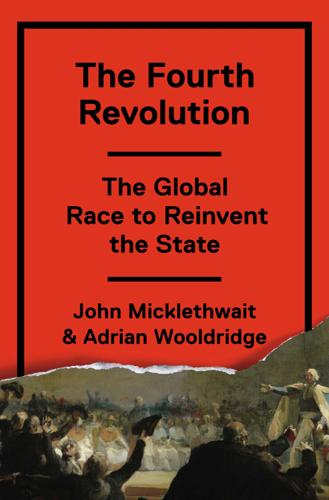
The Fourth Revolution: The Global Race to Reinvent the State
by
John Micklethwait
and
Adrian Wooldridge
Published 14 May 2014
“Old School Ties,” The Economist, March 10, 2012. 10. Ibid. 11. McKinsey & Company, “The Economic Impact of the Achievement Gap in America’s Schools,” April 2009, available at http://mckinseyonsociety.com/downloads/reports/Education/achievement_gap_report.pdf. 12. Philip K. Howard, “Fixing Broken Government” (seminar for the Long Now Foundation, San Francisco, January 18, 2011). 13. In U.S. dollars at constant prices since 2000. 14. James Q. Wilson, Bureaucracy: What Government Agencies Do and Why They Do It (New York: Basic Books, 1989), p. 326. 15. “Taming Leviathan,” The Economist, March 17, 2011. 16. “Whoops,” The Economist, November 2, 2013. 17.
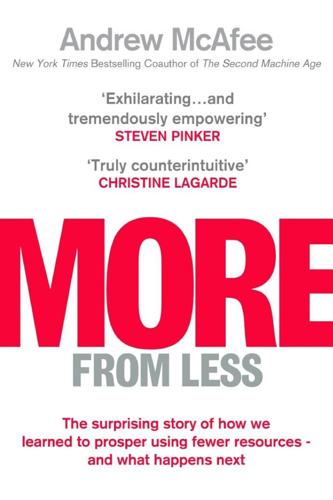
More From Less: The Surprising Story of How We Learned to Prosper Using Fewer Resources – and What Happens Next
by
Andrew McAfee
Published 30 Sep 2019
On energy Mike Shellenberger and Ramez Naam helped me be much less incorrect than I would have been otherwise; Allan Adams provided the same service around global warming. Alexander Rose and Andrew Warner listened to the bets I wanted to make about humanity’s future planetary footprint, and agreed to host them on the Long Bets site, which is part of the Long Now Foundation. Long Now was cofounded by Stewart Brand, whose Whole Earth Catalog I devoured when it was reproduced as a coffee-table book sometime around 1980. Some of it clearly stuck with me. Like so many others, I’m grateful to Stewart for helping us think different. My agent, consigliere, and friend, Rafe Sagalyn, not only helped me think through the book at every stage but also arranged for Scribner to publish it.
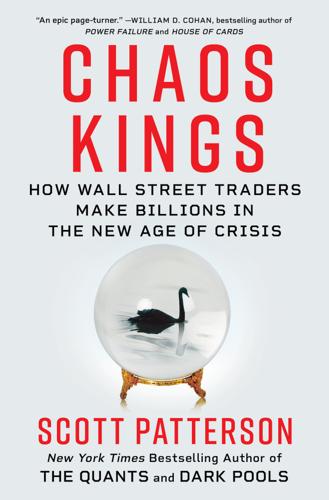
Chaos Kings: How Wall Street Traders Make Billions in the New Age of Crisis
by
Scott Patterson
Published 5 Jun 2023
These concoctions might provide a short-term benefit and feed more people, but over the long run—across generations—the impact could be disastrous on a global level, a risk that should never be taken, Taleb warned. Taleb sent his letter to Stewart Brand, creator of the Whole Earth Catalog and president of the Long Now Foundation, whose goal was to improve long-term thinking. Taleb, who’d briefly met Brand at the Brockman conference at SpaceX in 2009, was shocked by his reply. “The science of genetic engineering is far more precise than blind selective breeding, and for that reason it is even safer,” Brand wrote. “I think that the ghost in the GMO story is a misplaced idea of contagion.

Enlightenment Now: The Case for Reason, Science, Humanism, and Progress
by
Steven Pinker
Published 13 Feb 2018
I’m guessing he was referring to Norman Angell’s The Great Illusion, commonly misremembered as having predicted that war was impossible on the eve of World War I. In fact the pamphlet, first published in 1909, argued that war was unprofitable, not that it was obsolete. 17. Diamandis & Kotler 2012, p. 11. 18. Fossil power, guilt-free: Service 2017. 19. Jane Langdale, “Radical Ag: C4 Rice and Beyond,” Seminars About Long-Term Thinking, Long Now Foundation, March 14, 2016. 20. Second Machine Age: Brynjolfsson & McAfee 2016. See also Diamandis & Kotler 2012. 21. Mokyr 2014, p. 88; see also Feldstein 2017; T. Aeppel, “Silicon Valley Doesn’t Believe U.S. Productivity Is Down,” Wall Street Journal, July 16, 2016; K. Kelly, “The Post-Productive Economy,” The Technium, Jan. 1, 2013. 22.
…
Institutional Review Blog. http://www.institutionalreviewblog.com/2007/05/scott-atran-research-police-how.html. Ausubel, J. H. 1996. The liberation of the environment. Daedalus, 125, 1–18. Ausubel, J. H. 2007. Renewable and nuclear heresies. International Journal of Nuclear Governance, Economy, and Ecology, 1, 229–43. Ausubel, J. H. 2015. Nature rebounds. San Francisco: Long Now Foundation. http://phe.rockefeller.edu/docs/Nature_Rebounds.pdf. Ausubel, J. H., & Grübler, A. 1995. Working less and living longer: Long-term trends in working time and time budgets. Technological Forecasting and Social Change, 50, 113–31. Ausubel, J. H., & Marchetti, C. 1998. Wood’s H:C ratio. https://phe.rockefeller.edu/PDF_FILES/Wood_HC_Ratio.pdf.

The new village green: living light, living local, living large
by
Stephen Morris
Published 1 Sep 2007
“I find things and I found things.Things I find include tools, ideas, books, and people, which I blend and purvey.Things I’ve founded and co-founded include the Trips Festival (1966), Whole Earth Catalog (1968), Hackers Conference (1984),The WELL (1984), Global Business Network (1988), and The Long Now Foundation (1996).” 154 chapter 7 : Whole Earth Catalog Stewart Brand: “ “ Environmental health requires peace, prosperity, and continuity.” Information Wants To Be Free. Information also wants to be expensive. Information wants to be free because it has become so cheap to distribute, copy, and recombine — too cheap to meter.

Is the Internet Changing the Way You Think?: The Net's Impact on Our Minds and Future
by
John Brockman
Published 18 Jan 2011
Everyone in my guild has his or her own guild, each of which is largely different from mine. I’m probably not considered a member of some of them. My guild nowadays consists of Danny Hillis, Brian Eno, Peter Schwartz, Kevin Kelly, John Brockman, Alexander Rose, and Ryan Phelan. Occasionally we intersect institutionally via the Long Now Foundation, Global Business Network, or Edge.org. One’s guild is a conversation extending over years and decades. I hearken to my gang because we have overlapping interests, and my gang keeps surprising me. Familiar as I am with them, I can’t finish their sentences. Their constant creativity feeds my creativity, and I try to do the same for them.

The Industries of the Future
by
Alec Ross
Published 2 Feb 2016
Granted, the bucardo didn’t live long: Nathaniel Rich, “The Mammoth Cometh,” New York Times Magazine, March 2, 2014, http://www.nytimes.com/2014/03/02/magazine/the-mammoth-cometh.html?ref=magazine&_r=0. In 2012, the Revive & Restore project: “Revive and Restore,” https://www.facebook.com/ReviveandRestoreProject/info. As Revive & Restore sees it: “Revive and Restore,” Long Now Foundation, http://longnow.org/revive/. As with the bucardo: Rich, “The Mammoth Cometh.” Efforts are already under way: Ibid. The United States is the number one: Richard van Noorden, “Global Mobility: Science on the Move,” Nature, October 17, 2012, http://www.nature.com/news/global-mobility-science-on-the-move-1.11602.

The Cancer Chronicles: Unlocking Medicine's Deepest Mystery
by
George Johnson
Published 26 Aug 2013
Lineweaver, “Cancer Tumors as Metazoa 1.0: Tapping Genes of Ancient Ancestors,” Physical Biology 8, no. 1 (February 1, 2011): 015001. 26. detailed computer simulations: The USC program, like the others, is described on the National Cancer Institute’s Physical Sciences in Oncology website. [http://physics.cancer.gov/centers/adv_usc.asp] 27. a Tinkertoy computer: A. K. Dewdney, “A Tinkertoy Computer That Plays Tic-tac-toe,” Scientific American 261, no. 4 (October 1989): 120–23. 28. a giant clock: Described on the Long Now Foundation website. [http://longnow.org] 29. told an audience of oncologists: Coffey, “Integrating and Leveraging the Physical Sciences.” 30. another of his ambitious machines: Described on the Applied Proteomics website. [http://www.appliedproteomics.com] 31. concentrating on the proteome: Interviews with Daniel Hillis, November 26, 2010, and David Agus, November 29, 2010, Los Angeles. 32. working for years on mapping the proteome: See, for example, Bonnie S.

The Human City: Urbanism for the Rest of Us
by
Joel Kotkin
Published 11 Apr 2016
BOWRING, Philip. (2012, July 5). “South Korea’s Population Vacuum” Asia Sentinel, http://www.asiasentinel.com/society/south-koreas-population-vacuum/. BRADSHER, Keith. (2002, December 27. “A High Tech Fix for One Corner of India,” New York Times. BRAND, Stewart. (2005, April 8). “Cities & Time,” The Long Now Foundation, http://longnow.org/seminars/02005/apr/08/cities-and-time/. ——— (n. d.). “Urban squatters save the world,” McKinsey & Company, http://voices.mckinseyonsociety.com/urban-squatters-save-the-world/. BRANIGAN, Tania. (2011, October 2). “China becomes an urban nation at breakneck speed,” The Guardian, http://www.theguardian.com/world/2011/oct/02/china-becomes-an-urban-nation. ——— (2011, October 3) “China’s rural poor left stranded as urbanites race ahead,” The Guardian, http://www.theguardian.com/world/2011/oct/03/china-rural-poor-left-stranded.
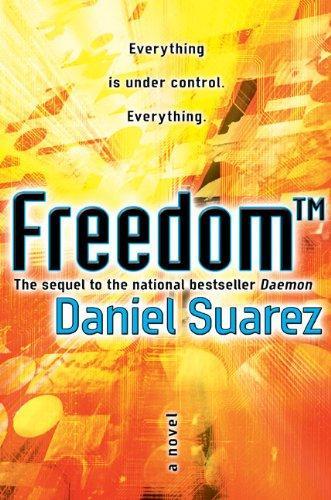
Freedom
by
Daniel Suarez
Published 17 Dec 2009
The research and innovations of the following groups and institutions also aided greatly in the creation of this book: the National Renewable Energy Laboratory, Sandia National Laboratories, California Institute of Technology, the people and State of Iowa, and the Ames Research Center. Thanks also to Stewart Brand and the entire Long Now Foundation for promoting long-term thinking in our institutions and culture. Thanks to Dan G. and Don T. for giving me an interesting forum for my crazy ideas. Thanks as well to Adam Winston for his much-appreciated insights on early drafts of this book. Also, sincere thanks to my wonderful literary agent, Bridget Wagner, at Sagalyn Literary Agency, and also to my editor at Dutton, the saintly and talented Ben Sevier.
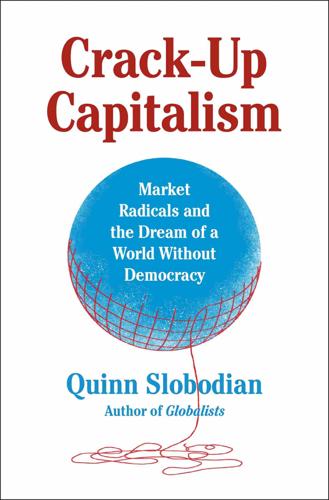
Crack-Up Capitalism: Market Radicals and the Dream of a World Without Democracy
by
Quinn Slobodian
Published 4 Apr 2023
Curtis Yarvin, “Against Political Freedom,” Unqualified Reservations, May 25, 2007, https://www.unqualified-reservations.org/2007/08/against-political-freedom/. 95. Yarvin, “A Formalist Manifesto.” CHAPTER 10: SILICON VALLEY COLONIALISM 1. Paul Romer, “A Theory of History, with an Application,” The Long Now Foundation, May 18, 2009, https://longnow.org/seminars/02009/may/18/theory-history-application/. 2. Paul Romer, “Escape from the Great Distress,” Issues in Science and Technology (Fall 2012): 65. 3. Romer, “A Theory of History, with an Application.” 4. See Evgeny Morozov, To Save Everything, Click Here: The Folly of Technological Solutionism (New York: PublicAffairs, 2013). 5.
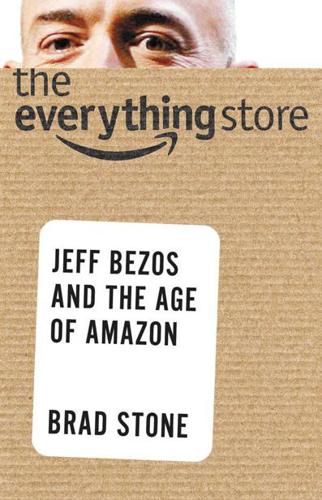
The Everything Store: Jeff Bezos and the Age of Amazon
by
Brad Stone
Published 14 Oct 2013
Bezos coordinates closely with the creators of the Clock of the Long Now and oversees its quarterly review sessions, which the clock engineers call Ticks. “He’s hell on the details and in the thick of the design and very strict on where costs are going,” says Stewart Brand, the cochairman of the Long Now Foundation. Bezos and MacKenzie are personally involved in the Bezos Family Foundation, which doles out education grants and mobilizes students to help other young people in impoverished countries and disaster zones. The foundation is run by Jackie and Mike Bezos, and Christina Bezos Poore and Mark Bezos, Jeff’s siblings, are directors.

More Everything Forever: AI Overlords, Space Empires, and Silicon Valley's Crusade to Control the Fate of Humanity
by
Adam Becker
Published 14 Jun 2025
Martin Luther King, Jr.,” StarTrek.com, January 16, 2023, www.startrek.com/news/nichelle-nichols-remembers-dr-king. 67 Benjamin Russell, “Far Beyond the Stars,” Incredible Tales of Scientific Wonder, September 1953. 68 Mike Wall, “Earth from Space: ‘Overview Effect’ Could Help Troubled Country, Astrophysicist Neil deGrasse Tyson Says,” Space.com, June 3, 2020, www.space.com/overview-effect-amid-us-crisis-neil-degrasse-tyson.html. 69 Stewart Brand, “‘Whole Earth’ Origin…,” Long Now Foundation, accessed June 12, 2024, https://sb.longnow.org/SB_homepage/WholeEarth_buton.html. 70 Frank, Light of the Stars, 67–70. 71 M. H. Hecht et al., “Detection of Perchlorate and the Soluble Chemistry of Martian Soil at the Phoenix Lander Site,” Science 325, no. 5936 (2009): 64–67, www.science.org/doi/10.1126/science.1172466. 72 Carl Sagan, Pale Blue Dot: A Vision of the Human Future in Space (New York: Ballantine, 1997), 6–7. 73 Stirone, “Mars Is a Hellhole”; Lex Fridman, “Elon Musk: Neuralink, AI, Autopilot, and the Pale Blue Dot | Lex Fridman Podcast #49,” November 12, 2019, in Lex Fridman Podcast, YouTube, www.youtube.com/watch?

What Technology Wants
by
Kevin Kelly
Published 14 Jul 2010
New York: Vintage Books, p. 24. 195 50,000 per year: John H. Lawton and Robert M. May. (1995) Extinction Rates. Oxford: Oxford University Press. 196 the future with a short distance: Paul Saffo. (2008) “Embracing Uncertainty: The Secret to Effective Forecasting.” Seminars About Long-term Thinking. San Francisco: The Long Now Foundation. http://www.longnow.org/seminars/02008/jan/11/embracing-uncertainty-the-secret-to-effective-forecasting/. 196 some kind of consequence of that: Kevin Kelly and Paula Parisi. (1997) “Beyond Star Wars: What’s Next for George Lucas.” Wired, 5 (2). http://www.wired.com/wired/archive/5.02/fflucas.html. 197 “they may never acknowledge the void”: Langdon Winner. (1977) Autonomous Technology: Technics-Out-of-Control as a Theme in Political Thought.
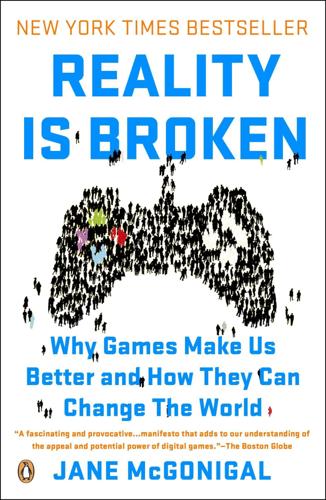
Reality Is Broken: Why Games Make Us Better and How They Can Change the World
by
Jane McGonigal
Published 20 Jan 2011
We are as gods and have to get good at it.”1 Brand is perhaps best known as the founder of the Whole Earth Catalog, a countercultural catalog of “tools and ideas to shape the environment” published from 1968 to 1972. (When he launched that catalog, he wrote, “We are as gods and might as well get good at it.”)2 In 1996 he cofounded the Long Now Foundation, a San Francisco-based foundation dedicated to long-term thinking and responsibility—for the earth, and for the survival of the human species—over the next ten thousand years and beyond. If we want to stay on this planet for anywhere near that long, Brand says, we have to become better at strategically affecting our ecosystem.

Surveillance Valley: The Rise of the Military-Digital Complex
by
Yasha Levine
Published 6 Feb 2018
According to Fred Turner’s From Counterculture to Cyberculture, Engelbart described himself as “very empathetic to the counterculture’s notions of community and how that could help with creativity, rationality and how a group works together” (109). 29. Richard Brautigan, “All Watched Over by Machines of Loving Grace,” in All Watched Over by Machines of Loving Grace (San Francisco: Communication Company, 1967). 30. Quoted in Turner, From Counterculture to Cyberculture, 128. 31. “Bio… Stewart Brand,” The Long Now Foundation, http://sb.longnow.org/SB_homepage/Bio.html. 32. Turner, From Counterculture to Cyberculture, 135. 33. Michael Schrage, “Hacking Away at the Future,” Washington Post, November 18, 1984. 34. Hackers: Wizards of the Electronic Age (Arlington, VA: PBS, 1985), short film. 35. Stewart Brand, “Keep Designing,” Whole Earth Review, May 1985. 36.
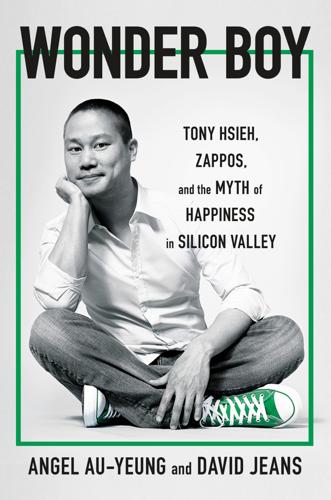
Wonder Boy: Tony Hsieh, Zappos, and the Myth of Happiness in Silicon Valley
by
Angel Au-Yeung
and
David Jeans
Published 25 Apr 2023
named Larry Page and Sergey Brin: Board of Trustees page on The Exploratorium website, https://www.exploratorium.edu/about/board-of-trustees/craig-silverstein, accessed October 23, 2022. “NYU blended seamlessly into the urban jungle of Manhattan”: “Helping Revitalize a City|Hsieh, Tony,” YouTube, posted by Long Now Foundation, May 1, 2020, https://www.youtube.com/watch?v=aQ0wo-pczoI. weddings and other catered events: Hsieh, Delivering Happiness, 26. for the federal government: Hsieh, Delivering Happiness, 26. code name “Secret”: Hsieh, Delivering Happiness, 26. A photograph taken on that day: Provided by anonymous source.
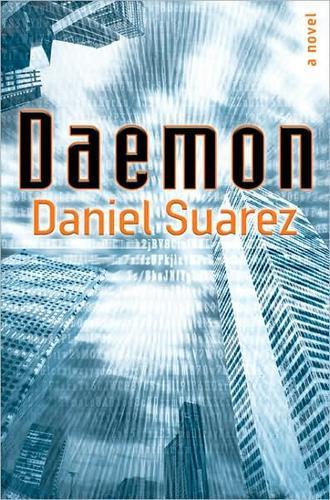
Daemon
by
Daniel Suarez
Published 1 Dec 2006
On the long journey to get this book published, I’ve met countless people who gave both their time and effort to pass Daemon on to others. I would be remiss if I did not show my appreciation to the following folks: Rick Klau and the whole gang at Google for finding a needle in a haystack. Stewart Brand and Peter Schwartz of the Long Now Foundation for opening so many doors. Jeffrey Rayport for making key connections. Don Donzal and the Ethicalhacker.net team for checking the details. John Robb at Global Guerrillas for bringing serious folks to the table. Jim Rapoza at eWeek for being the first to note Daemon in print. Craig Newmark of Craigslist for being cool to an unknown writer.
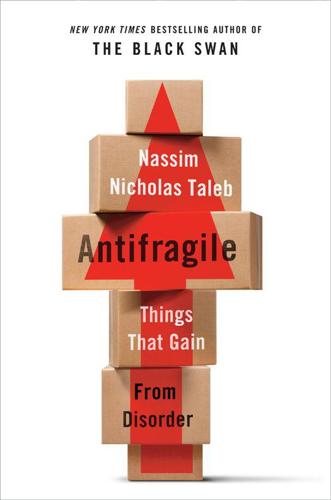
Antifragile: Things That Gain From Disorder
by
Nassim Nicholas Taleb
Published 27 Nov 2012
Note that the turkey problem is an evolution of Russell’s chicken (The Black Swan). Rousseau: In Contrat Social. See also Joseph de Maistre, Oeuvres, Éditions Robert Laffont. BOOK II: Modernity and the Denial of Antifragility City-states: Great arguments in support of the movement toward semiautonomous cities. Benjamin Barber, Long Now Foundation Lecture (2012), Khanna (2010), Glaeser (2011). Mayors are better than presidents at dealing with trash collection—and less likely to drag us into war. Also Mansel (2012) for the Levant. Austro-Hungarian Empire: Fejtö (1989). Counterfactual history: Fejtö holds that the first war would have been avoided.
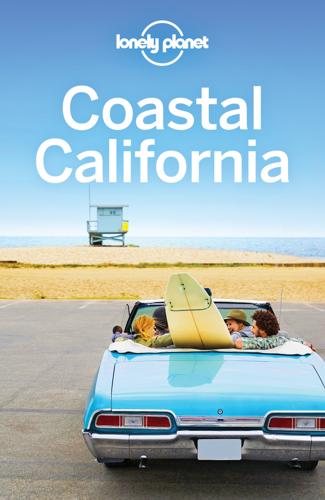
Coastal California Travel Guide
by
Lonely Planet
The Marina, Fisherman's Wharf & the Piers oInterval Bar & CafeBAR ( MAP GOOGLE MAP ; www.theinterval.org; 2 Marina Blvd, Fort Mason Center, Bldg A; h10am-midnight; g10, 22, 28, 30, 47, 49) Designed to stimulate discussion of philosophy and art, the Interval is a favorite spot in the Marina for cocktails and conversation. It's inside the Long Now Foundation, with floor-to-ceiling bookshelves, which contain the canon of Western lit, rising above a glorious 10,000-year clock – a fitting backdrop for a daiquiri, gimlet or aged Tom Collins, or single-origin coffee, tea and snacks. oBuena Vista CafeBAR ( MAP GOOGLE MAP ; %415-474-5044; www.thebuenavista.com; 2765 Hyde St; h9am-2am Mon-Fri, 8am-2am Sat & Sun; W; g19, 47, jPowell-Hyde) Warm your cockles with a prim little goblet of bitter-creamy Irish coffee, introduced to America at this destination bar that once served sailors and cannery workers.
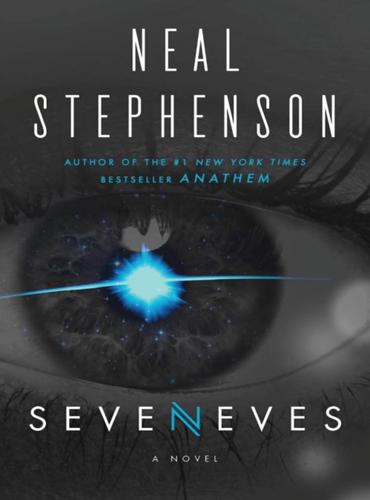
Seveneves
by
Neal Stephenson
Published 19 May 2015
Thanks also to James Gwertzman for introducing me to Ed and for his advice and feedback on this front. Ben Hawker of Weta Workshop read the manuscript and pointed out that Cradle would be rusty, a detail that had somehow escaped me; hasty last-minute alterations ensued. Stewart Brand and Ryan Phelan, by dint of their connection with the Long Now Foundation’s Revive and Restore Initiative, had much useful background to supply on the genetic challenges associated with reviving species from small breeding populations. While the first two parts of the story are a tale of straight-up global disaster and hastily improvised technology, I always viewed the third part of it as an opportunity to showcase many of the more positive ideas that have emerged, over the last century, from the global community of people interested in space exploration.
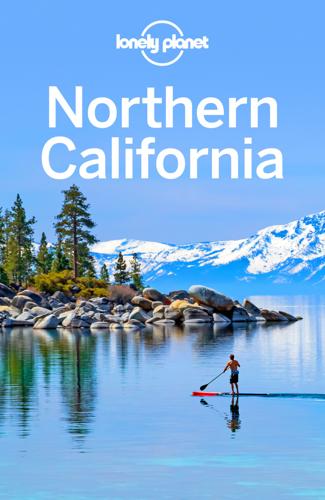
Northern California Travel Guide
by
Lonely Planet
The Marina, Fisherman's Wharf & the Piers oInterval Bar & CafeBAR ( MAP GOOGLE MAP ; www.theinterval.org; 2 Marina Blvd, Fort Mason Center, Bldg A; h10am-midnight; g10, 22, 28, 30, 47, 49) Designed to stimulate discussion of philosophy and art, the Interval is a favorite spot in the Marina for cocktails and conversation. It's inside the Long Now Foundation, with floor-to-ceiling bookshelves, which contain the canon of Western lit, rising above a glorious 10,000-year clock – a fitting backdrop for a daiquiri, gimlet or aged Tom Collins, or single-origin coffee, tea and snacks. oBuena Vista CafeBAR ( MAP GOOGLE MAP ; %415-474-5044; www.thebuenavista.com; 2765 Hyde St; h9am-2am Mon-Fri, 8am-2am Sat & Sun; W; g19, 47, jPowell-Hyde) Warm your cockles with a prim little goblet of bitter-creamy Irish coffee, introduced to America at this destination bar that once served sailors and cannery workers.
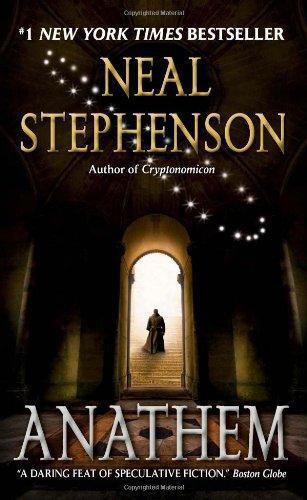
Anathem
by
Neal Stephenson
Published 25 Aug 2009
“It makes you wonder about the Cousins,” I said, thinking back to a wild notion that Arsibalt had raised last night: that the Cousins might have come, not just from another solar system, but from another cosmos. “Yes,” Criscan said, “it makes you wonder about the Cousins.” ACKNOWLEDGMENTS ANATHEM COULD NOT HAVE been written had the following not come first: the Millennium Clock project being carried out by Danny Hillis and his collaborators at the Long Now Foundation, including Stewart Brand and Alexander Rose. a philosophical lineage that can be traced from Thales through Plato, Leibniz, Kant, Gödel, and Husserl. the Orion project of the late 1950s and early 1960s. The author is, therefore, indebted to many more people than can comfortably be listed on a traditional acknowledgments page.